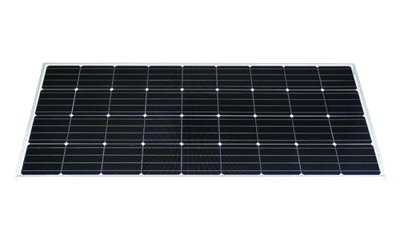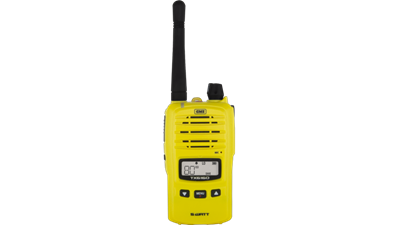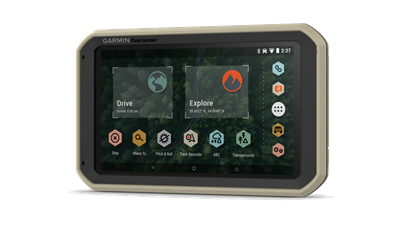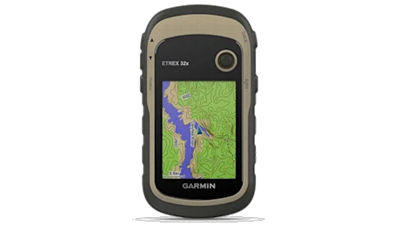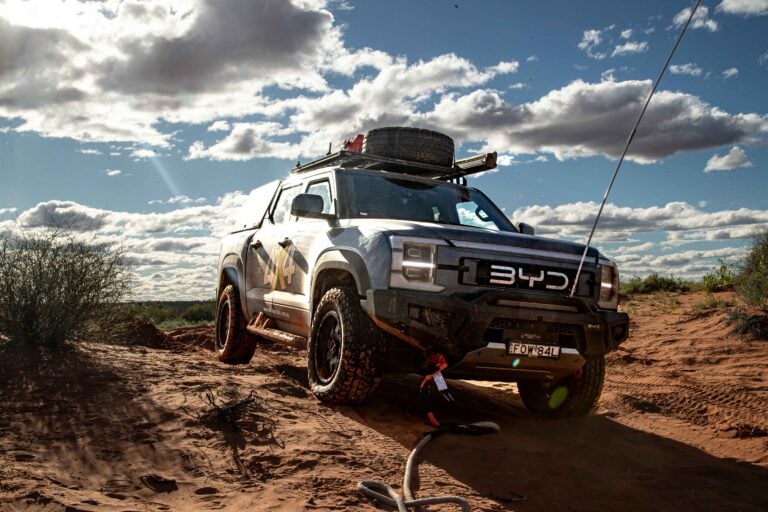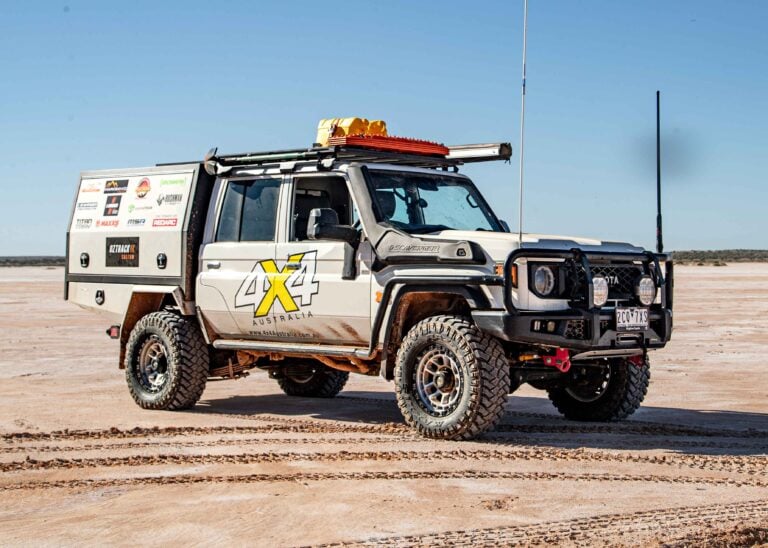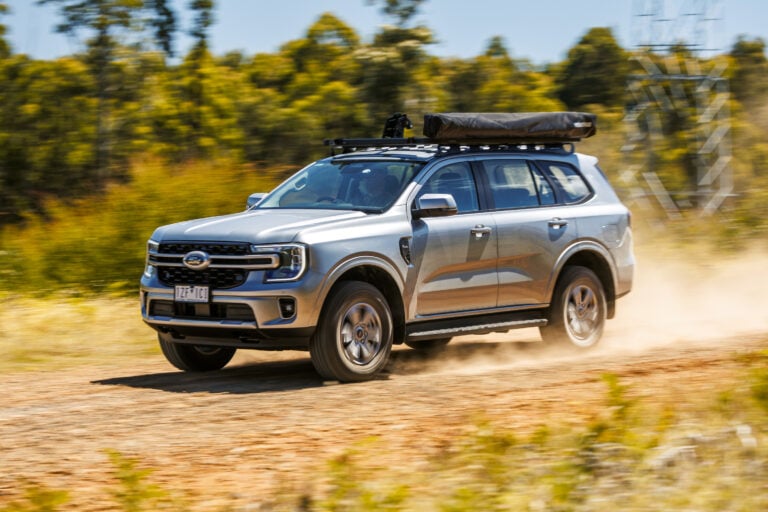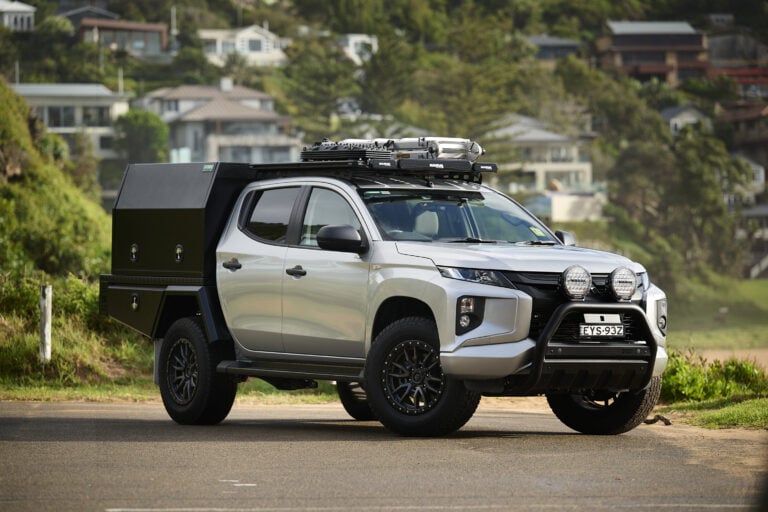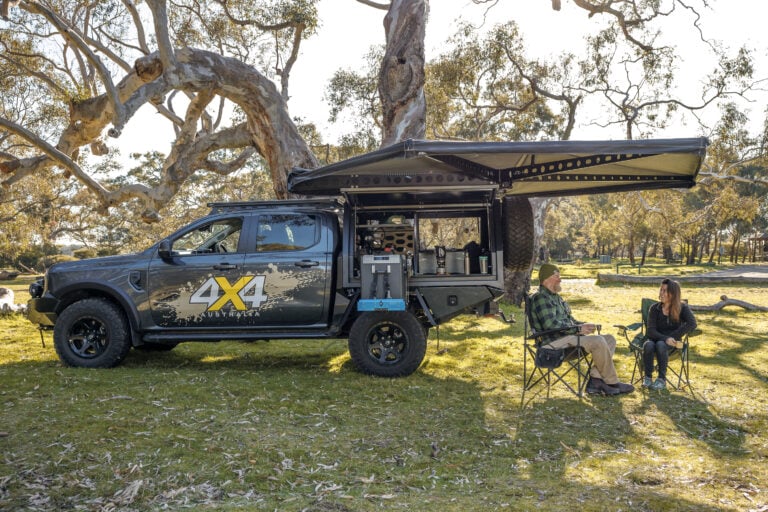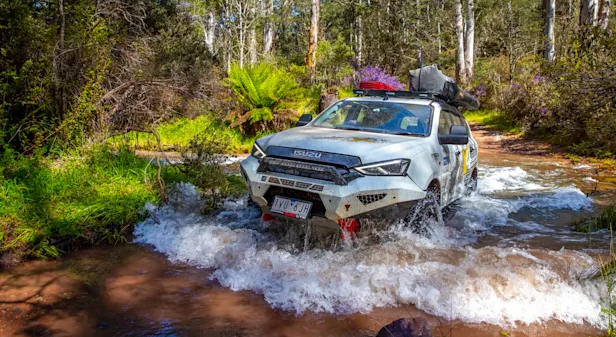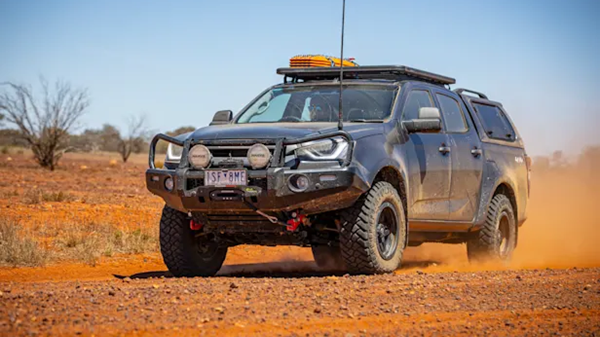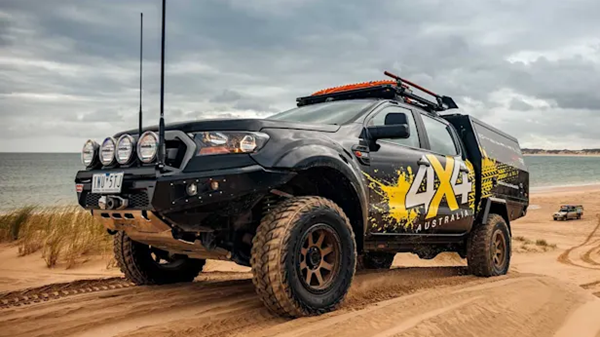Isuzu Ute Australia (IUA) expanded its MU-X wagon model range in early April by adding the 1.9-litre turbo-diesel engine to the line-up in both 4×2 and 4×4 drivetrains.
The small oiler is available in entry-level LS-M specification in both drivetrain options, while it’s also available in the mid-spec LS-U 4×4 variant. While the existing 3.0L turbo-diesel engine makes a claimed 140kW and 450Nm, the smaller 1.9-litre diesel engine produces a more modest 110kW and 350Nm.
In most other markets, the 1.9L mill is the only engine option for the MU-X and D-MAX, but the Australian arm of Isuzu campaigned its head office to update and retain the long-serving 4JJ 3.0L engine for our market. Little wonder when you consider how popular both the MU-X and D-MAX are for towing trailers and hauling heavy loads, thanks largely to the extra output developed by the larger engine.
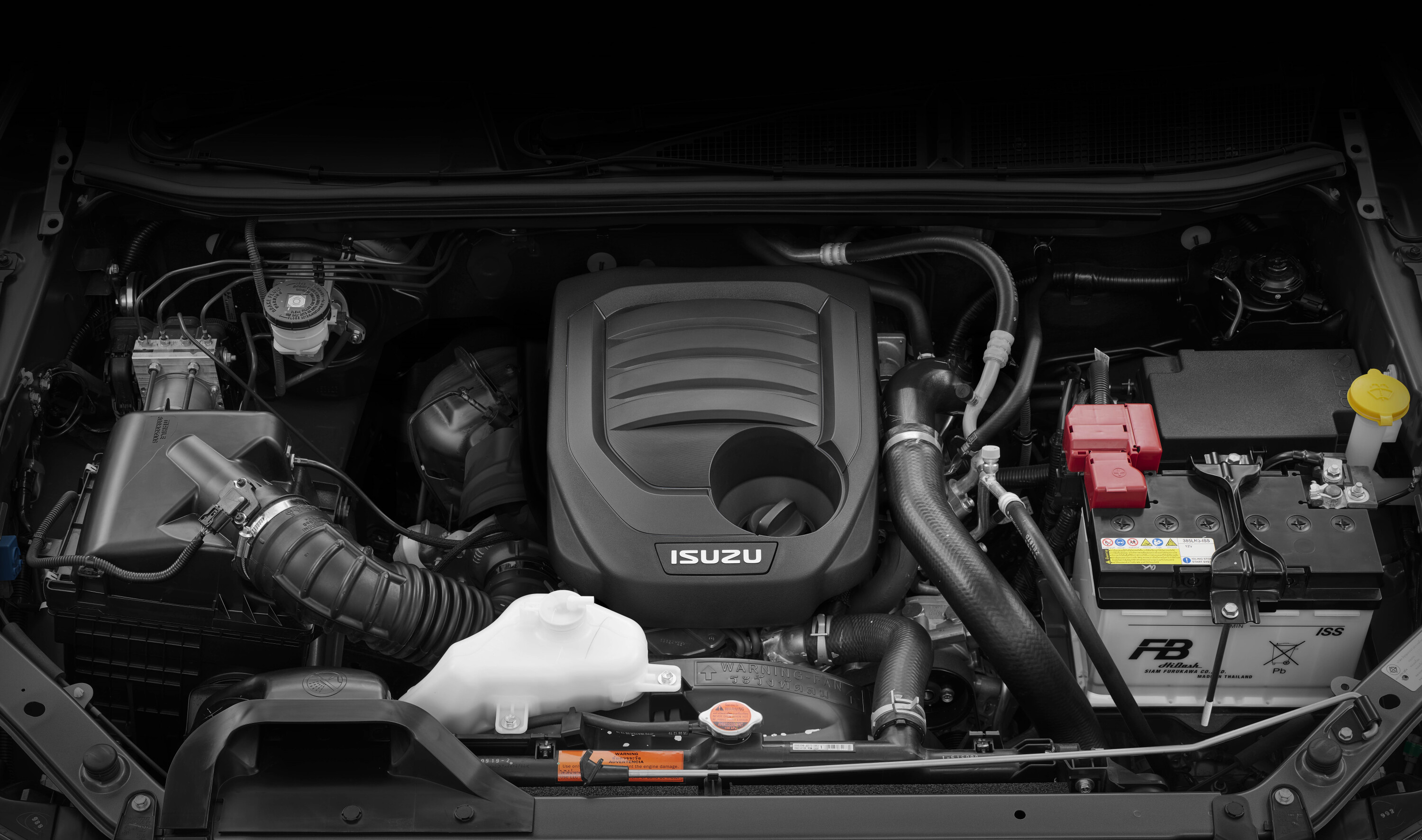
Now, however, IUA has also introduced the RZ4E-TC 1.9-litre engine to the Australian market as a more frugal alternative to the 3.0-litre powerplant. On the combined fuel consumption cycle the 1.9L achieves a claimed 7.4L/100km in both 4×2 and 4×4 models, while the 3.0L achieves 7.8L/100km in 4×2 MU-X and 8.3L/100m in 4×4 MU-X models. The newer and smaller engine is also cleaner in terms of CO2 output.
The 1.9L engine has also been introduced in select D-MAX ute models; although, the 3.0L engine remains the predominant engine across the range. The lower fuel consumption figure of the 1.9 engine will help IUA with the incoming New Vehicle Efficiency Standard (NVES) which, as a company that sells just two diesel-fuelled models, would struggle to meet.
IUA’s push to keep the 4JJ 3.0L engine was a smart move, as our initial drive of the 1.9 MU-X reveals it’s a lot busier on the open road. The launch drive was relatively short, but covered suburban roads and highways. We had the opportunity to drive 3.0L-powered vehicles earlier in the day and when we swapped over to the 1.9 we found you really have to squeeze the accelerator pedal down a lot more to motivate the MU-X, especially on hills or when overtaking. Our vehicle was quite heavily laden, with four adult passengers and luggage in the cargo space.
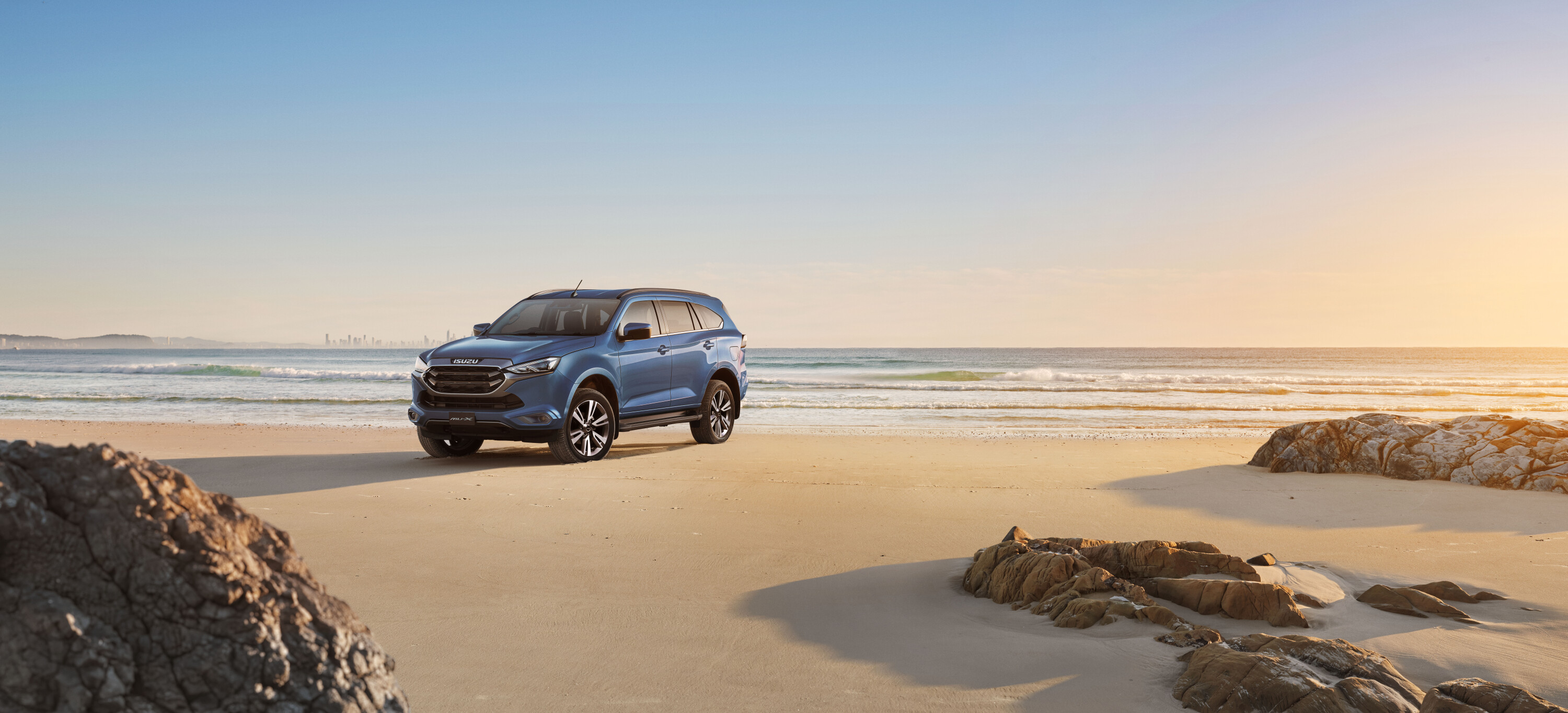
The 1.9 works the six-speed automatic transmission a lot more and it needs to kick back into lower gears to maintain speed in accordance with the throttle input. The Aisin six-speed is a great transmission and does the job well, but you notice it working harder behind the smaller capacity engine.
Thankfully, the 1.9 is a more modern and refined engine than the 3.0 and as such is not as harsh and noisy as the bigger mill, producing far less vibration. Had IUA not been able to convince head office to retain the 3.0 for our market, we reckon it would have been the death knell for the company in Australia. Die-hard customers who like to travel and tow with their MU-X wagons and D-MAX utes would have stayed away in droves from the 1.9.
That said, the towing capacity of 1.9-powered MU-X models is a relatively impressive 3000kg (down from 3500kg with the 3.0L), while GCM is 5500kg. Gross Vehicle Mass (GVM) is dependent on drivetrain, with 4×2 and 4×4 models tipping the scales 2700kg and 2800kg respectively. The lighter weight of the 1.9-litre models gives them a higher payload than 3.0L variants, with the MU-X LS-M 1.9L 4×4 able to carry up to 735kg.
All 2024 MU-X wagons get the full suite of Isuzu’s Intelligent Driver Assistance System (IDAS) which includes AEB with Turn Assist; Forward Collision Warning; Traffic Sign Recognition; Lane Departure Warning; Lane Departure Prevention; Lane Keeping Assist; Emergency Lane Keeping; Blind Spot Monitoring; Rear Cross Traffic Alert; Trailer Sway Control; and a total of eight airbags.
Isuzu has listened to the complaints from reviewers and owners about the uber-intrusive driver control systems on the MU-X and has toned them down a bit so that they don’t bug you as much with beeps and boings, or intervene erratically when keeping you in your lane.
While we give Isuzu credit for offering a comprehensive safety suite across the whole range, it still only offers tyre pressure monitoring on upper spec models. We reckon TPMS is a more important safety feature than some of other electronic aids that are included just to achieve a five-star safety rating. I mean, how many times do you need to check your rear seat? It was still there every time the dashboard told me to check it!
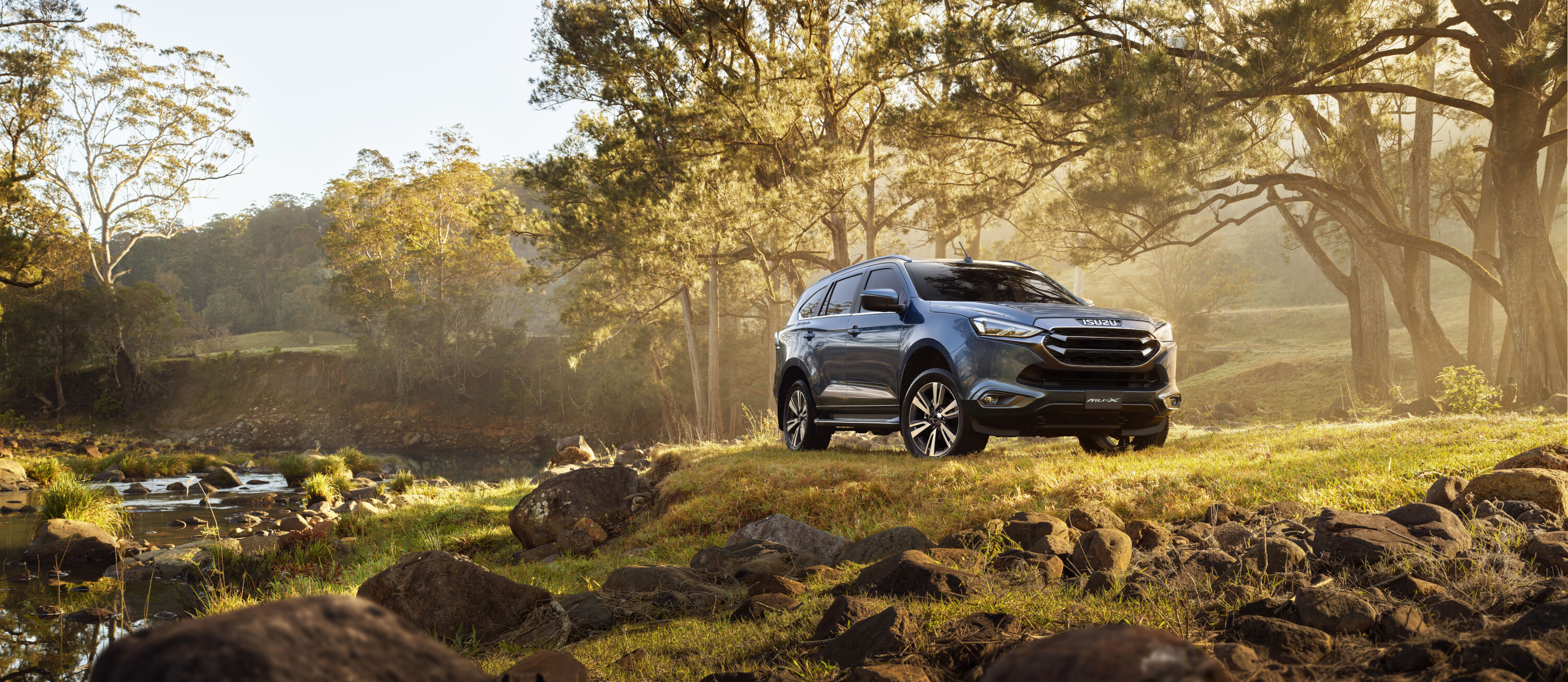
The MU-X LS-M grade gets cloth interior trim as standard; remote keyless entry; a seven-inch infotainment screen with Apple and Android phone mirroring; four speakers; auto air conditioning with rear vents and controls for rear seat passengers; 17-inch alloy wheels; and LED headlights.
Step up to the LS-U and you get TPMS; 18-inch alloys; rear privacy glass; auto door locks; power adjustment for the driver’s seat; a leather-wrapped steering wheel and gear shifter; a nine-inch centre screen with eight speaker sound system; wireless CarPlay and Android connection; and model-specific trim colourways.
Both models are well-appointed family wagons and the 4×4 variants have real off-road potential with dual-range part-time 4×4, a locking rear differential (RDL) and a rough terrain mode that keeps the traction control (ETC) operational across the front axle when you engage the RDL. Plus, it sharpens up the performance of the ETC.
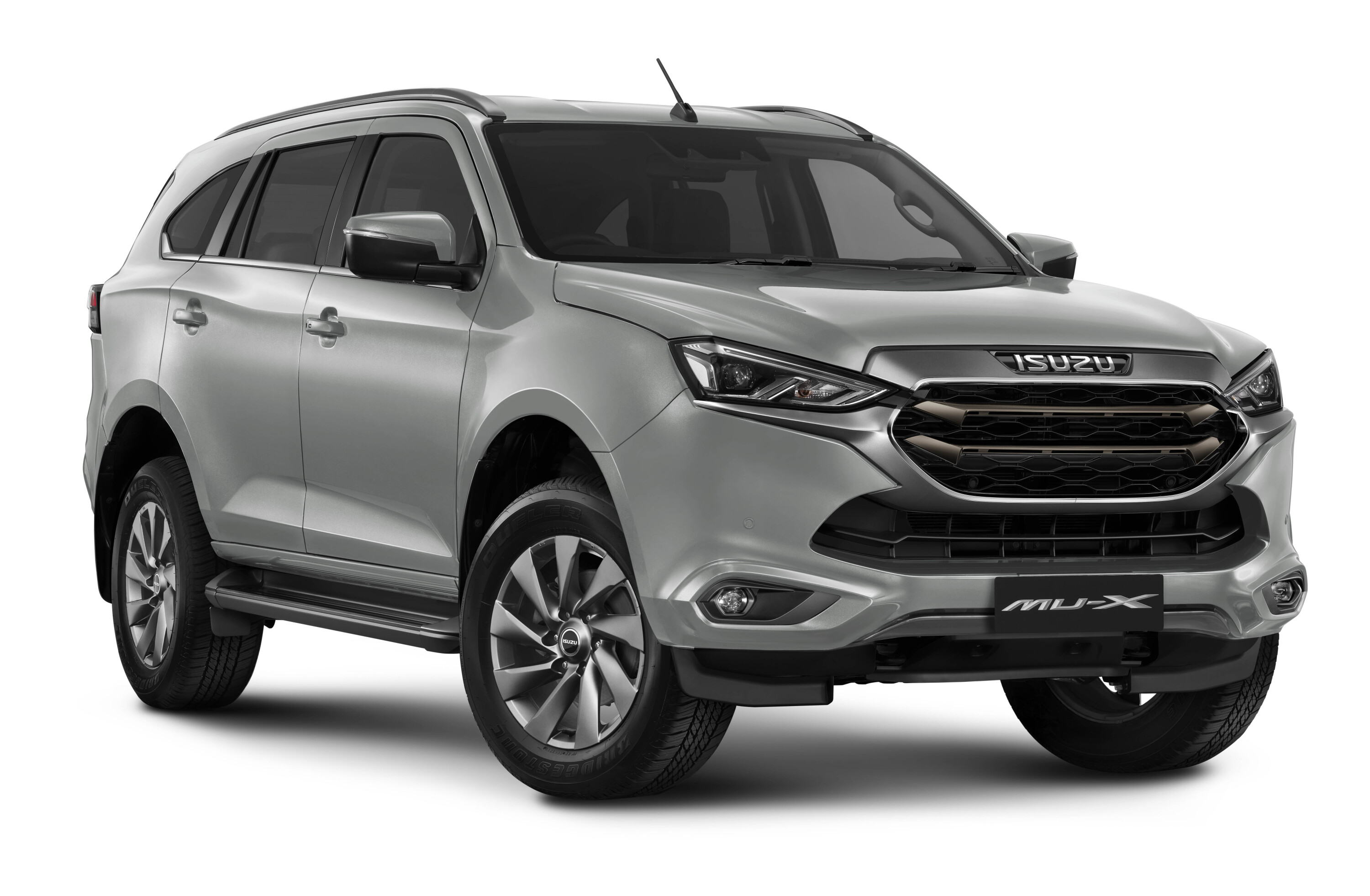
While we didn’t test it on this drive, the low-speed off-road performance shouldn’t be affected by the smaller engine, but we feel the bigger 3.0L version of the MU-X is still the best choice, especially if you will be loading it up with the family and/or towing a load.
The 1.9 MU-X might be okay for suburban family SUV use, but it wouldn’t meet the heavy-duty demands dedicated Isuzu owners expect of their vehicles.
2024 Isuzu MU-X pricing (+ORC)
| Model | Pricing |
|---|---|
| LS-M 1.9L 4×2 | $47,400 |
| LS-M 3.0L 4×2 | $49,400 |
| LS-U 3.0L 4×2 | $55,900 |
| LS-T 3.0L 4×2 | $63,400 |
| LS-M 1.9L 4×4 | $53,400 |
| LS-U 1.9L 4×4 | $59,900 |
| LS-M 3.0L 4×4 | $55,400 |
| LS-U 3.0L 4×4 | $61,900 |
| LS-T 3.0L 4×4 | $69,400 ($67,990 drive-away) |
Hema has released its latest electronic navigator, the HX-2+.
Whether navigating through dense urban streets or exploring remote off-road locations, this new-generation GPS navigator enables you to easily plan, experience and share your adventures.
In addition to Hema Maps’ iconic off-road mapping and guidance, it also features hundreds of thousands of Points of Interest (POI) such as camping sites, caravan parks, hotels, motels, rest areas, boat ramps, fuel stops, tourist spots and post offices.
Sam Hayward, Executive Chairman at Hema Maps, said Hema Maps is pleased to be working with its partners at HemaX Digital and Directed Technologies to release the new HX-2+ GPS Navigator. “This new-generation navigation device promises to deliver unparalleled precision so that our customers can explore Australia with confidence,” he said. “The HX-2+ also connects to the Hema Maps Cloud, so explorers can map their own adventures and also get inspired by the community of Hema Maps 4WD and touring enthusiasts.”
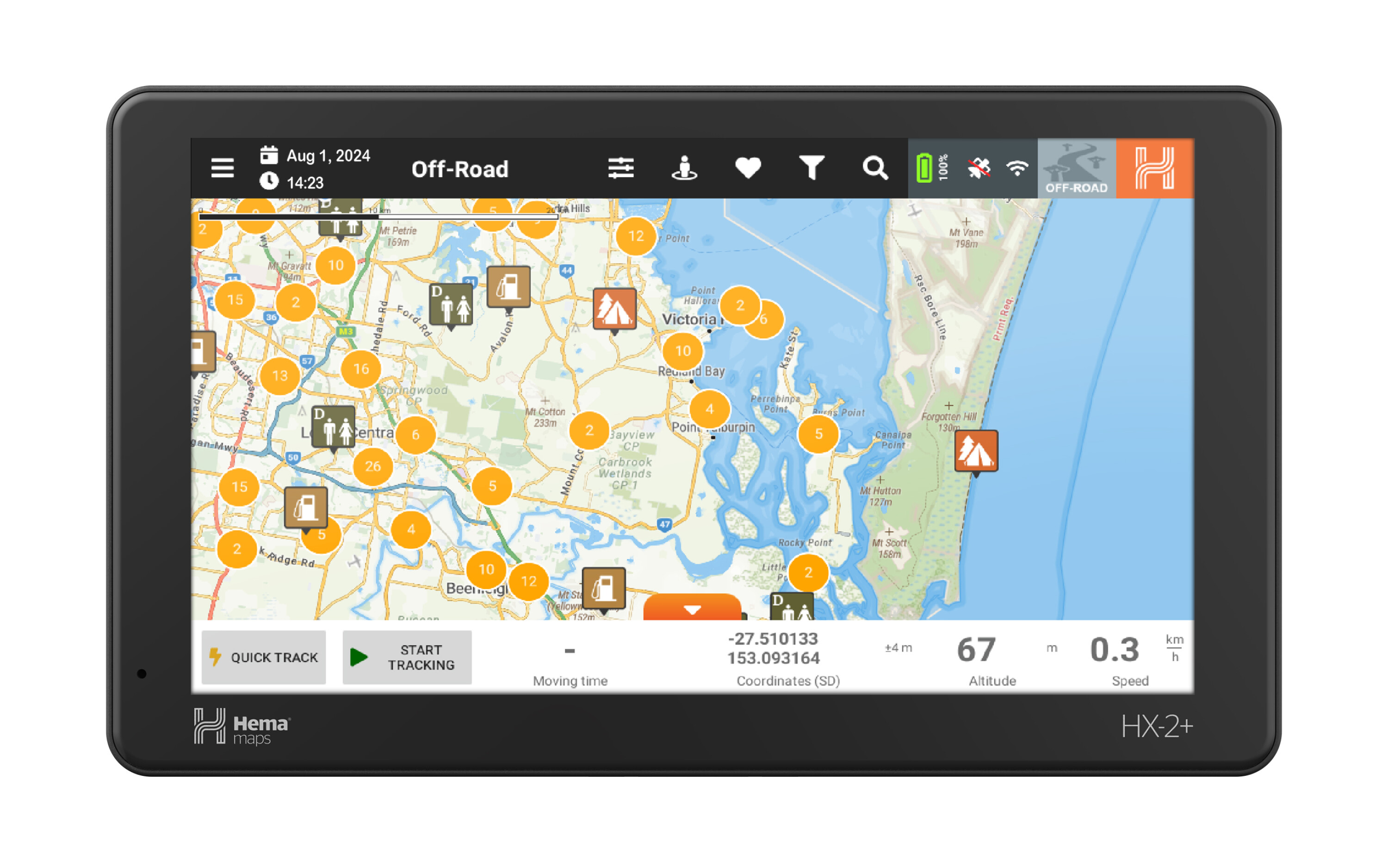
The new model is the first of many new products in Hema Maps’ expanding range of navigation and automotive electronic devices created by its new technology partner at Directed Technologies, giving Hema Maps the confidence to now provide a three-year warranty. The HX-2+ is well-supported by Hema-X Digital, providing regular map and software updates, as well as access to community-created content via the Hema Maps cloud.
The main differences between the original HX-2 and the HX2+ are the new sleek design; increased storage and memory; hardcover protective carry case; new shorter and stronger windscreen mount (better for corrugations, I hear); and the three-year warranty. It will be interesting to see how the HX-2+ performs long-term as the increased storage and memory has resulted in a reduced battery capacity, which is one issue I have had with my HX-2.
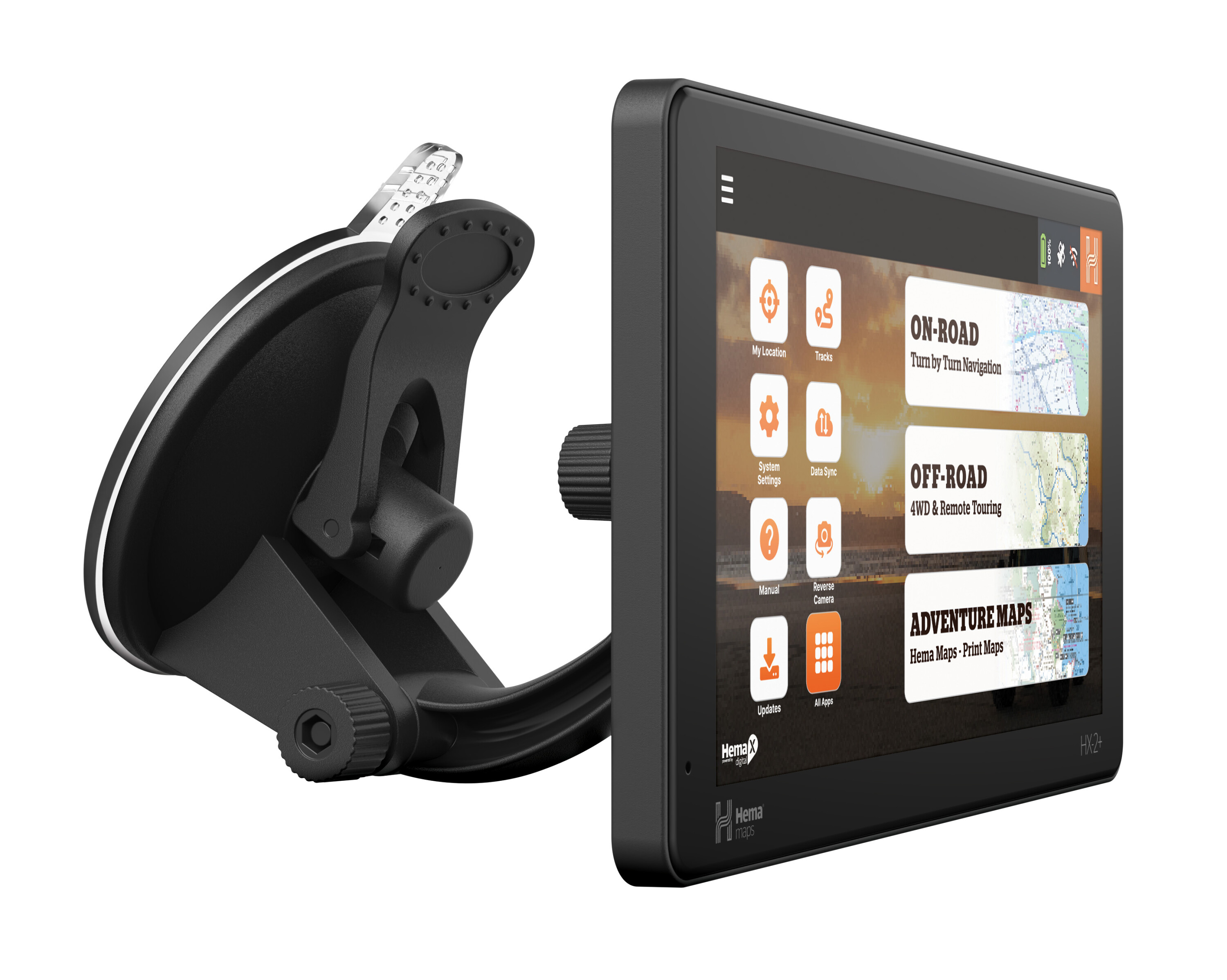
Sam Hayward added that improvements to the hardware and software design make this edition of the HX-2 easier to use. “It has double the memory on both RAM (now 4GB) and internal memory (now 64GB); better GPS connection with a new GPS receiver, to make a connection to GPS satellites more consistent; and better warranty coverage from one to three years,” he said.
The HX-2+ also has a different charging configuration, with an integrated charging cable and 12V accessory plug and an L-shaped USB-C output. The mounting system also has a different configuration, which may sit differently in your 4×4.
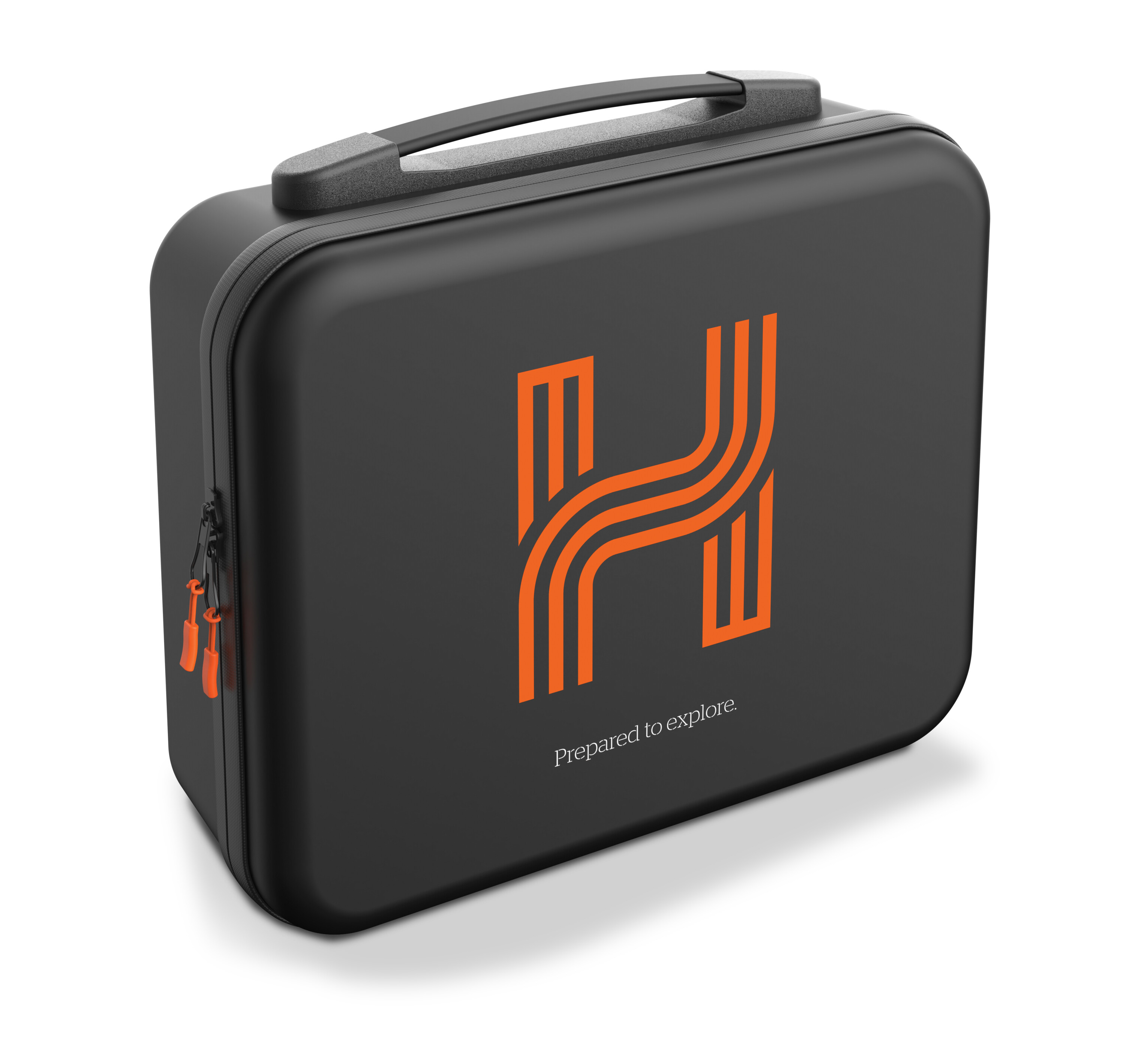
Similarities between the HX-2 and the HX-2+ include the seven-inch touchscreen; performance and stability; software experience and features; access to map, software and database upgrades; and access to the Hema Maps Cloud.
The HX-2+ package includes a new hard carry case to protect the device when not in use, as well as a suction mount, 12V/24V 2A car charger, USB-A to USB-C heavy-duty charging cable and quick-start guide.
RRP: $849.95
Tune into 4X4 Australia and you might think our intrepid travel contributors have the best job in the world.
After all, they get to travel all over Australia and the world, to places most of us can only dream about, and they call it work!
Truth be told it’s not all stunning views and campfires under starlit skies; capturing these amazing images and informative stories can be hard work. Rolling out of the swag several hours before dawn, and travelling through the dark to get that magical sunrise photo, only to find that Mother Nature didn’t get the memo, can be pretty tough.
Then there are the long days on the road getting from one location to the next, battling with poor or closed roads, sorting mechanical problems, forking out for expensive fuel and supplies in remote places, and sometimes going for days without a shower or seeing another person.
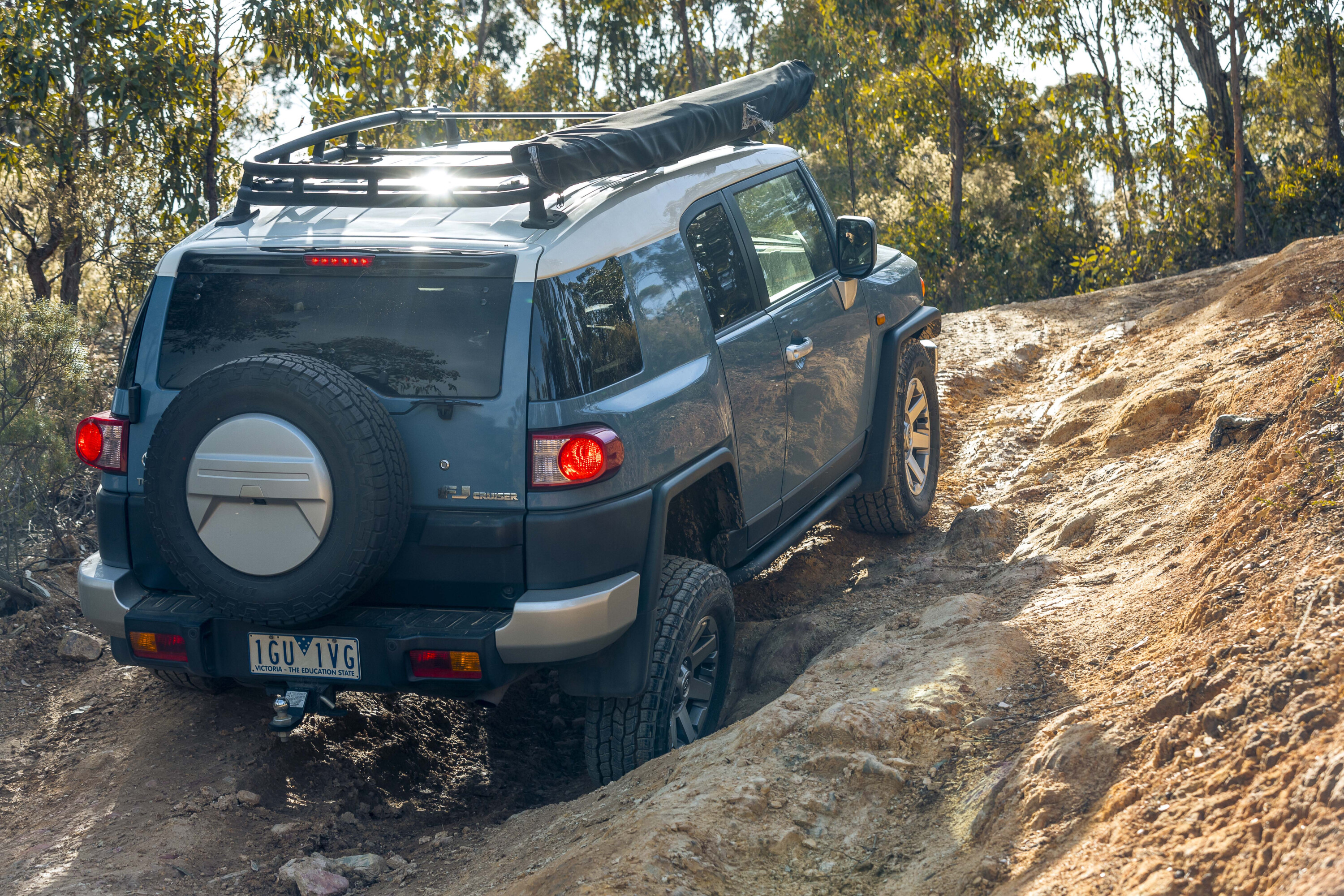
Not to mention having to deal with pesky editors always wanting words and photos delivered yesterday, and wondering why you didn’t get that stunning sunrise photo at that special place that’s renowned for it.
But ask any one of them and they’ll tell you that it’s a pretty good life. All those miles on the road, and the locations and the tracks they lead to, mean that these guys and girls need dependable and well-sorted 4×4 vehicles to ensure they can get to where they need to be and back again, without any problems or fuss.
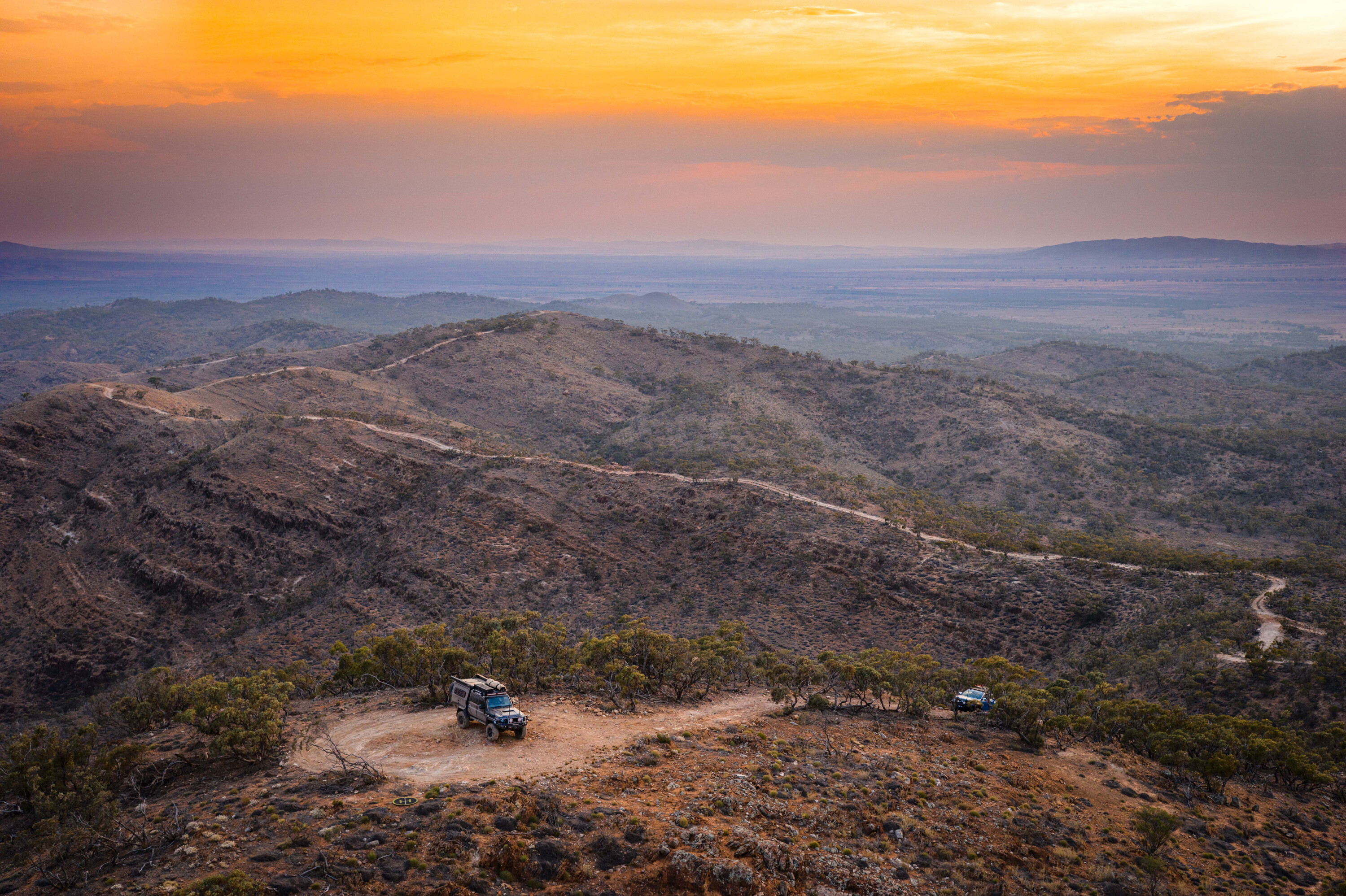
They need a vehicle they can live out of for extended periods, that has the ability to power and recharge specific equipment like lights, cameras and drones without killing their batteries, and one that has the communications gear needed to keep in touch with the world they left behind.
We asked some of our key travel photographers and writers from around the world to tell us a bit about what they drive to get the job done, and why they chose it.
These are 4×4 vehicles built by people who have been doing this work for decades, travelling thousands of outback kilometres, and they know how to set up a vehicle for remote travel. It makes for interesting reading and gives us something to consider when equipping our own 4x4s.
JUMP AHEAD
- Mick Ellem’s 79 Series
- Ron Moon’s GU Patrol
- Matt Williams’ GU Patrol
- Ellen Dewar’s FJ Cruiser
- Glenn Marshall’s Prado 120
- Kevin Smith’s 80 Series
- Brad Miskiewicz’s HiLux
- Chris Collard’s Tacoma
- Dan Grec’s Gladiator
Michael Ellem: 2018 Toyota LandCruiser GXL 79
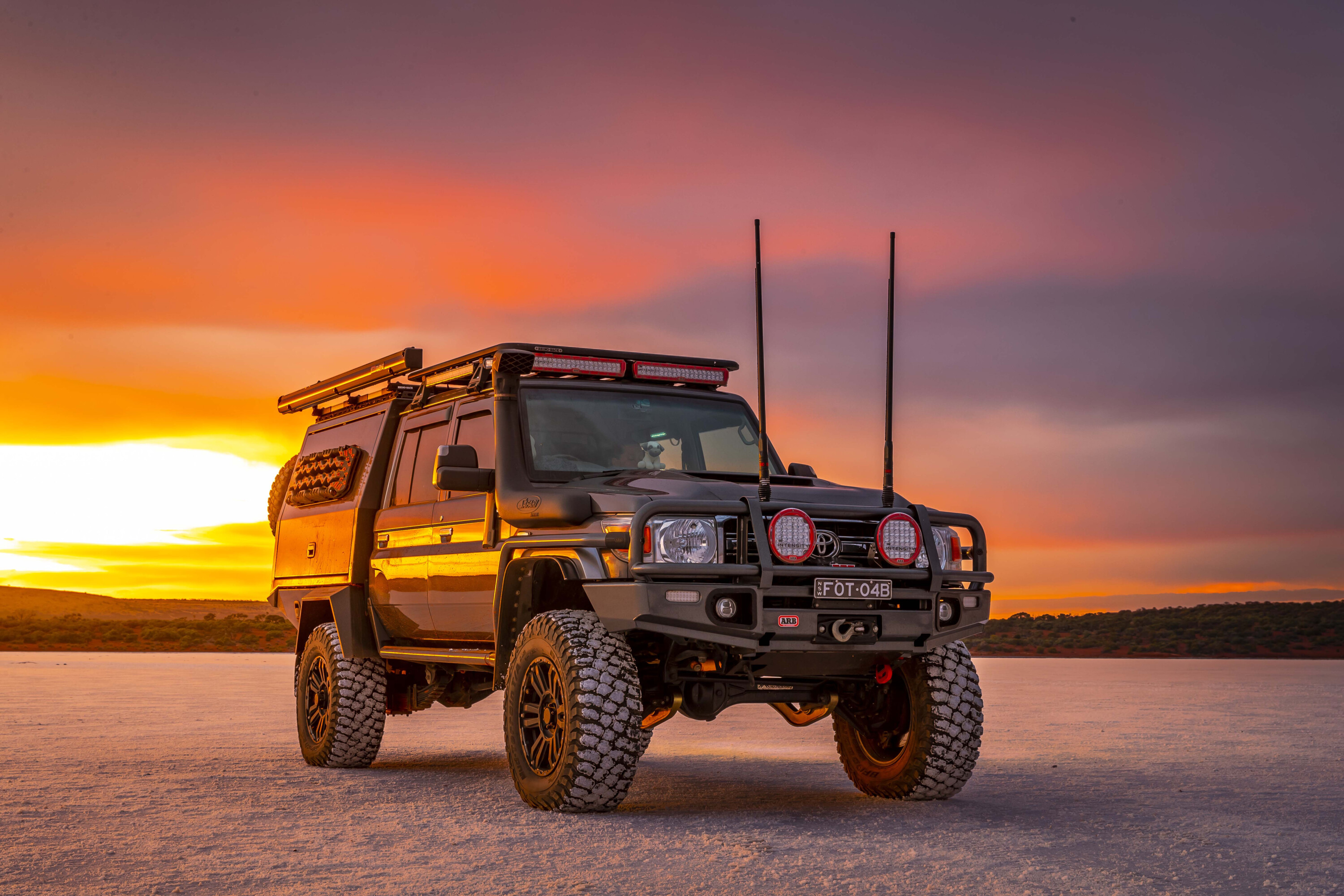
At Offroad Images, we photograph and film 4x4s for a living and have been shooting for 4X4 Australia on and off for more than 20 years. In order to achieve the best results, we built The Mighty 79 camera vehicle.
It’s purpose-built specifically to safely carry cameras, lighting equipment and drones to remote areas. It provides us the capability to achieve big results in the middle of nowhere with speed and efficiency.
To be organised, we say “everything has a place and there is a place for everything.” It’s amazing what a difference an organised workspace makes to a photoshoot which will usually always be in an unusual workplace.
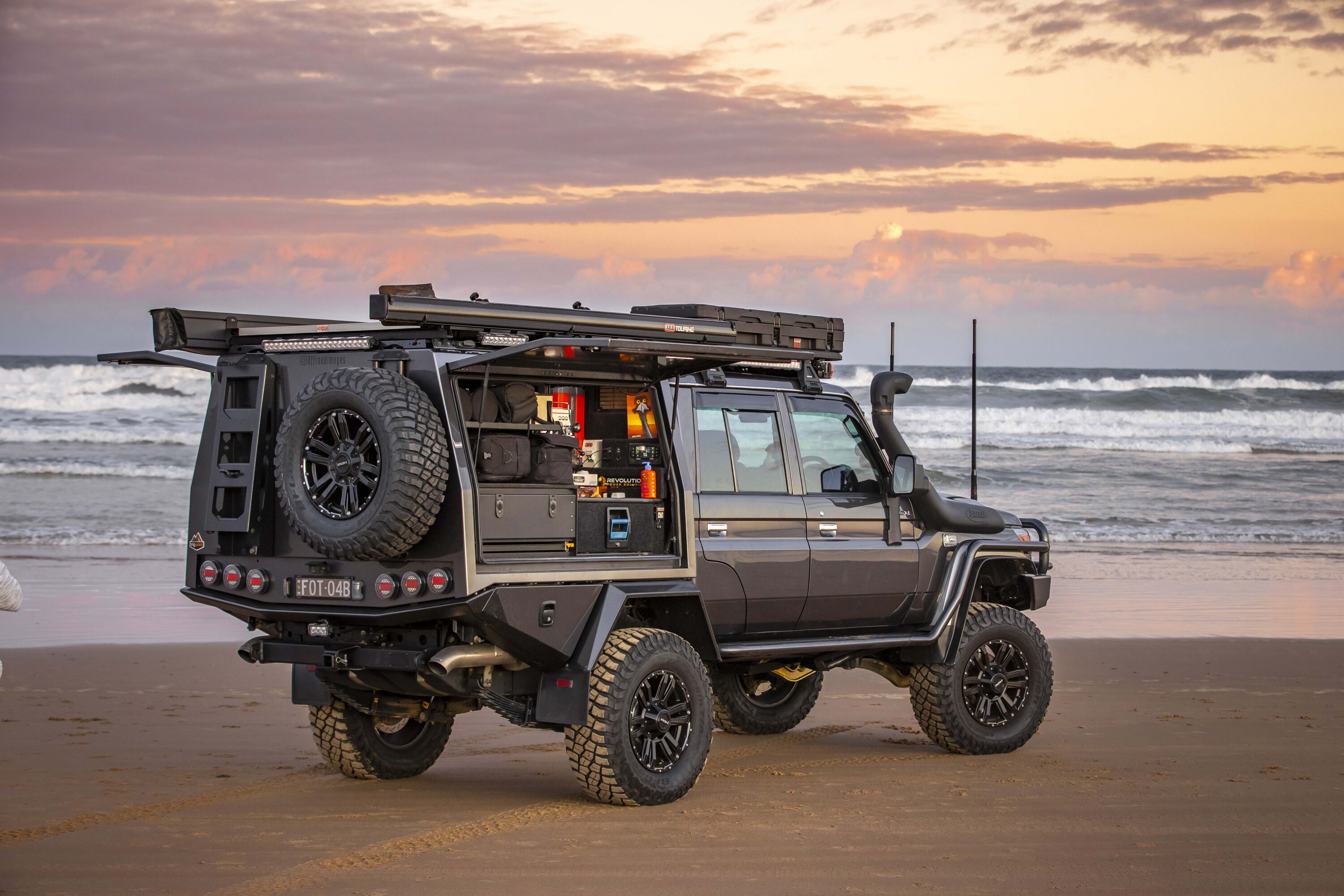
This purpose-built LandCruiser 79 Series is built on Marks 4WD portal axles, providing a great platform with more ground clearance but also a wider stance. It has reduction hubs that provide gearing to suit the 35- or 37-inch BFG KM3 tyres we run on ROH Vapour wheels.
To iron out the bumps on the tracks and keep the cameras safe, we run ARB OME BP-51 shock absorbers, which are adjustable to suit the terrain we are driving on at the time. These are the best shocks I have ever run.
For protection from the wildlife we may encounter we have an ARB Deluxe bull bar. We also run ARB Intensity lighting on the bar and up at the roof line. For vehicle recoveries, we have a Warn Zeon 1200lb winch up front, and a Marks 4WD high clearance rear bar on the back.
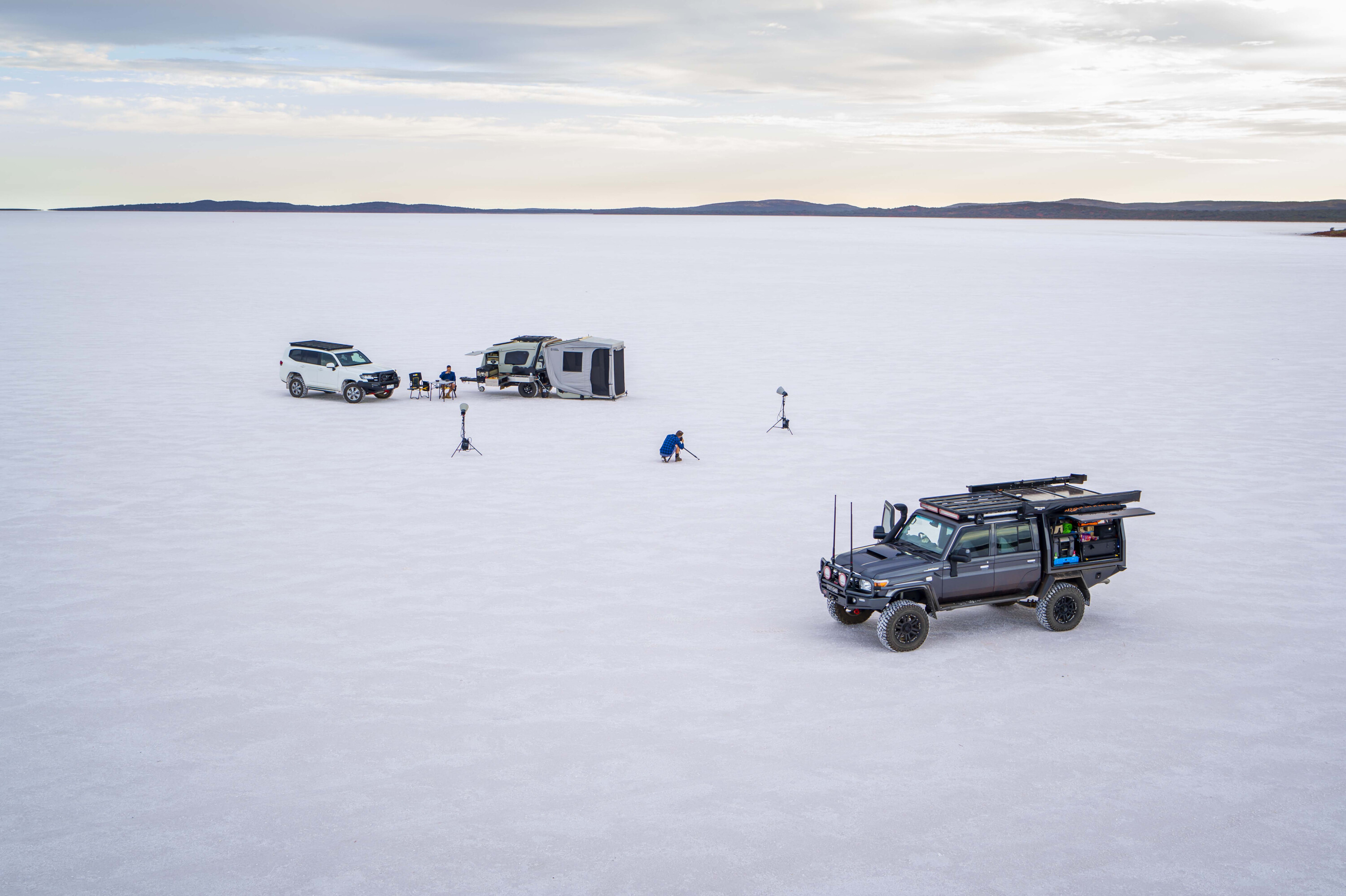
We have designed the 79 so it has two distinct halves, with camera equipment on the driver’s side and catering equipment for the crew on the passenger’s side.
With the rear seat removed, and camera storage behind the driver’s seat, combined with the drawers in the Trig Point service body, we are extremely well set-up to allow for quick access and organisation of cameras, lighting and drones out of the drivers side.
We also have plenty of power on board thanks to a Redarc system with a 3000 watt inverter and 240 Amps of Revolution lithium batteries helping to keep everything charged… and to run the coffee machine. Yep, the coffee machine gets a workout all around Australia.
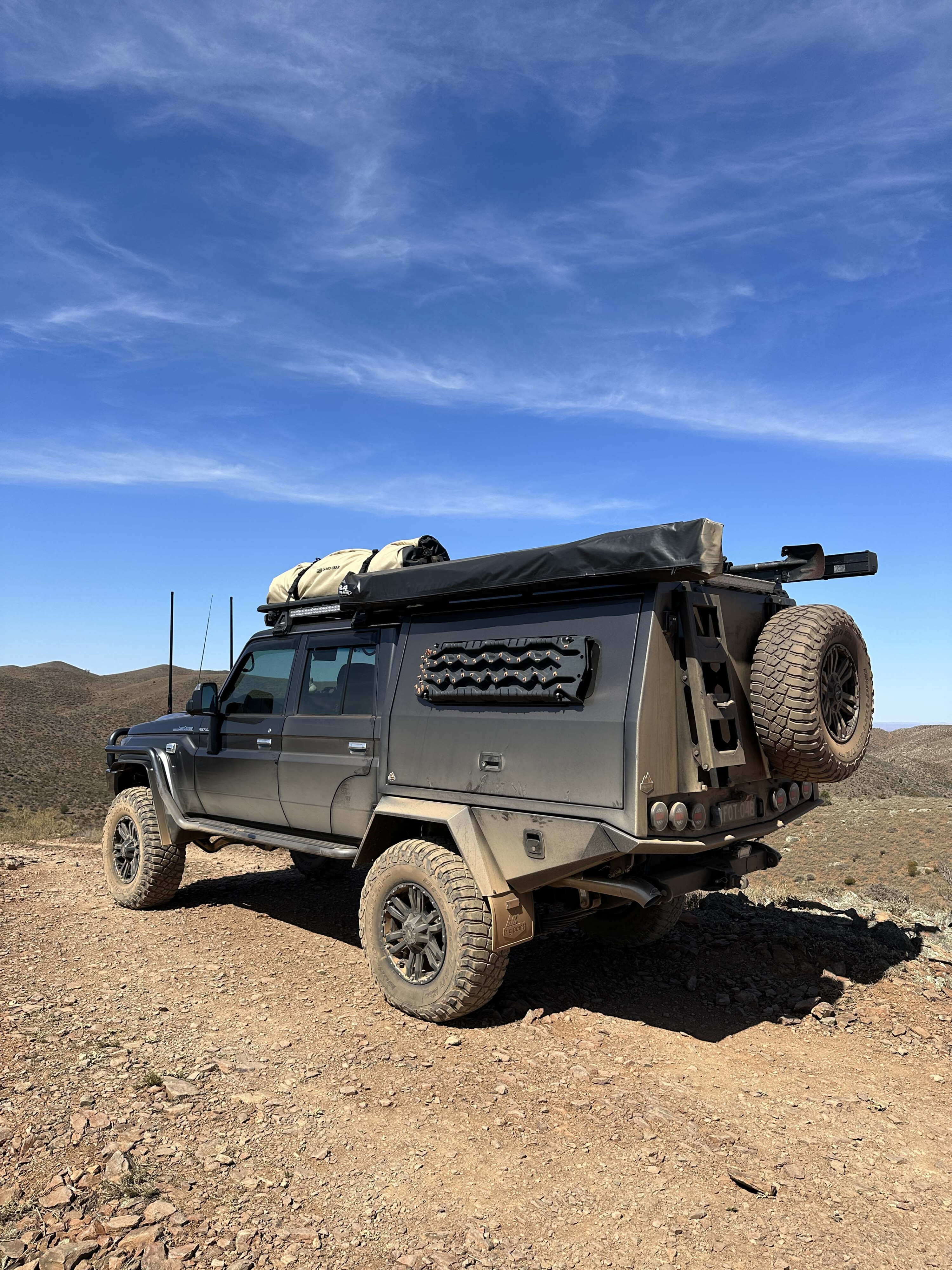
On the passenger’s side, we have a single Recaro in the back for a crew member, and in the service body we have Trig Point’s new pantry and an ARB Classic 60L fridge on an MSA motorised drop slide.
Thanks to a Boss 270° free-standing awning we can get our crew and other people out of the elements quickly in any environment. The LandCruiser 79 and all the equipment on it has really proven itself over the last five and half years, and it’s now approaching 290,000km of extremely reliable service to our business.
Ron Moon: 2001 Nissan GU Patrol
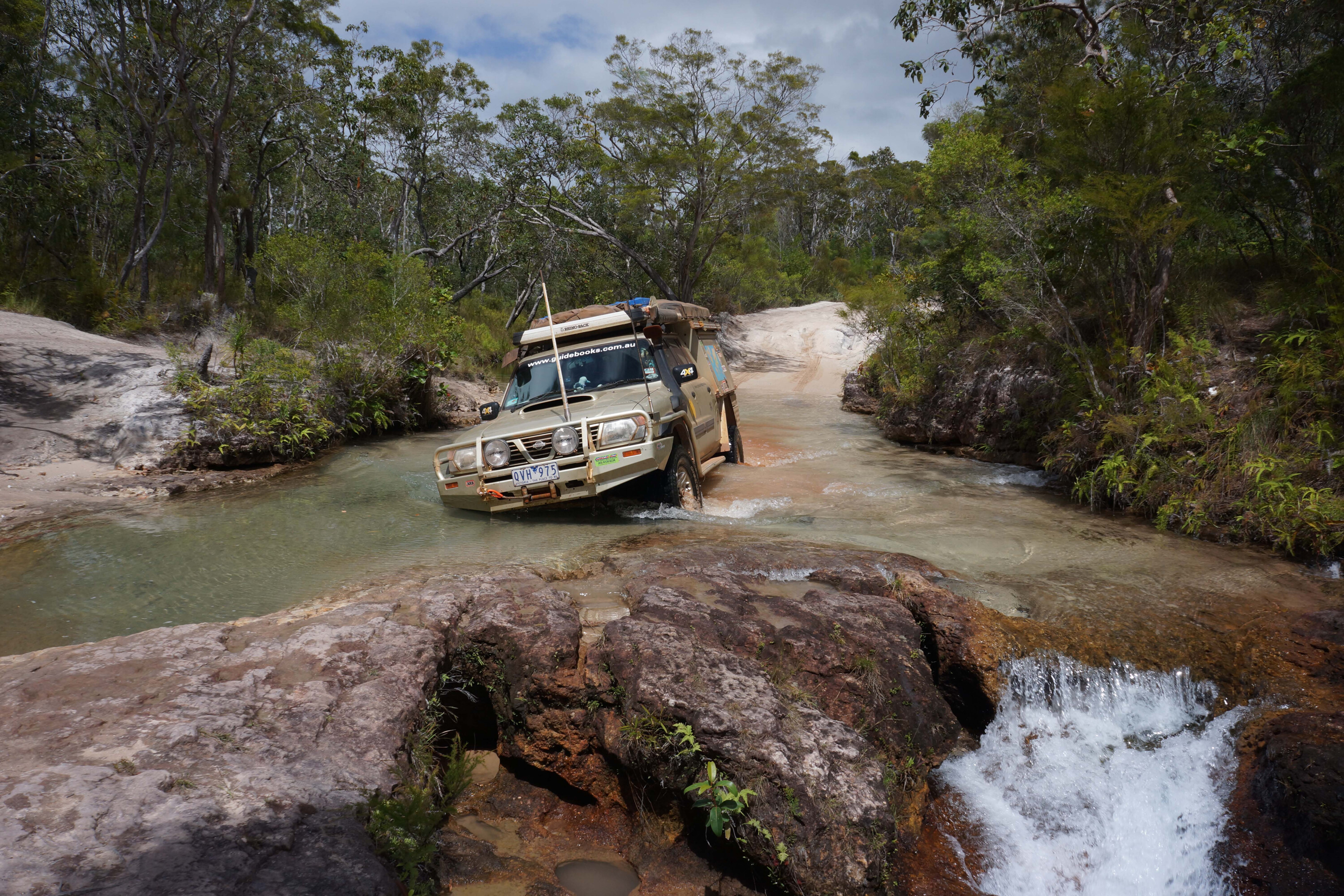
The ol’ 4.2-litre GU Patrol, owned since new, is now 23 years old but surprisingly, some might say, it has only clocked up 460,000km. But what a 460k!
It was cut and stretched in its first year by Creative Conversions and while that has never caused an issue or any discontent, we have fitted a number of different trays and canopies over the years, all changes made to suit my varying travel requirements. It’s currently running an All4Fabrication alloy tray and canopy.
Of course, there have been a heap of mods and accessories in that time as well, some of the not-so-obvious being a Marks Adaptor super low range transfer box, ARB Air Locker diffs, OME springs and Koni shocks, and a Natrad full-copper radiator to help keep the engine cool, which is often an issue with the venerable TD42 diesel.
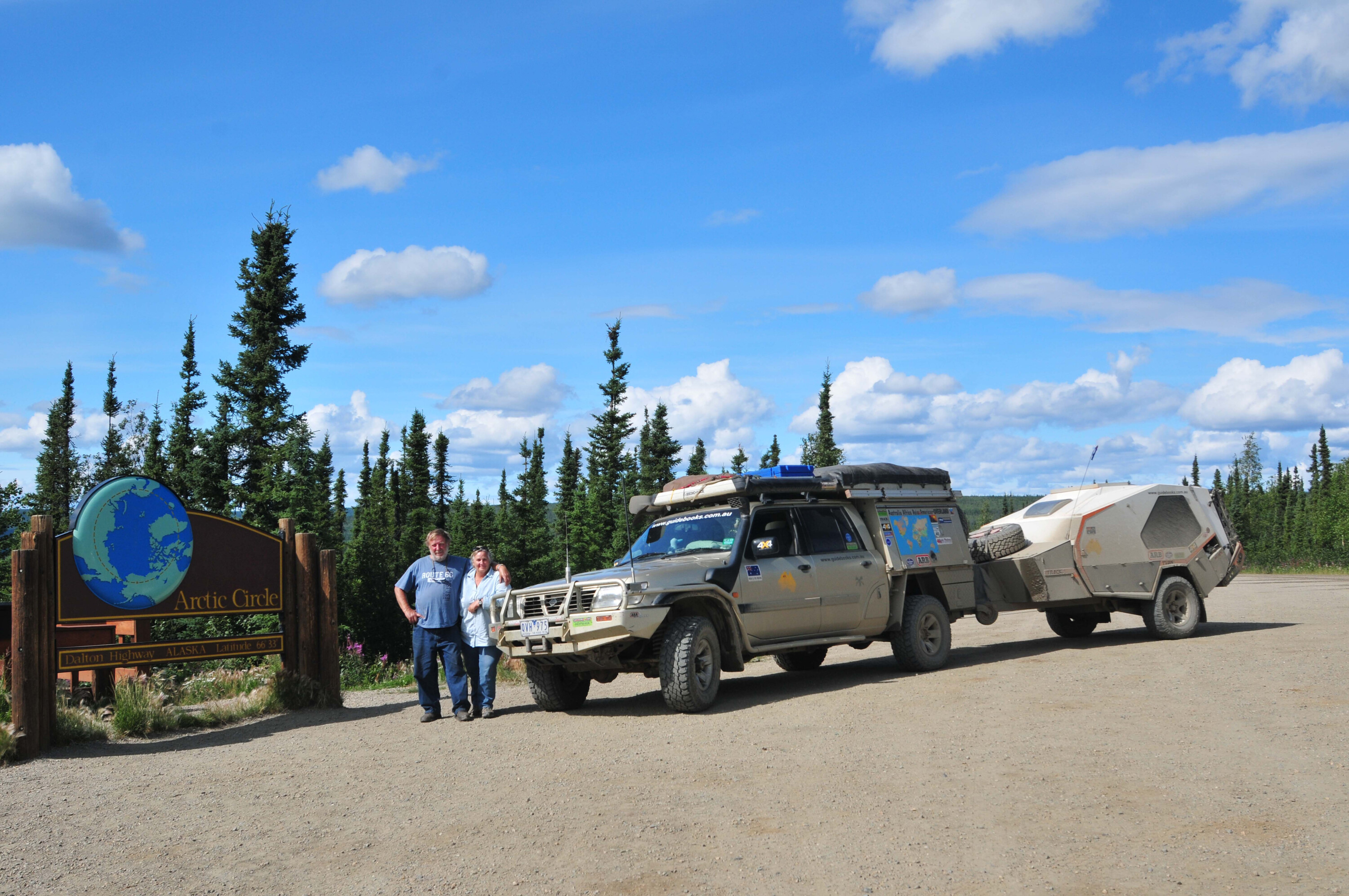
Most of those aforementioned kilometres have been covered wearing Cooper tyres, although at present the Patrol is shod with Mickey Thompson Baja Boss A/T tyres.
All in all, it is a very capable vehicle and while it’s not as refined as the current crop of 4×4 vehicles on the market, it has a lot less electronic so-called aids. The long list of broken down vehicles it has towed or recovered from seemingly impossible situations is testimony to its strength and off-road capability.
Over the years it has travelled all the great four-wheel drive routes in Australia at least once, with the Canning Stock Route and Simpson Desert being negotiated a couple of times, while Cape York and the Victorian High Country have been travelled more times than I care to remember.

As well, Central Australia, the Kimberley, the Gulf Country, western NSW and the Flinders Ranges have all been on the agenda more than once, as have the wilder parts of Tassie.
The route along the edge of the Great Australian Bight is arguably the best and longest coastal beach run in Australia and it certainly throws up a number of challenges, all of which the Patrol has easily overcome. In fact, there are not too many places in Australia it hasn’t been to.
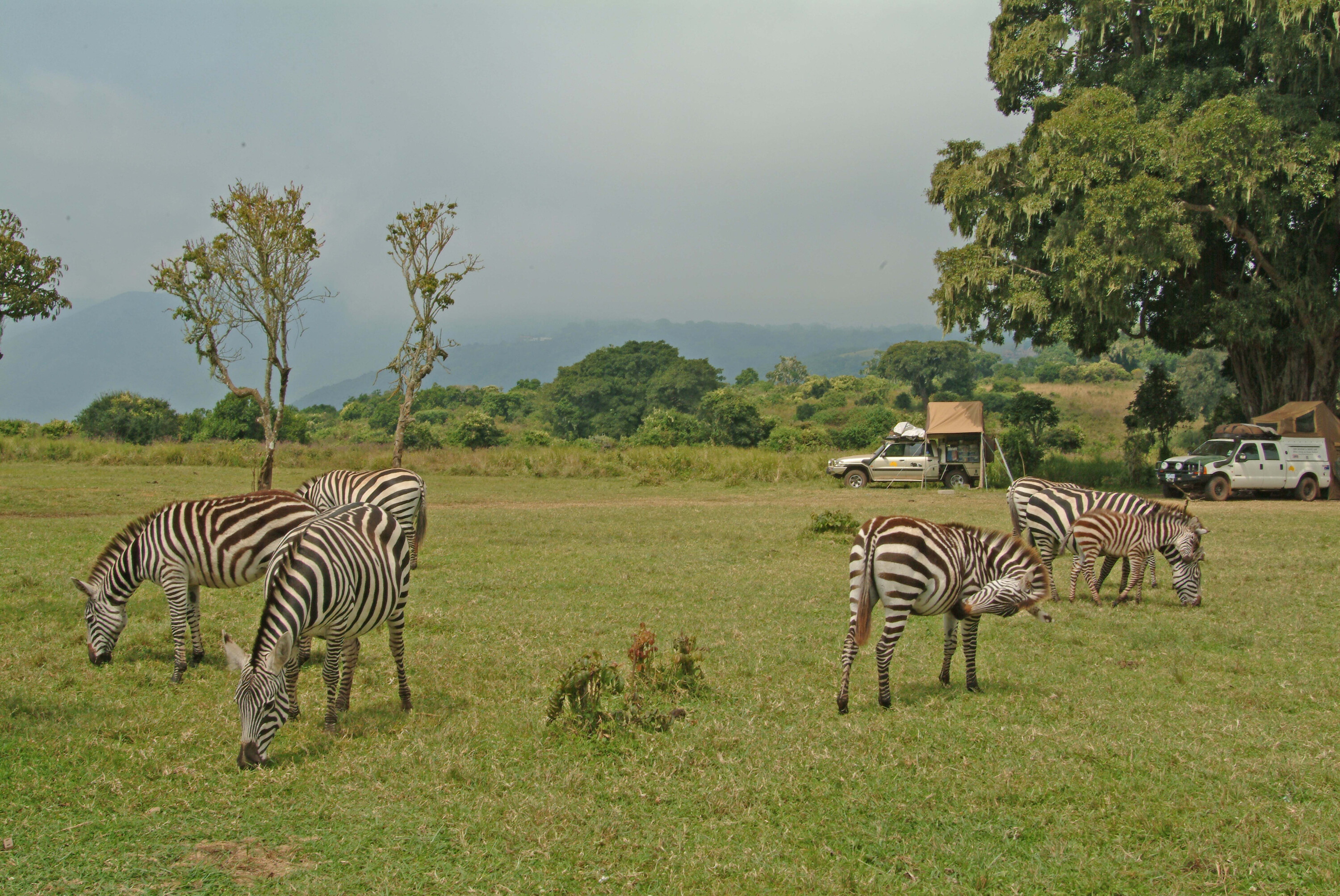
From 2007 to 2012, we took the Patrol around the world, clocking up 160,000km on a circumnavigation of the planet through 70 countries as disparate as Alaska, the Sudan, South Africa, Libya, Mongolia, Paraguay, Canada and Mexico.
The battle-worn rig is having it a bit easier these days as I bring a new V8 Troopy onto the scene, which I hope will take us to just as many exciting destinations and generate as many pleasant memories of places visited and camped at.
But I’ll never get rid of the Patrol… a couple more years and I’ll be able to put it on historic registration, but its travelling days won’t cease.
Matt Williams: 1999 Nissan GU Patrol ST
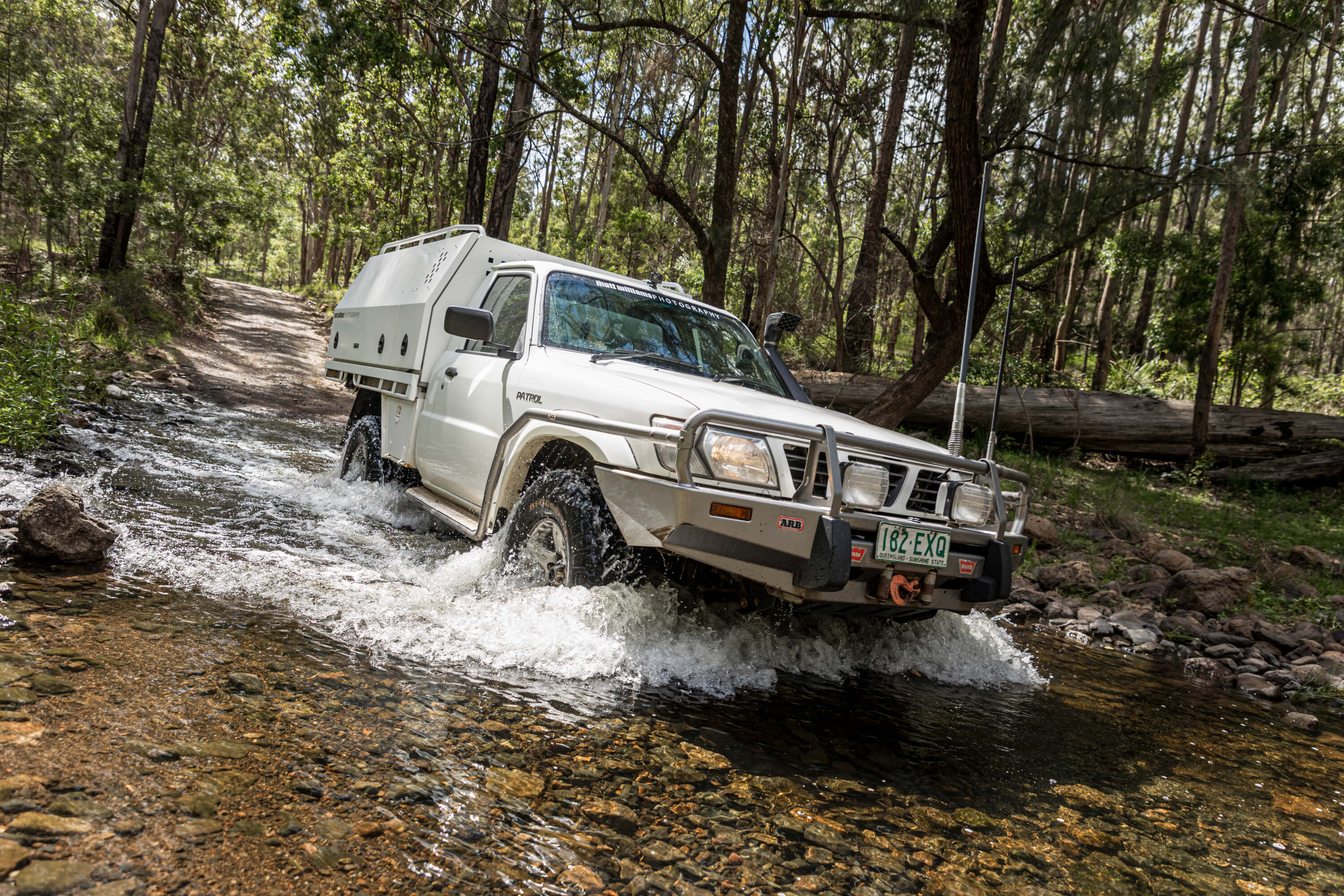
One of my best mates calls me a professional camper. While there may be an element of truth to that description, camping isn’t all I do, but it is a big part of my work.
In reality, I’m an automotive photographer, mainly off-road automotive, and a large part of my work takes me to remote places, working for some of the biggest names in our industry. So, to do what I do, I need a capable and reliable vehicle to operate out of and live out of… for extended periods.
Funnily enough, though, I struggled a lot when it came time to write this article and find photos of my ute. When out on work trips, I’m so busy taking pics of all the other vehicles I forget about getting a few of my own!
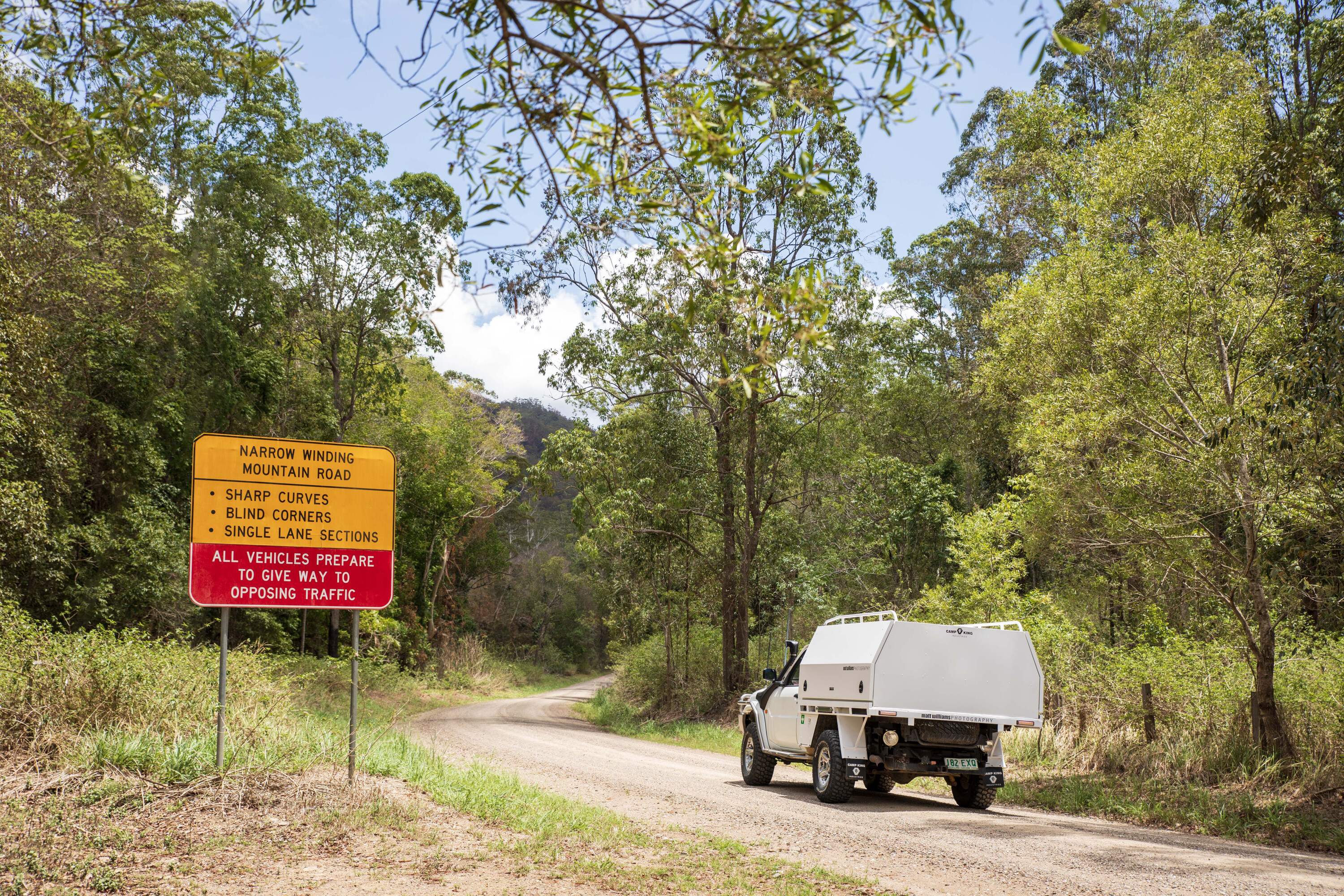
Back in my previous life, I worked in sales at ARB, and it is here where I developed a love for our big brown land.
While working at ARB, in August of 2005, I purchased my 1999 Nissan Patrol ST TD42 ute for weekend trips and extended touring. On the test drive, I ticked over 50,000km on the odometer. Now, it’s got well over 300,000km on the clock.
I threw an ARB catalogue at it and saw what stuck. ARB bar work protects the front and sides from animal strikes and panel damage on tight tracks. A Warn 9000lb winch is fitted in the bar, as well as a pair of Hard Korr LED spotties, which upgraded a pair of old IPF units.
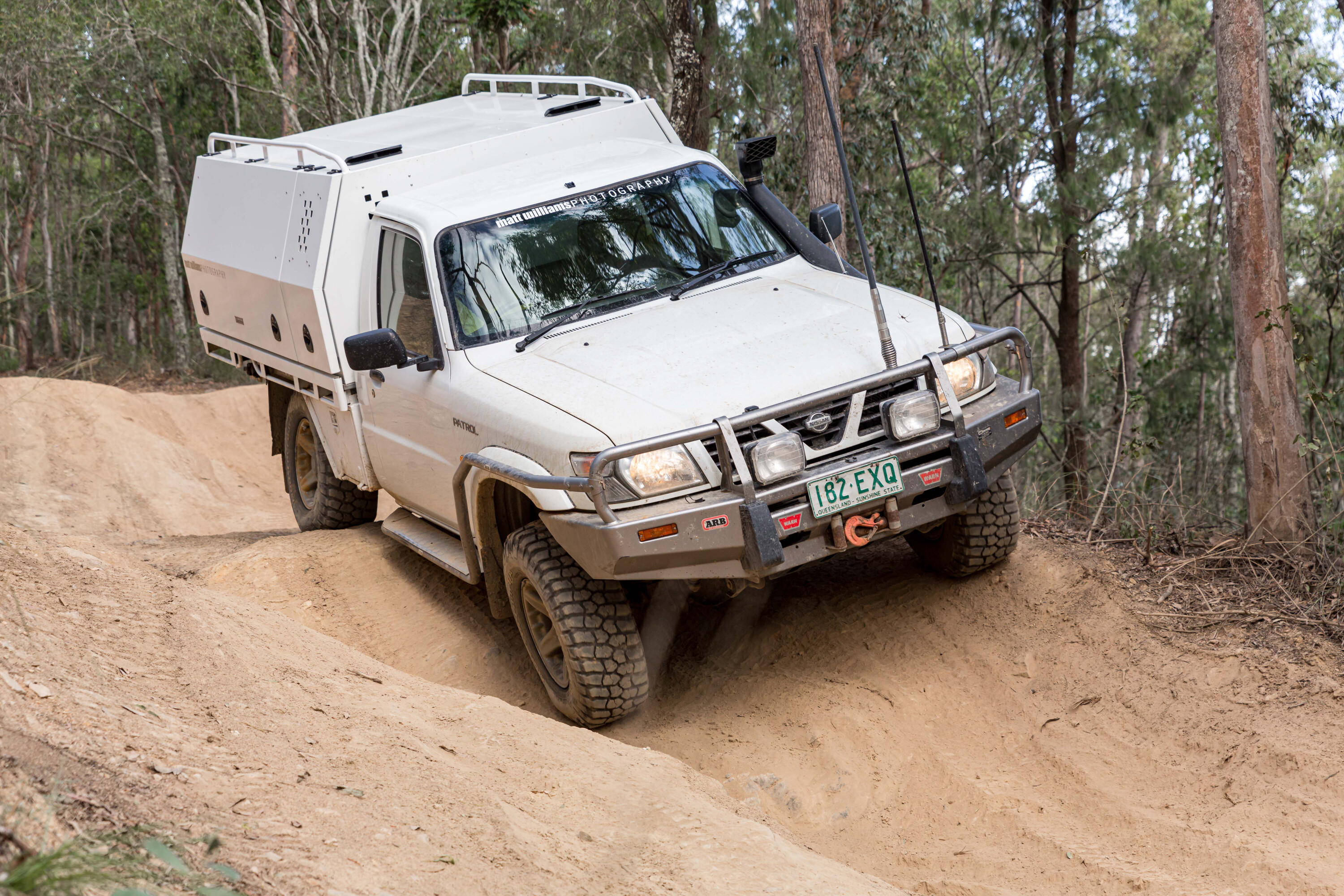
Underneath, I’m running OME suspension, and over the years, as my usage for the vehicle has changed, as has the capacity of the rear springs. I now run constant 400kg coils and a Superior Engineering Coil Tower Brace Kit.
Front and rear diffs have been fitted with ARB Air Lockers, while the under-bonnet compressor pumps my BFG Muddies up after their many off-road adventures.
Recently, I joined the 21st century and installed a 120Ah lithium battery to look after my extensive battery charging requirements while on the road. The battery is charged via a REDARC BCDC unit and supplies 240v through a 600W inverter.
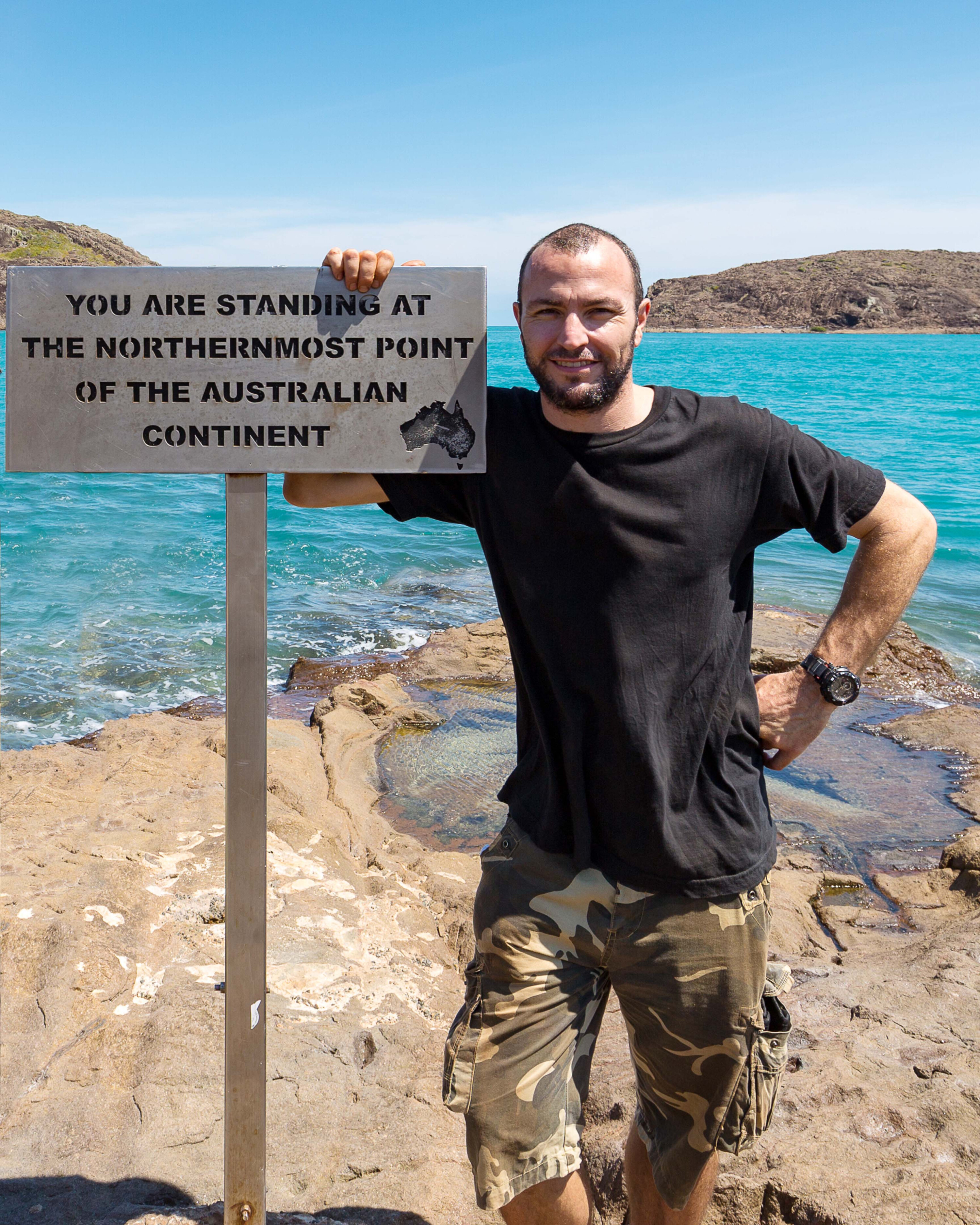
In 2017, I started shooting for 4X4 Australia, and using my ute became more work trip-centric.
To work efficiently, I decided to fit a custom-designed canopy instead of working out of space cases bolted to the tray.
Camp King Industries delivered precisely what I wanted: custom-made drawers for my camera gear, a full-width pull-out pantry/kitchen drawer, and a fridge compartment take up the passenger’s side; a pair of drawers house my recovery gear, spares and tools on the driver’s side; while a big open area holds my swag and other oversized items.
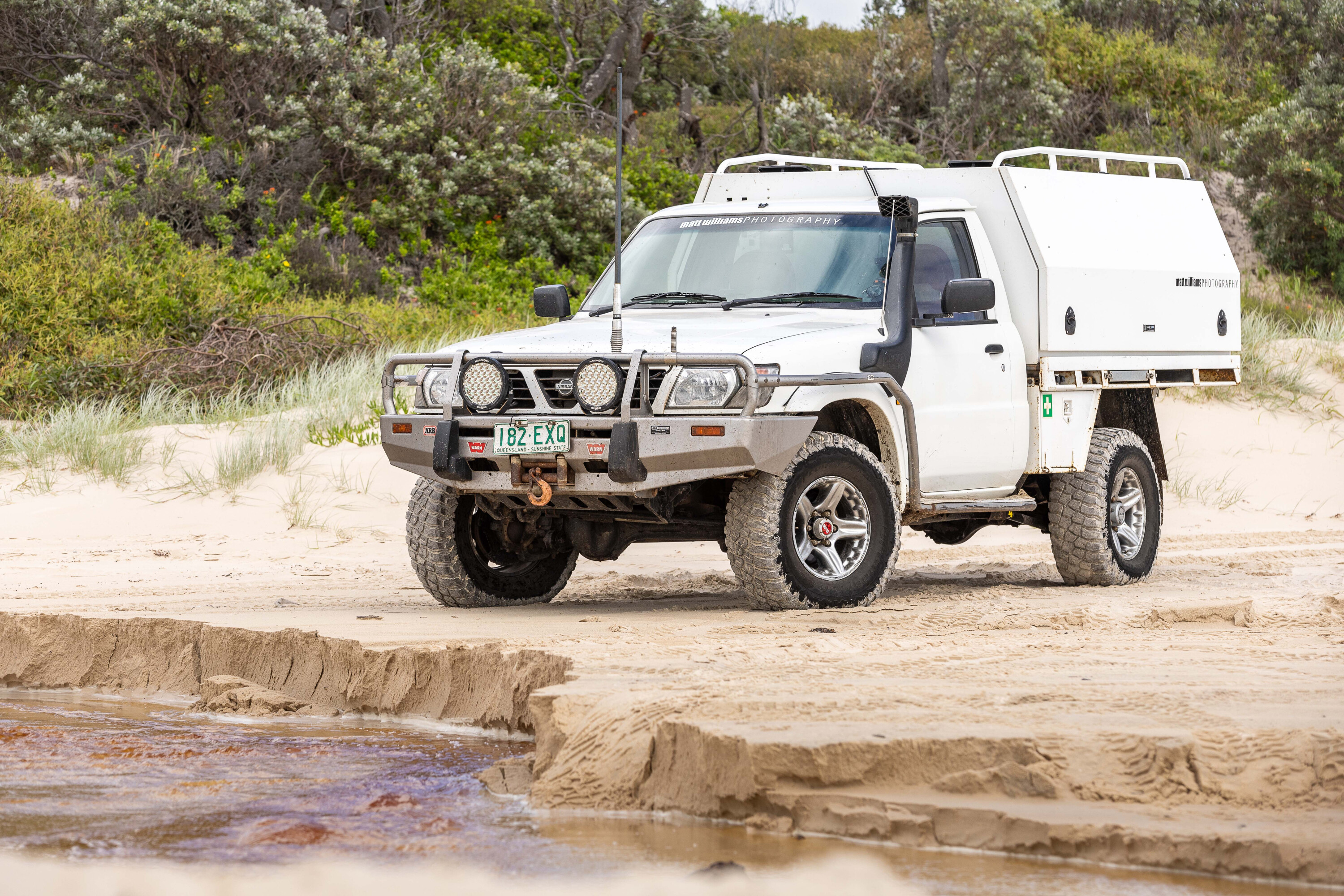
I’ve been lucky to travel a fair chunk of this country thanks to being able to press a little button, and my trusty Patrol has taken me to Cape York, the Simpson Desert and the Flinders Ranges, to name just a few.
However, in October last year, I visited the Victorian High Country for the first time, and five days in the region was not enough. I need to get back there and explore some more.
Ellen Dewar: 2016 Toyota FJ Cruiser
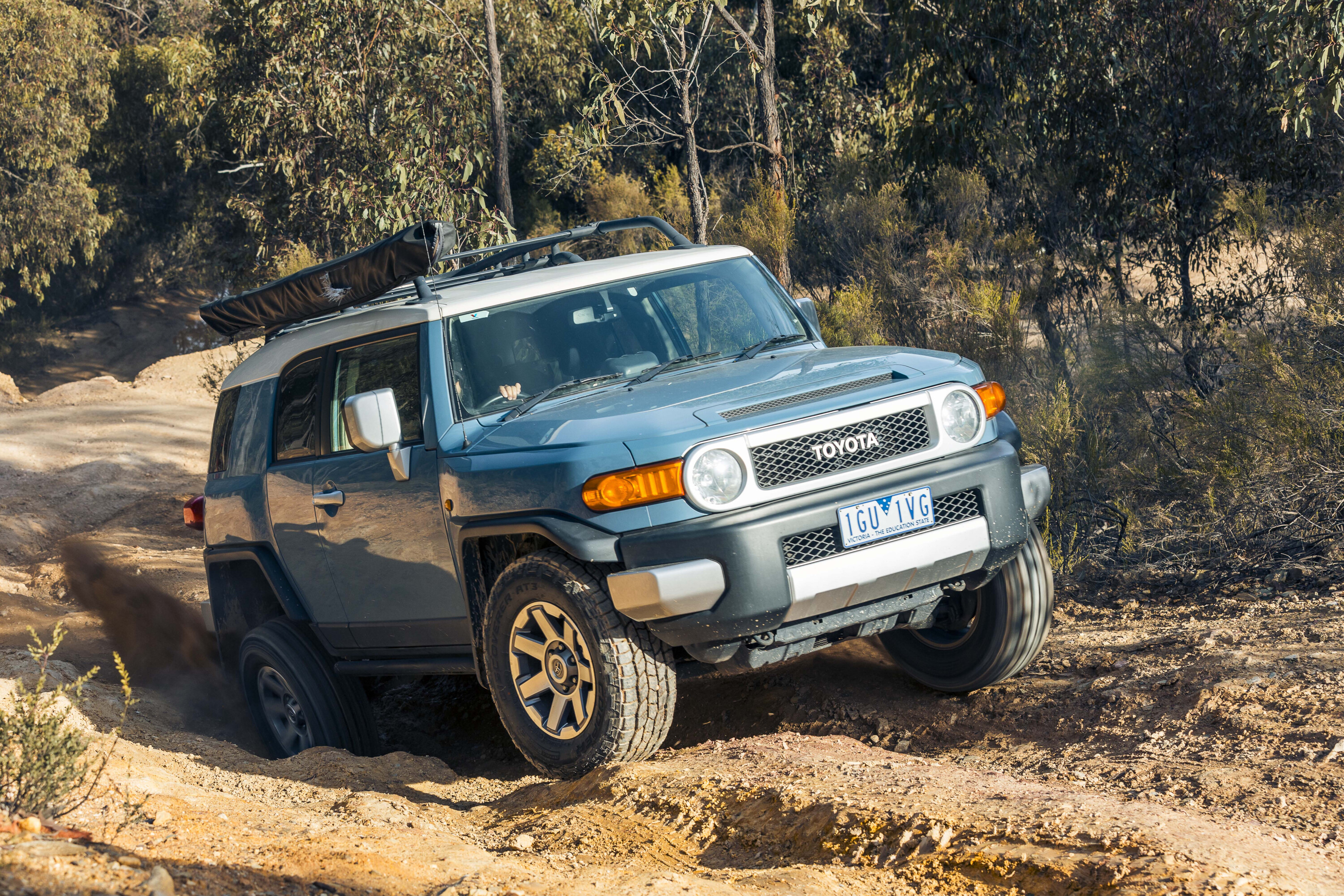
Being an automotive photographer of 26 years, I’ve seen a car or two – capturing images of vehicles driven back and forth by my journo colleagues, snapping them in motion and in all conditions; it’s been an adventure.
I have owned many cars myself and historically I was the hot hatch gal. Call it a midlife crisis or a crazy turn of events, but I found myself selling my VW Polo GTi and jumping into one of the last of the Toyota FJ cruisers; I call it my Tonka truck.
I picked it up for a great price in mint condition, with only 5000km on it, and since then it’s just clocked up 100,000km. I’m not the hardcore 4×4 type, more the camping, touring, attempting the easier off-road tracks type, but I do love to travel, throwing a swag and my cameras in to experience the great Aussie landscape.
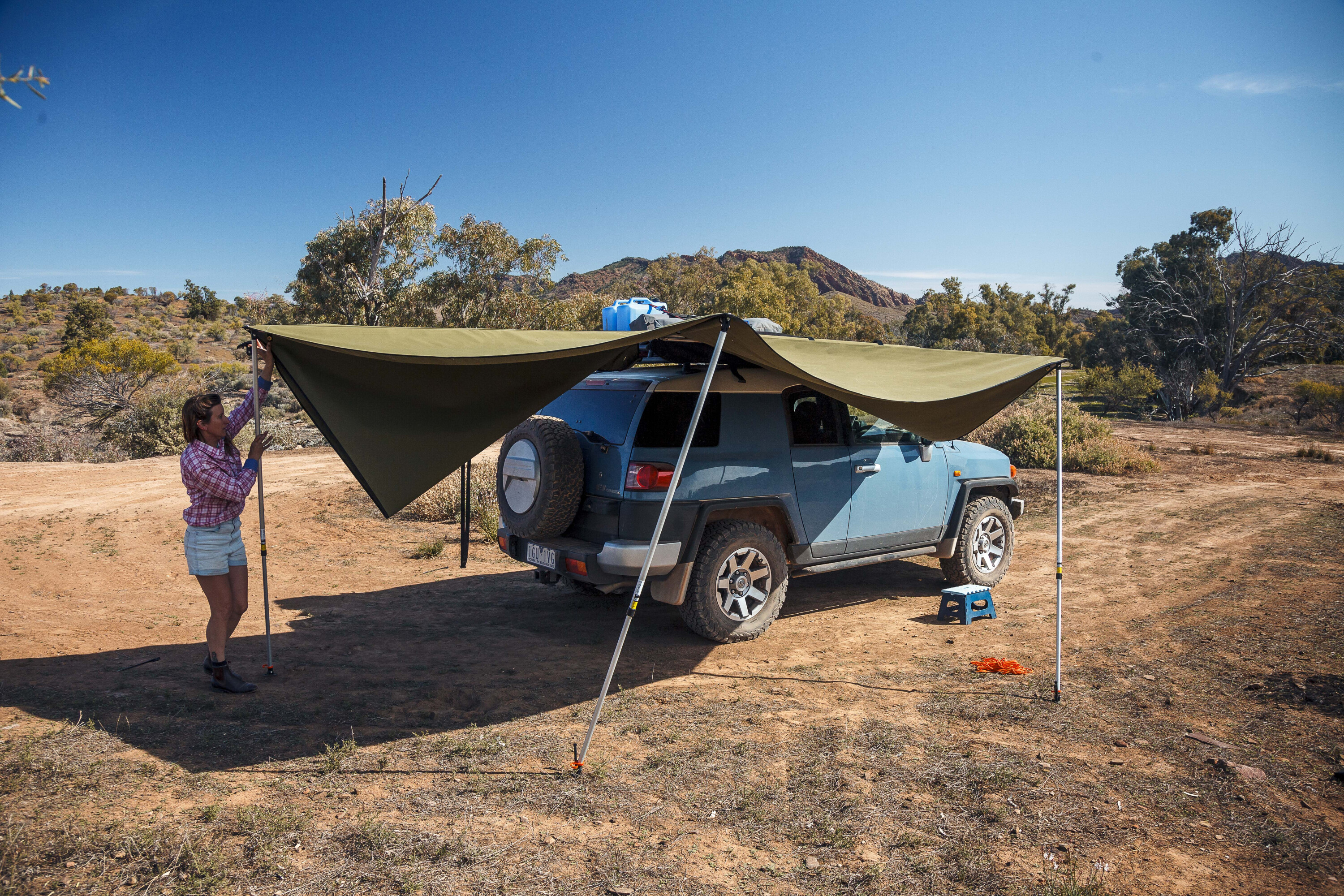
My greatest trip in the FJ was a Thelma and Louise style road trip from Melbourne, Vic through the NSW outback, up to the Birdsville Races, and returning via the Gammon and Flinders Ranges with my fellow photographer mate Jenny.
The FJ has the OEM rack and rock sliders, and initially I had a set of BFGoodrich All-Terrains that were recently changed over for a set of Cooper AT3 LT tyres, which are definitely quieter on the blacktop. Leading up to the outback trip I had a Drifta drawer kit and fridge slide installed, and a Drifta 270° Batwing awning.
I considered a slight suspension lift and adding some recovery points, and new front bumper, but indecision means I haven’t got around to it. Being a small frame at 5ft 2in, I reckon climbing in and out with a big lift would be comical.
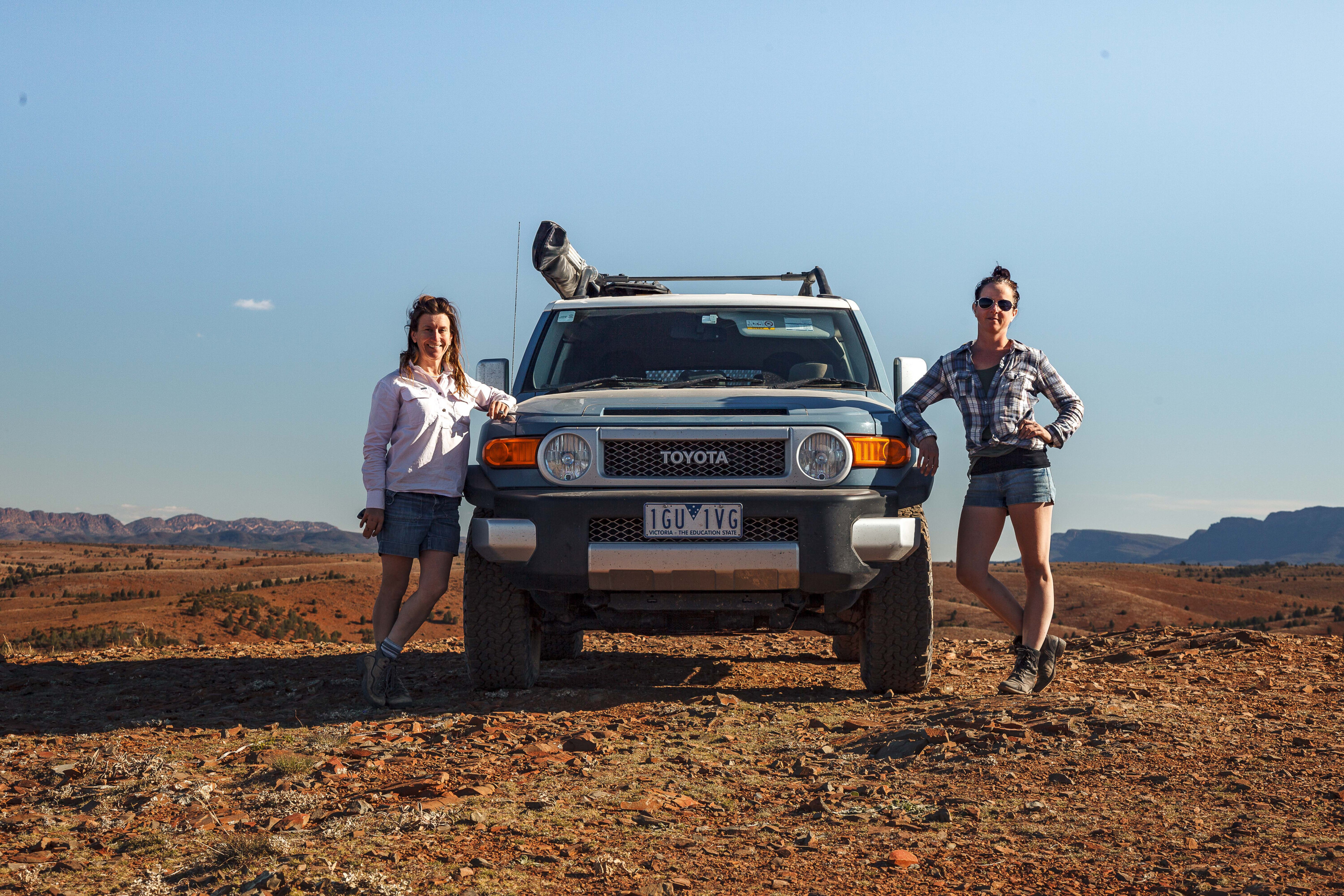
The FJ still runs well, but it’s overdue for a suspension upgrade. Since production of this model ceased the resale value has held up well.
The FJ has been my reliable steed to many a music festival, and for simple weekend trips away. Until the next adventure, the FJ, whilst not so economical, is great for loading copious amounts of camera gear and it makes an excellent shooting platform. Where to next? I’d like to venture west to Karijini NP in WA someday but until then I’ll just keep cruisin’ on.
Glenn Marshall: 2006 Toyota Prado 120 Series
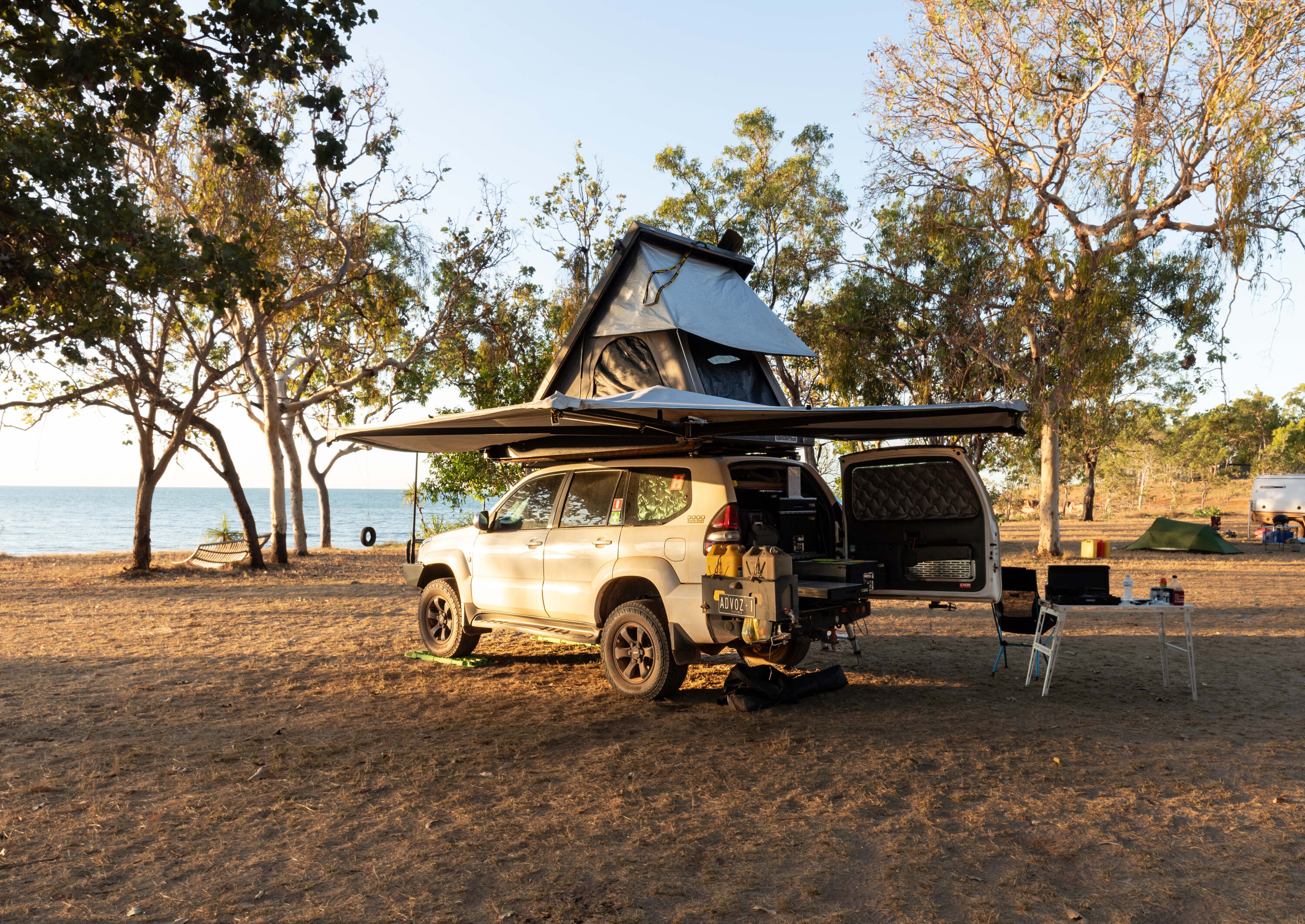
Many suggest that a Prado is for soccer mums and shopping centre carparks, but I’ve turned mine into the ultimate touring weapon that looks out of place in any carpark. I’ve been shooting and writing for 4×4 Australia since 2019.
Constructed in 2006, this is the last of the 1KZ-TE engine Prados and it has now covered more than 450,000km without a problem, however I have had the inlet manifold cleaned out and replaced the injectors and glow plugs within the last three years.
At the front, she wears an ARB Sahara Bar with GME UHF antenna, Lightforce Venom LED spotties and an Ironman 4×4 12,000lb winch with synthetic rope and Factor 55 Ultra Hook.
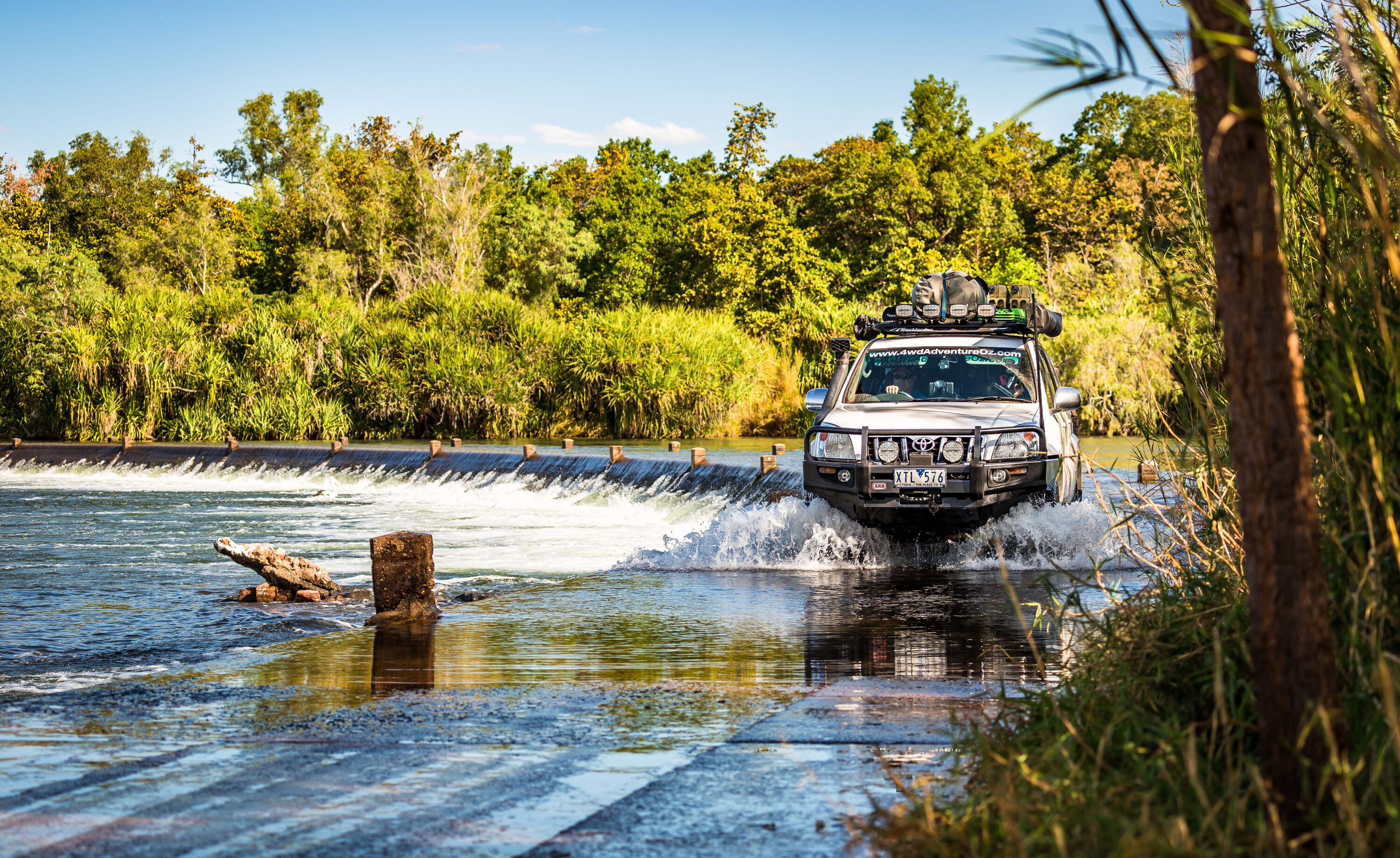
At the rear the MCC Rear Bar can carry two spare wheels or a spare and double jerry can holder, and incorporates a Lightforce ROK20 camp light.
Two valves have been fitted to the rear bar to control the Polyair Ultimate airbags that sit inside the 300-500kg Kings rear coil springs. The ARB air tank also sits behind the rear bar with the outlet fitted to the bar, while the ARB double compressor is under the bonnet.
On the roof is a Quick Pitch rooftop tent, a 270° awning and an ensuite tent with four Lightforce Striker LEDs at the front for better night vision. The shovel is secured with Yakima holders and the four TRED Pros are for levelling and self-recoveries. Four Lightforce ROK10 LED camp lights are mounted to the RTT which has internal 12V power and a Sirocco fan.
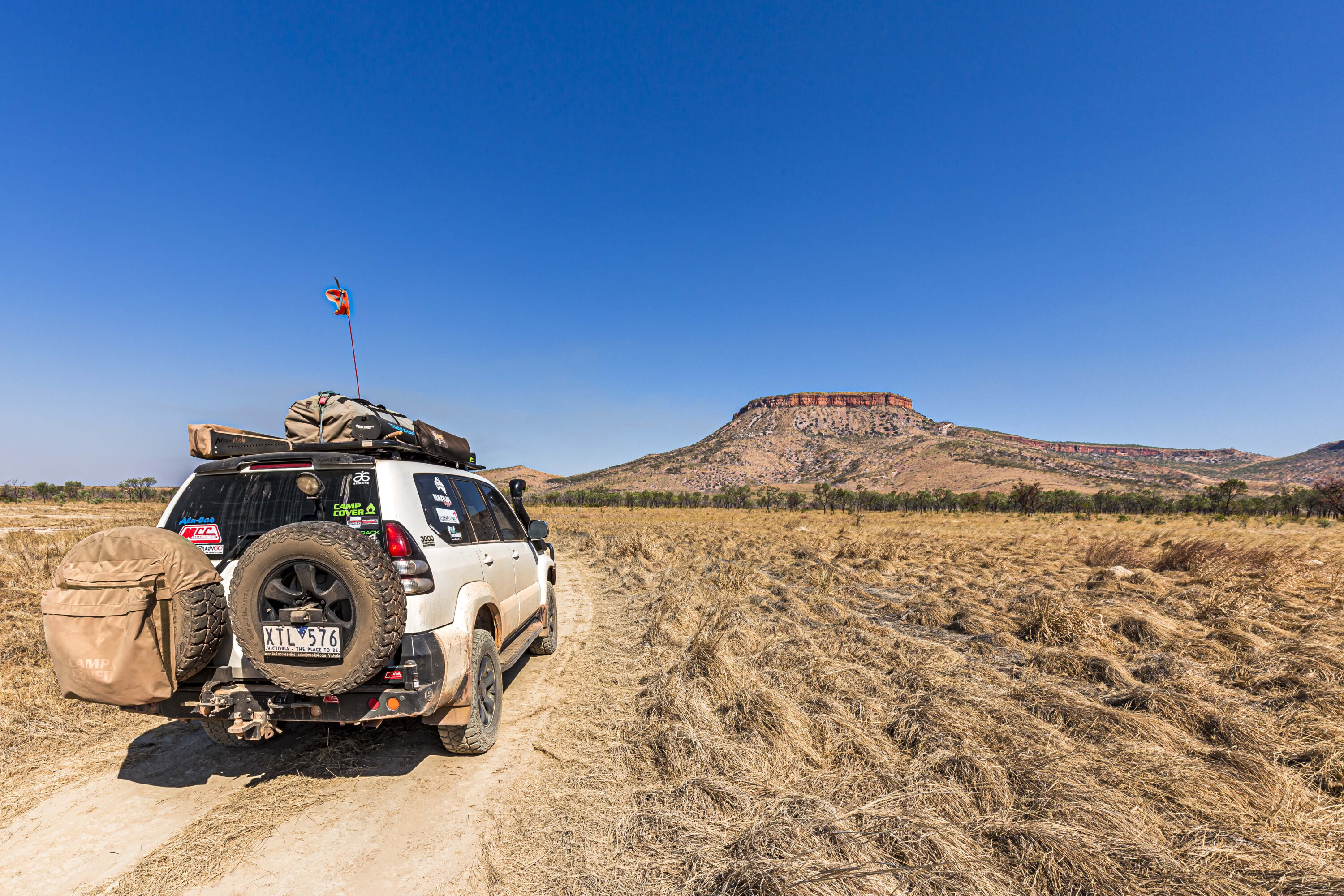
An RVSS aluminium drawer system with a top shelf and cargo barrier occupies the rear of the Prado, with an ORS fridge slide and a 44L MyCoolman fridge.
A hidden 12v water pump is plumbed to the 40L BOAB water tank that sits in the rear footwell and there’s a tap on the front of the drawers.
A Projecta PM300-BT system controls 12v power and accessories and includes a 25A DC-DC charger and 300W pure-sine inverter from Projecta. My 100Ah Amptron lithium battery is housed in an MSA battery box. The rear seats have been removed and replaced with a false floor for improved storage options.
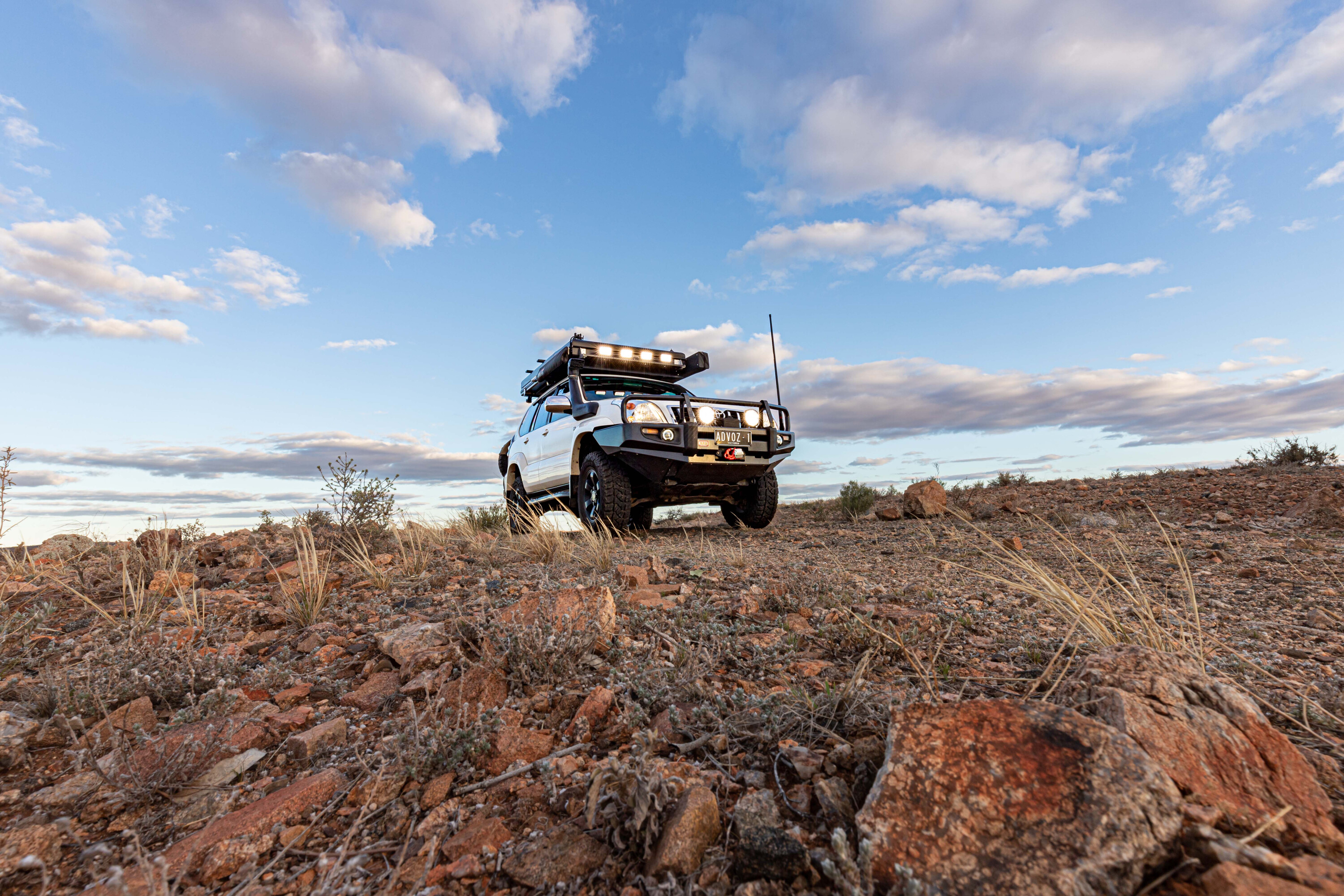
The driver’s seat is a Recaro Expert M that provides a much more comfortable driving position.
Navigation is via a Hema HX2, while a Uniden DashView 50R records everything. Navigator Gear seat buddies keep things tidy behind the front seats and the Dashboard Buddy and Visor Buddy provide additional storage.
Underneath the exhaust has been upgraded to a 3-inch Torqit Performance system, and the suspension consists of Ironman 4×4 Foam Cell Pros and Tough Dog Upper Control Arms. The lower control arms have also been replaced, as has the clutch (forced) and the rear diff (forced).
Kevin Smith: 1991 Toyota LandCruiser 80 Series
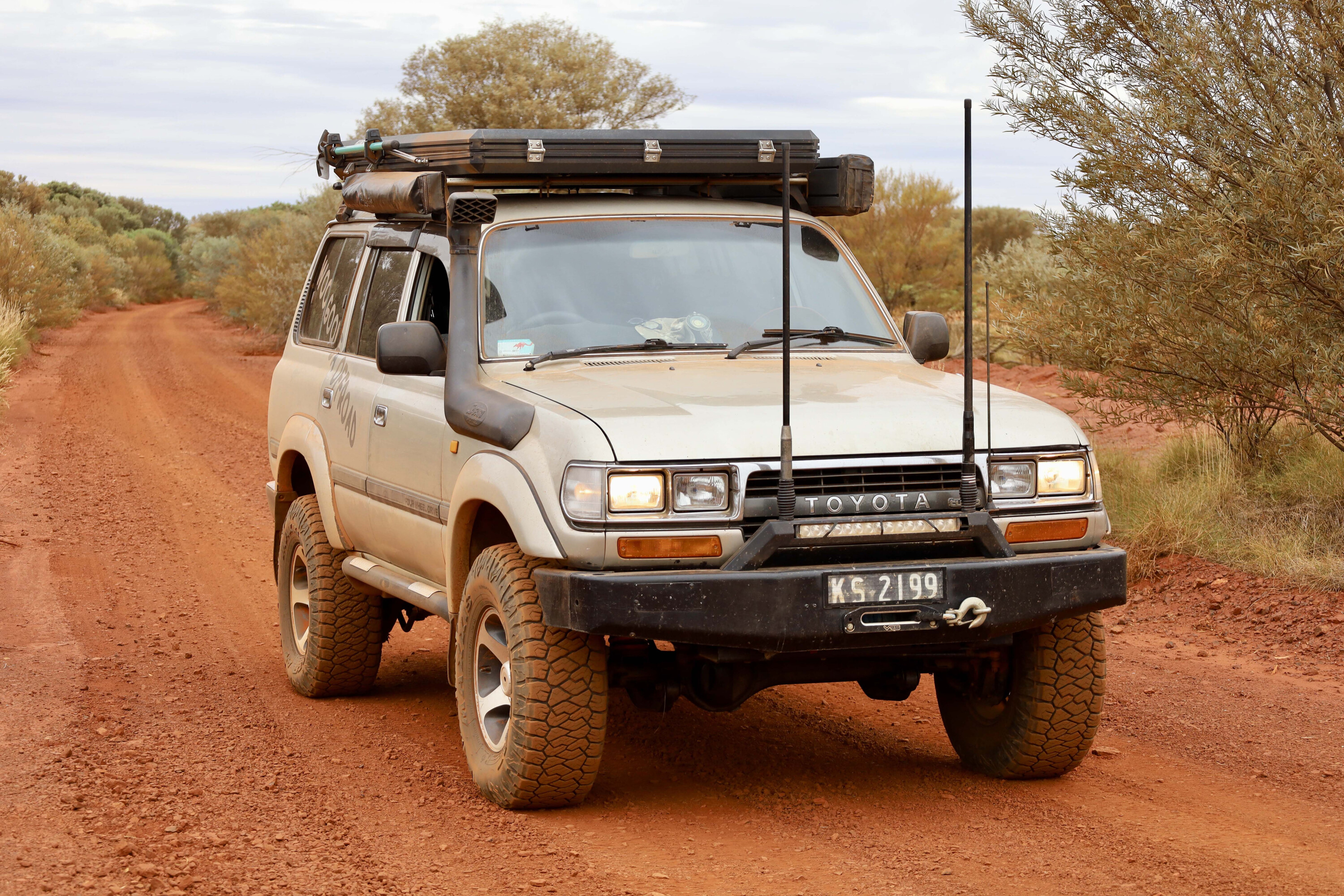
It must be around 15 years now that I have been shooting for 4×4 Australia magazine, seeking out some of the most amazing destinations that our country has to offer.
My loyal ride is a 1991 Toyota LandCruiser 80 series, and I have owned it for around 20 years. I just love the old-school retro trucks with their looks, simplicity and parts availability… no matter where I go.
Clocking just over 620,000km with its 1HD-T engine, I’ve had a great run from the old girl, and hopefully it will see a few more miles before it retires. The 80 is comfy doing the touring tracks and across deserts. I’ve just come back from nearly a year travelling extensively in WA, hitting a lot of the iconic tracks, both remote ones and tourist trails.
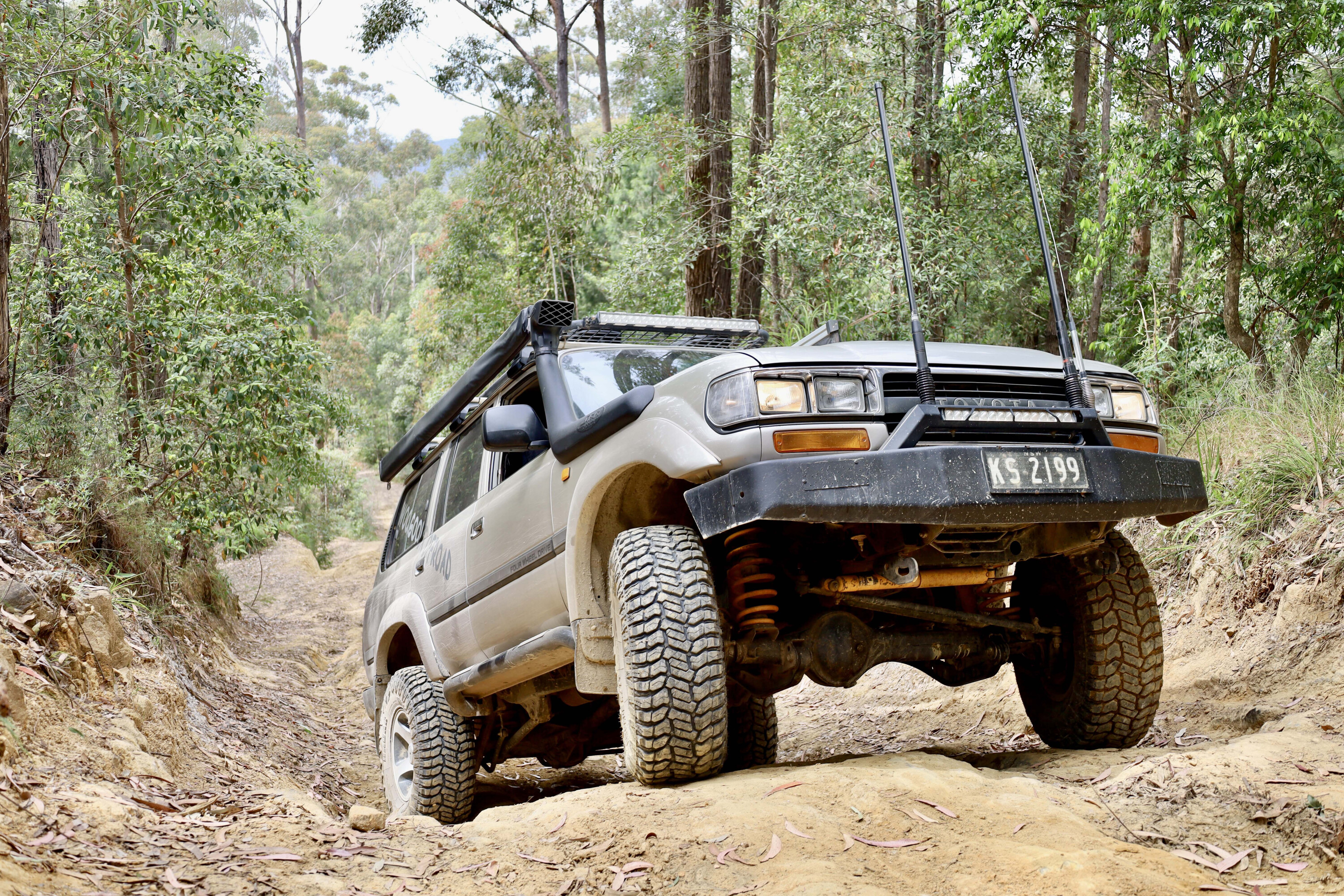
Point the old girl down a hard-slog track and it certainly will give anything a crack, like the Creb, up and down the mountainous great dividing range, and so on.
With my extensive travelling and the vehicle’s simplicity, the build for its touring and offroad life has been kept simple for many years. Upgrades include the turbo and exhaust, dual-battery setup, modified front bar with a 9000lb winch, lightbar, and a simple drawer system in the back with fridge. There’s UHF and phone comms, and I always run decent A/T tyres and good quality suspension.
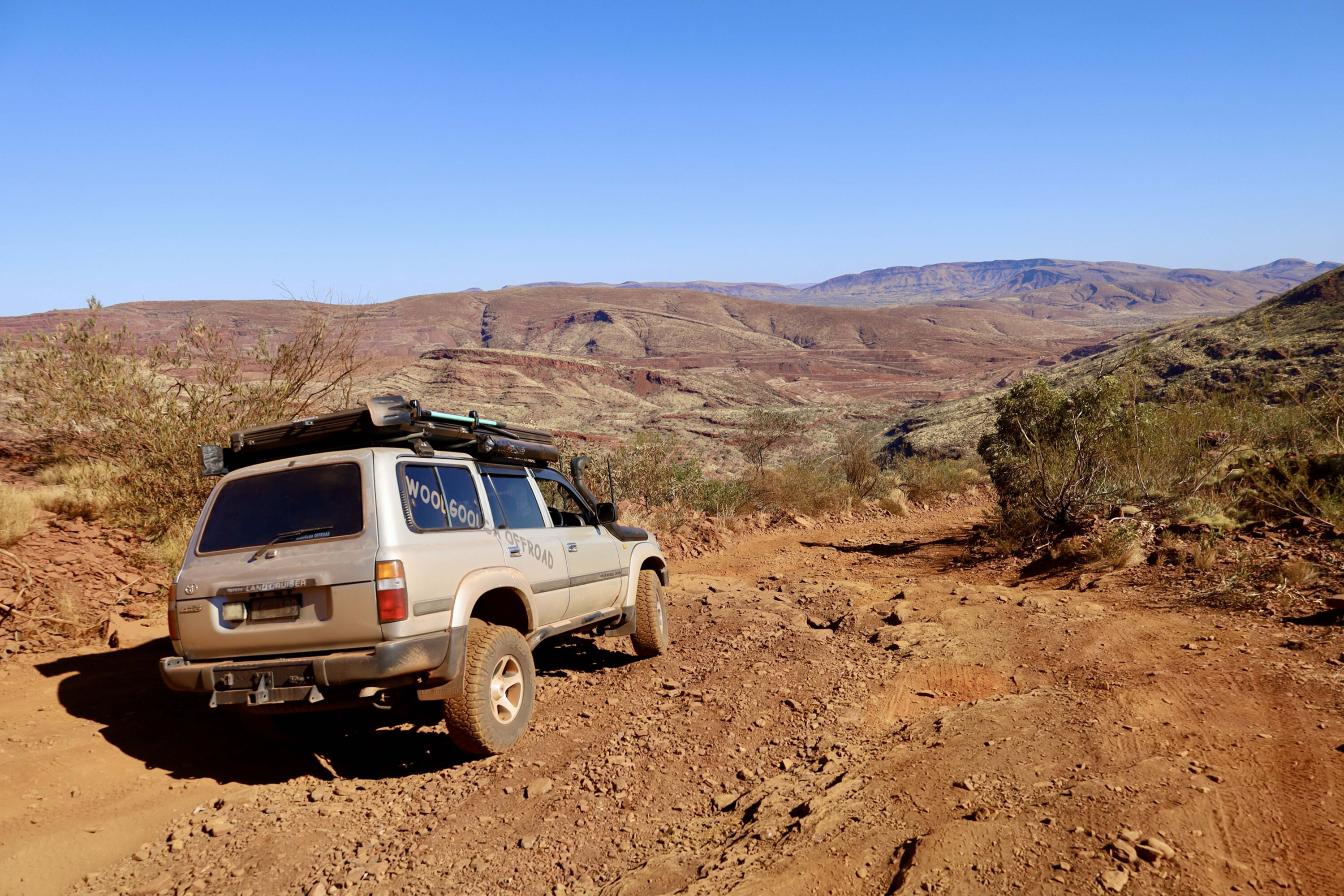
Since my return from WA, however, the 80 has gone through some bigger changes and scored a complete freshen-up.
It’s copped a full respray, sound deadening, new suspension, twin drawer fridges, a new electronic management system, a new 270° awning and shower tent, a tailgate storage setup, gullwing rear windows, pressurised 50-litre water tank with tap to supply water for the coffee pod machine (we all need one of these, right?), and a huge 3000W inverter.
My passion for the outdoors has led me all over Australia to some unique destinations and every corner of our land. So the question is, have I got a favourite place? Well, I love the remoteness, isolation and raw beauty across the Top End, the Cape and into the Kimberley, but then I love the challenging 4×4 tracks of the eastern seaboard, and then there’s the beauty of Tassie, WA and the bottom of SA. I really can’t name a one-time favourite place; I see the good in all the places I venture to.
Brad Miskiewicz: 2006 Toyota HiLux N70
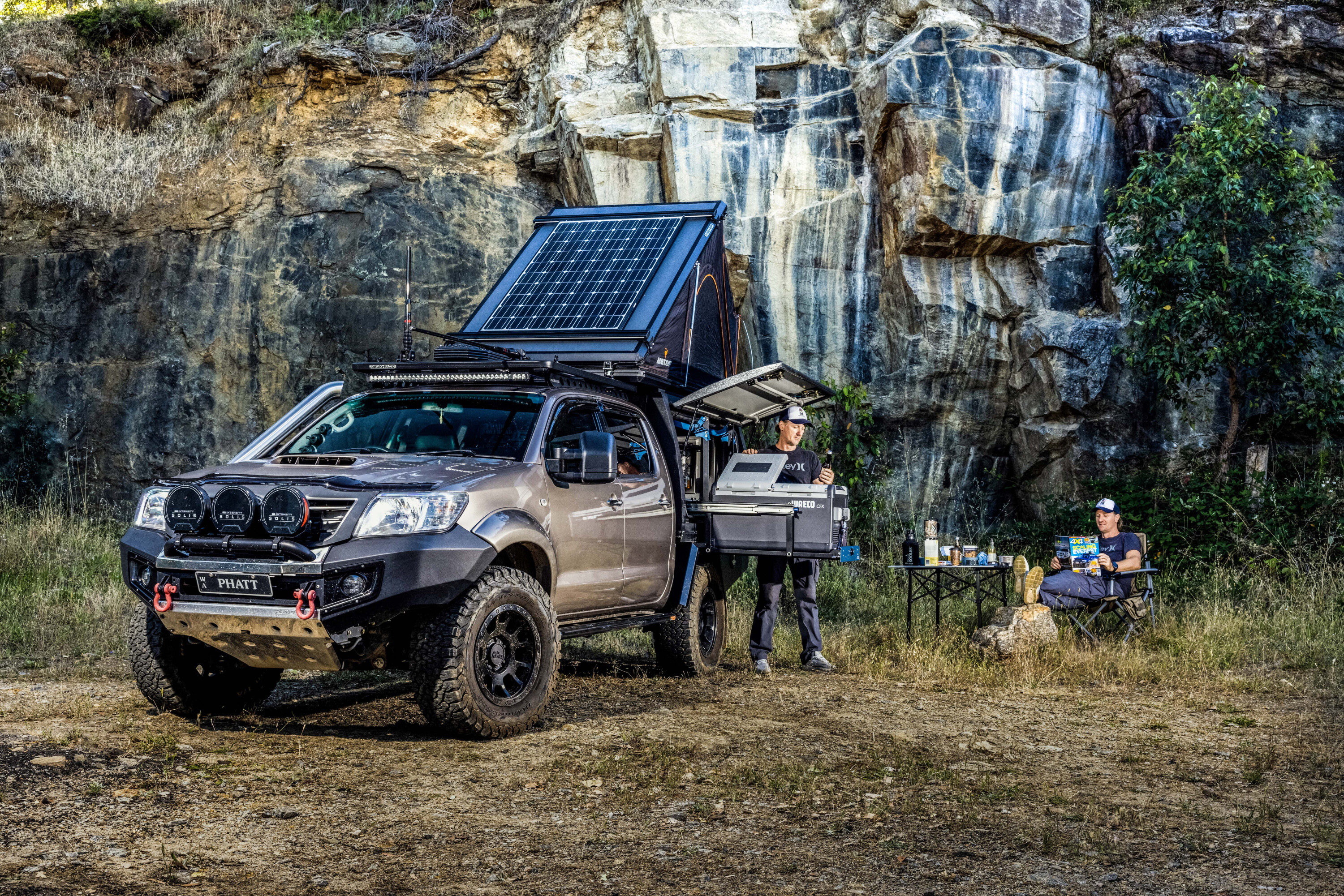
It’s no surprise to find out that one of the most popular choices for an everyday 4×4 is the humble HiLux.
The extra tech piled into the more recent N80 iteration has been impressive, but when it comes to something that can be worked on in your own driveway with relatively simple tools, the N70 is definitely the way to go.
After buying it in 2019, I carried out the usual upgrades like bigger wheels and tyres, better suspension, bar work and comms gear. Having been on multiple photoshoots all over Western Australia, and seeing plenty of modified 4X4s, puts me in the unique position of seeing what works and what doesn’t.
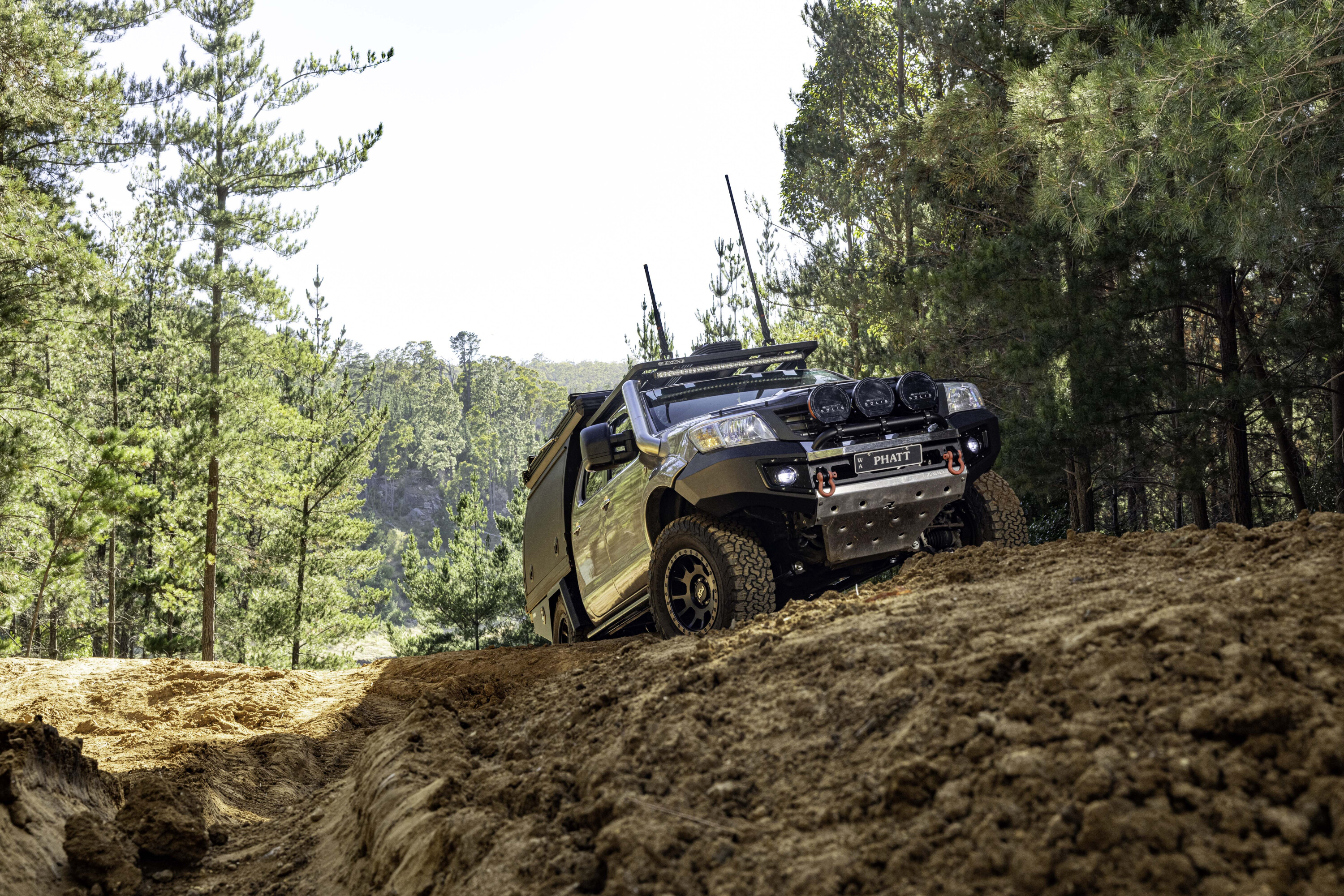
But that doesn’t mean mistakes haven’t been made with my HiLux, like selling the full aluminium canopy just before prices went bonkers.
Hopefully it’ll run one again someday, but for the time being the tub with its Marketplace fibreglass topper and self-made drawers is doing the job.
This much-messed-with HiLux has been treated like it was made of Lego with parts being changed out constantly. In fact, selling the old parts has made the exchanges easier to achieve. Starting out as a no-frills manual 2006 Workmate, it’s now pretty much a 2014 Facelifted SR with a five-speed automatic conversion, and 2014-model electronics, interior, dash, safety systems and diffs.
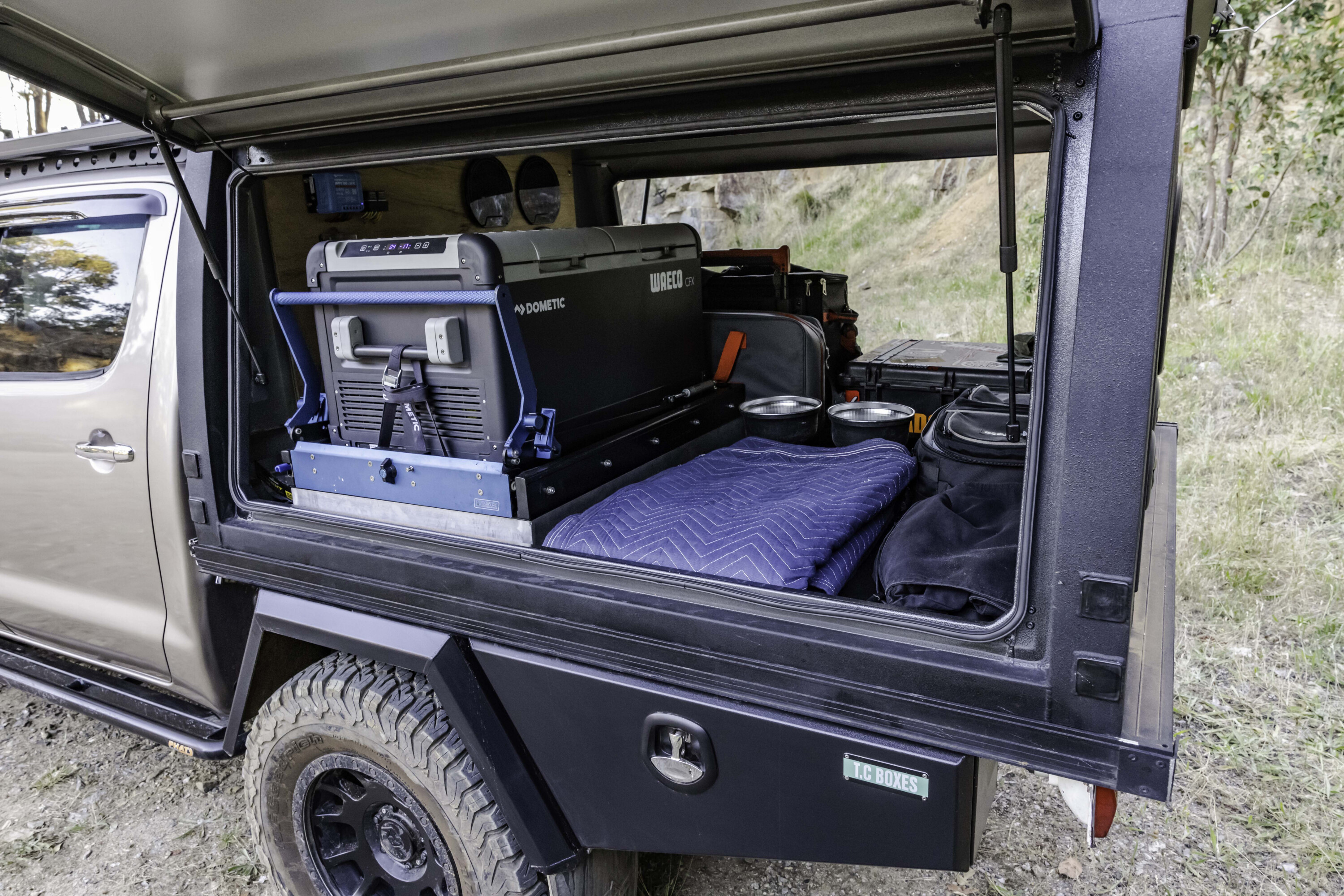
The latest modification is a front brake upgrade to 120 Prado rotors and calipers as featured in the February 2024 issue of 4X4 Australia.
The 1KD-FTV has close to 280,000km on it so far, with ancillaries like injectors, an AC compressor and an alternator thrown at it, but next up is a tune to make the most of the Lux Fab 4-inch exhaust and PDF intercooler, with a tweak or two to the auto while we’re at it.
While heading south is always welcome for the beaches and the forests, the best trip in recent memory in the HiLux was to the beaches of Broome in WA’s far northwest, before coming back through the spectacular Karijini. Cyclone Ilsa had just come through the area with some creeks becoming raging torrents, but the roads were quiet and the temperature pleasant in the high 20s.
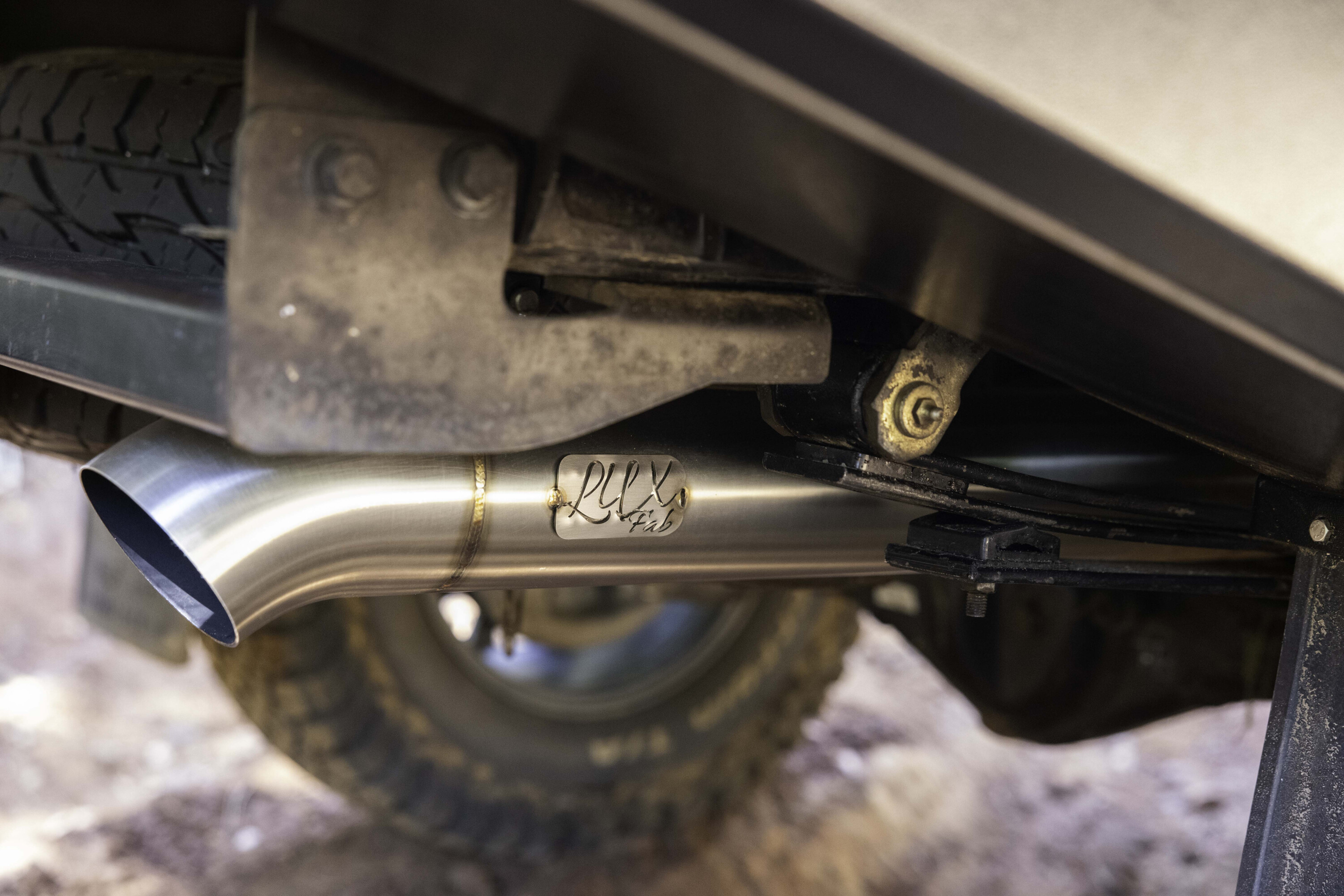
After mornings spent swimming gorges and exploring, we’d lower the tailgate and cook up a feed under the shade of the paperbarks – beaches and gorges, what a blast.
While the HiLux is a fantastic 4×4 that is super capable with everything that’s been thrown at it, there’s a project in the shed nearing completion that satisfies my affliction for imperfect 1980s 4x4s: a 1985 Land Rover County 110 that now rocks a choppy 6.0L LS V8 complete with 6L80E six-speed auto, all monitored through a customised Powertune Digital Display Dash.
The County also has airbag suspension with height and pressure monitoring, and 35-inch beadlocks custom machined for the perfect offset. If you’re a Landy fan you can follow along on Instagram @_only_lands_ [↗️].
Chris Collard: 2002 Toyota Tacoma TRD
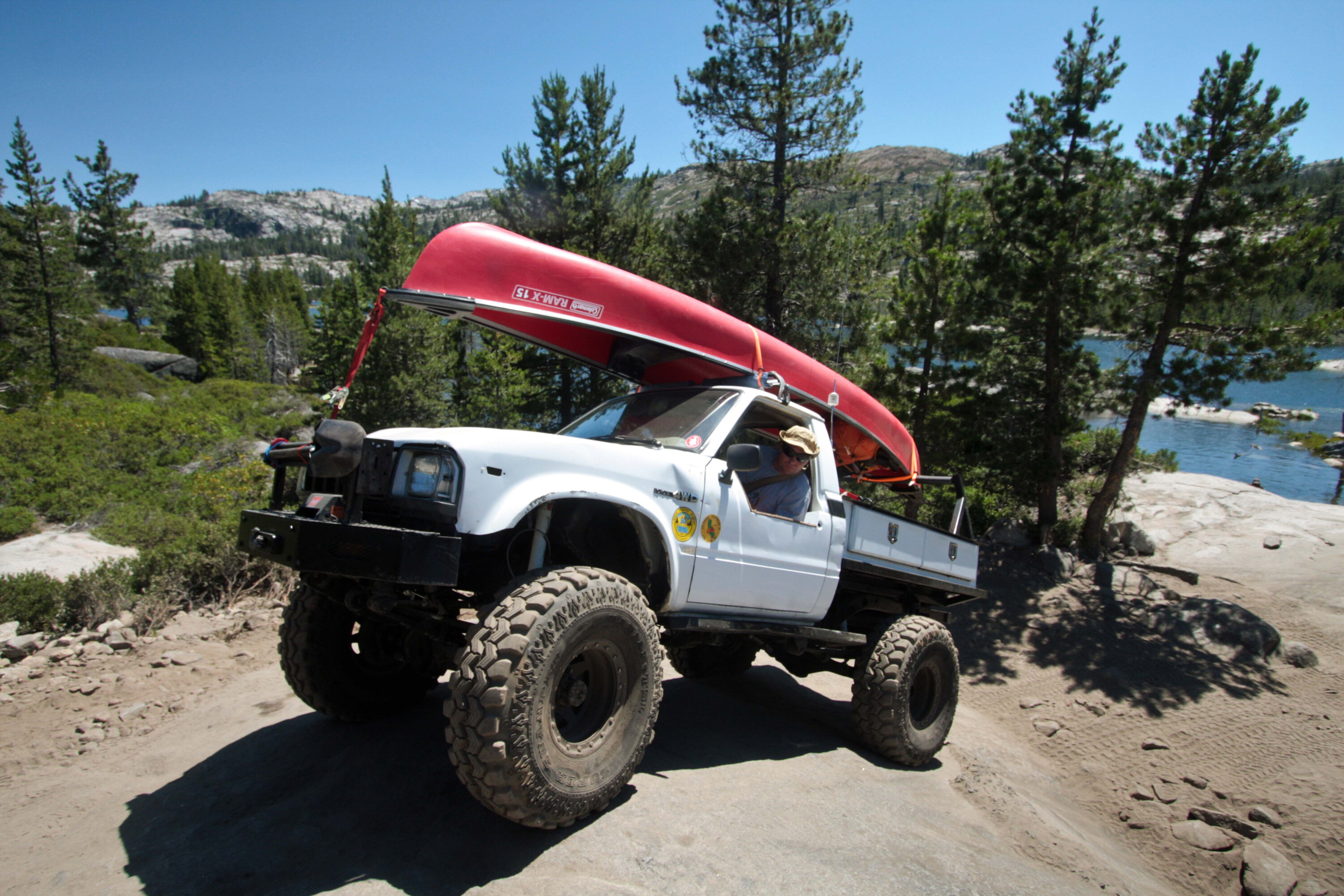
The motivation that drives us to buy a new 4×4 can come in many forms. For me, at least in the case of my Tacoma, it struck while I was replacing the head gasket on my beloved ’82 HiLux amidst a Baja dust storm.
My buddies, both driving Tacomas, looked so comfortable in their newfangled trucks. But move to the IFS/EFI air-conditioned dark side? A blown U-joint and broken leaf spring later, I considered blasphemy as I limped my old friend back to the US border.
In 2004 I purchased this ’02 Tacoma TRD with 27,000km on the ticker. It would be my primary backcountry rig, and because I often travel solo, all modifications would require a 100 percent reliability factor. I started with an All-Pro rear bumper, ARB bull bar fitted with a Warn winch and IPF Lights (now ARB AR21s).
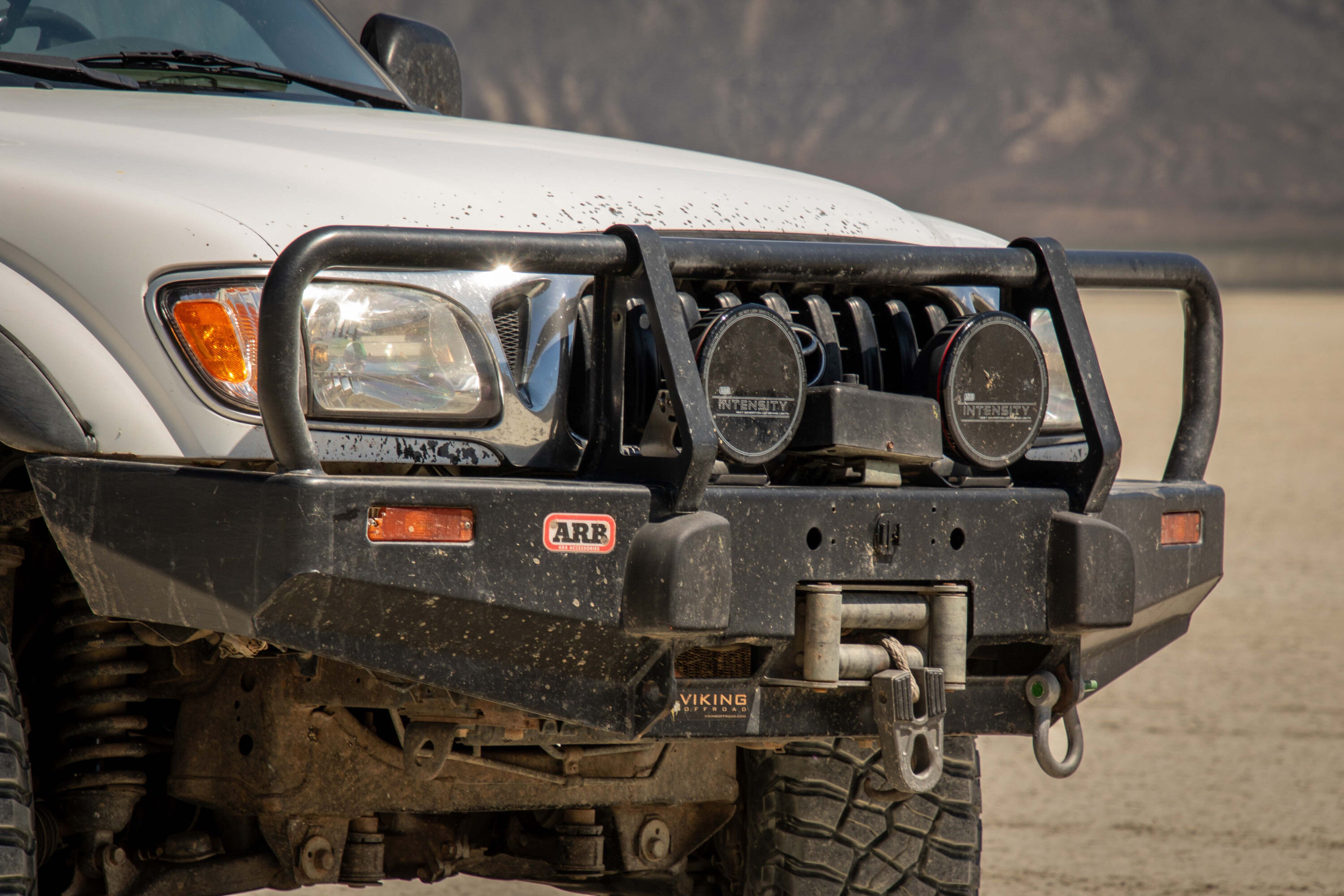
It has had various tyres and suspensions, but my ‘keeper’ setup is Icon Vehicle Dynamics’ CDC coil-overs, custom Deaver rear springs, and BFGoodrich KO2s on Mickey Thompson wheels.
It came with a Leer canopy, but I occasionally run my canvas Bestop SuperTop. I’ve slept in ground tents all my life, but have spent more than a year living in rooftop chalets. I have two, an AutoHome hard shell and Tepui fold-out; each fills a different need.
While many pump up their mill’s horsepower, I didn’t want to compromise Toyota’s unmatched reliability, and the drivetrain is bone stock – save a Safari Snorkel air intake.
Instead, I selected accessories for their utility: a Premier Power Welder, ARB compressor, dual Odyssey Extreme batteries, and 2000W inverter start the list. Recovery gear is a mix of ARB, Factor55, Bubba Rope, MaxTrax, and of course a Hi-Lift jack.
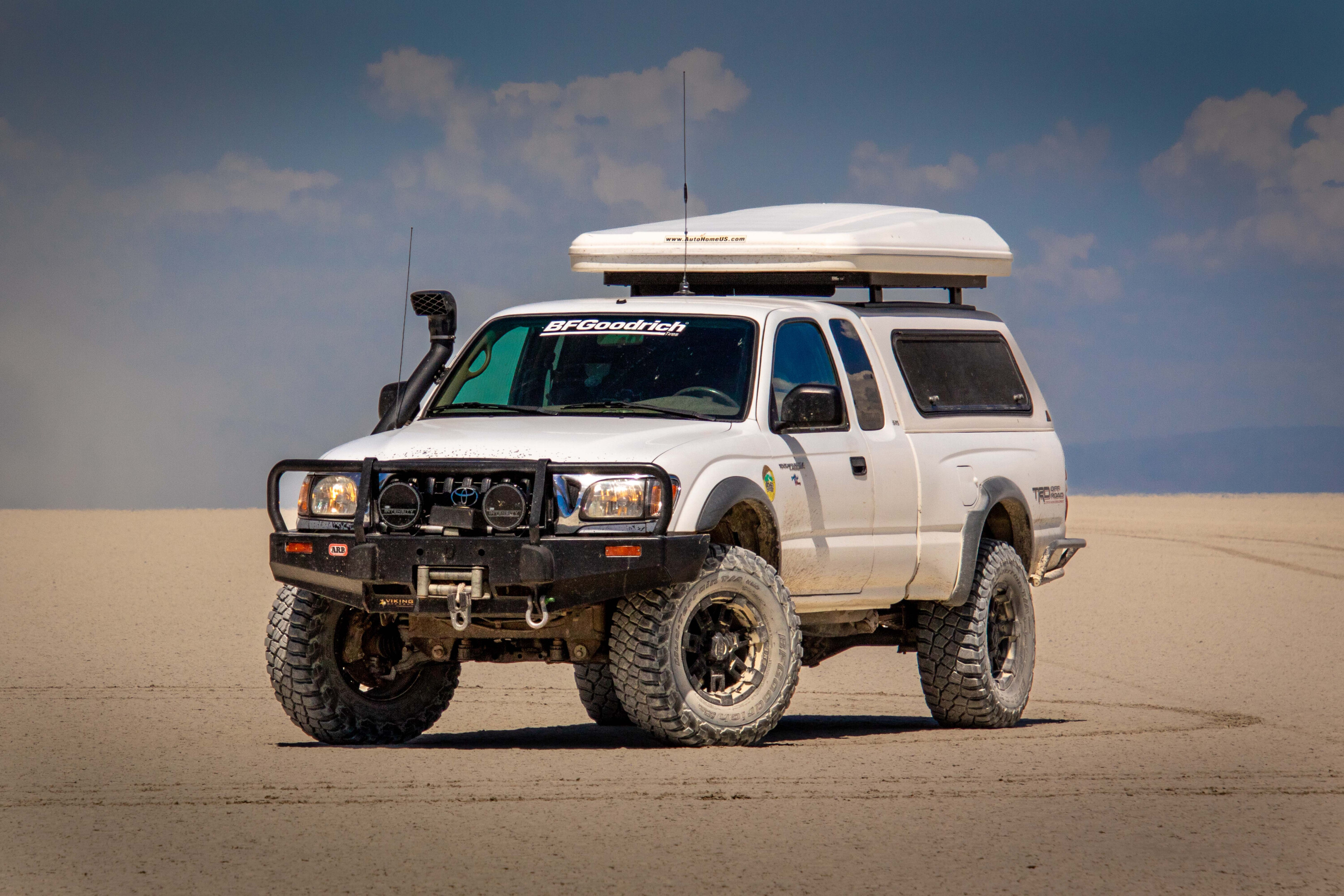
An ARB Fridge sits behind the driver’s seat and out the back is a home-built 80s-style carpet kit. My previous publisher called it “white trash”, but it’s been extremely durable and provides incredible storage.
You’ve seen my now-old Baja Taco in Mexico’s Sonora Desert, on America’s emigrant trails, and 4×4 Australia Editor Matt Raudonikis helped me pilot it down the Baja peninsula chasing the NORRA Mexican 1000. If you asked what I love about it… everything! I trust it.
The odometer now reads 500,000, and I’d take no issue in heading back to Baja or South America tomorrow. As for my old HiLux (643,000km), it awaits spring thaw and summer runs on the Rubicon, Fordyce and Dusy-Ershim trails.
Dan Grec: 2021 Jeep Gladiator Rubicon
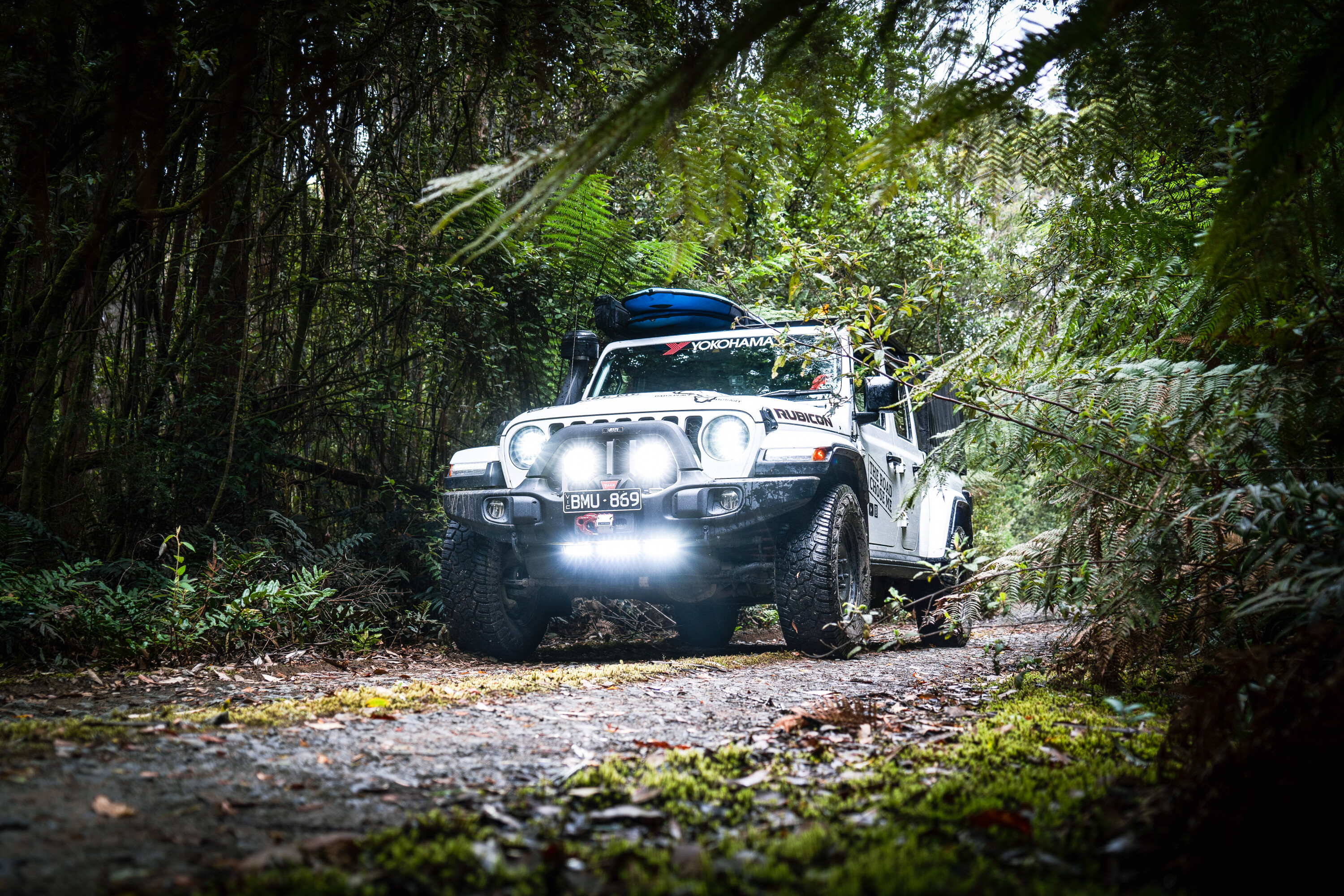
A Jeep is not everyone’s first choice to explore and document the wild and remote corners of Australia, which is exactly why I chose it.
I’ve never been one to follow the crowd, and after quitting my engineering job to explore Africa and the Pan-American Highway from Alaska to Argentina, there’s no reason to start now.
I started with a fully loaded 2021 Gladiator Rubicon, which comes from the factory with front and rear lockers, electronic sway bar disconnect, 4.1 axle ratios and a very low 4.0:1 low range, giving a stupidly low crawl ratio of 77.2:1.
With the addition of 33-inch all-terrain Yokohama Geolandar tyres and a 50mm lift from AEV, the oversize Jeep is a flex and crawling weapon, easily walking up everything the Old Tele Track could throw in it’s way without lifting a single tyre.
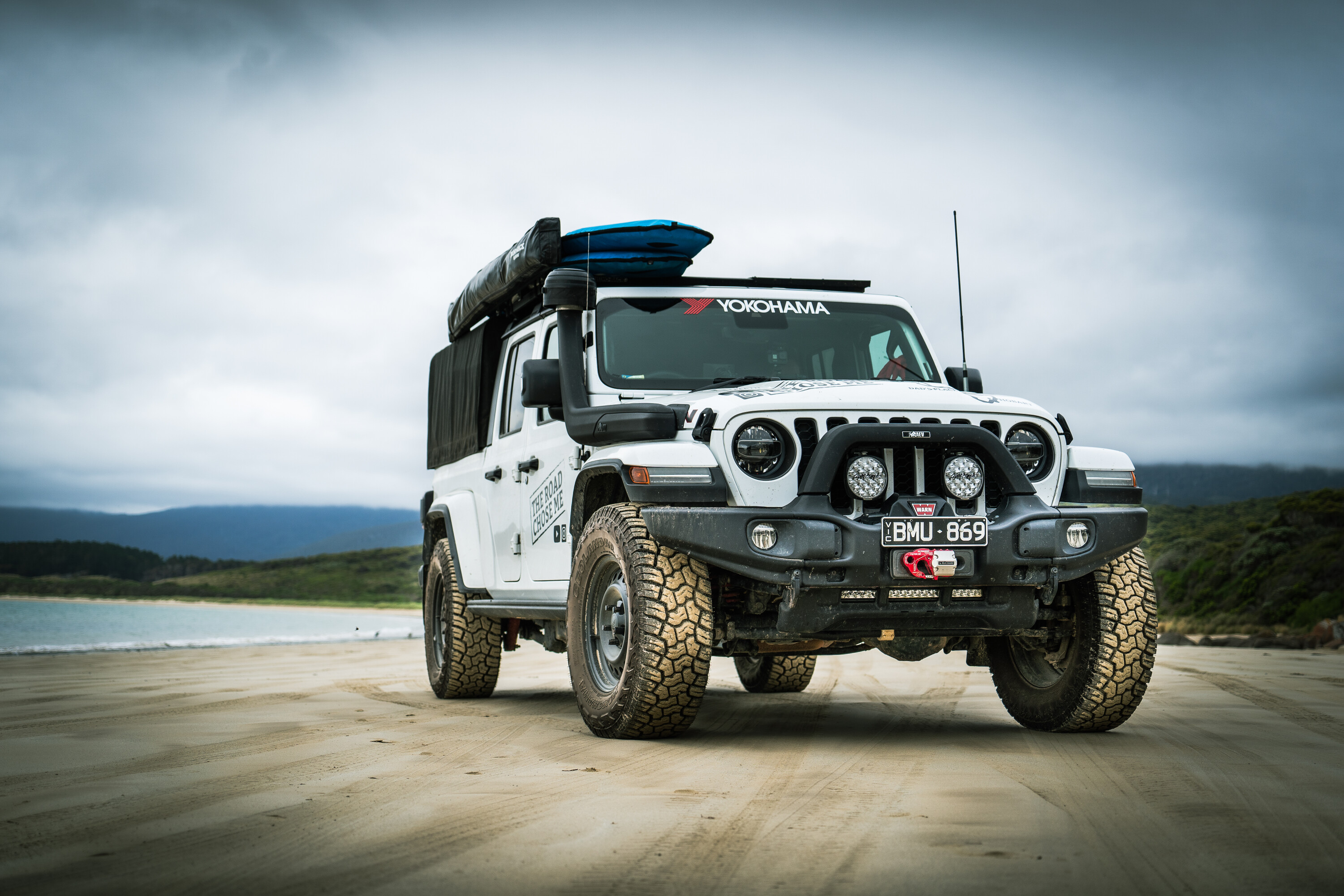
To enjoy long stretches out in the Simpson, Cape York and remote WA, a large kitchen drawer, fridge and storage drawers were added to the bed, all powered by solar and a Lithium battery from Renogy Solar.
A 55L drinking water tank with pump and filter added some luxury in the form of roadside showers, and a Long Ranger fuel tank added sorely needed range. An extremely tough stamped boron steel front bar and skid plate from AEV protect the radiator from chance meetings with skippy, and a pair of LED driving lights from Lightforce help me spot him as early as possible.
Up top a Rhino-Rack platform lets me bring surfboards, mount the solar panel and it provides a nice high mounting point for the sand flag.
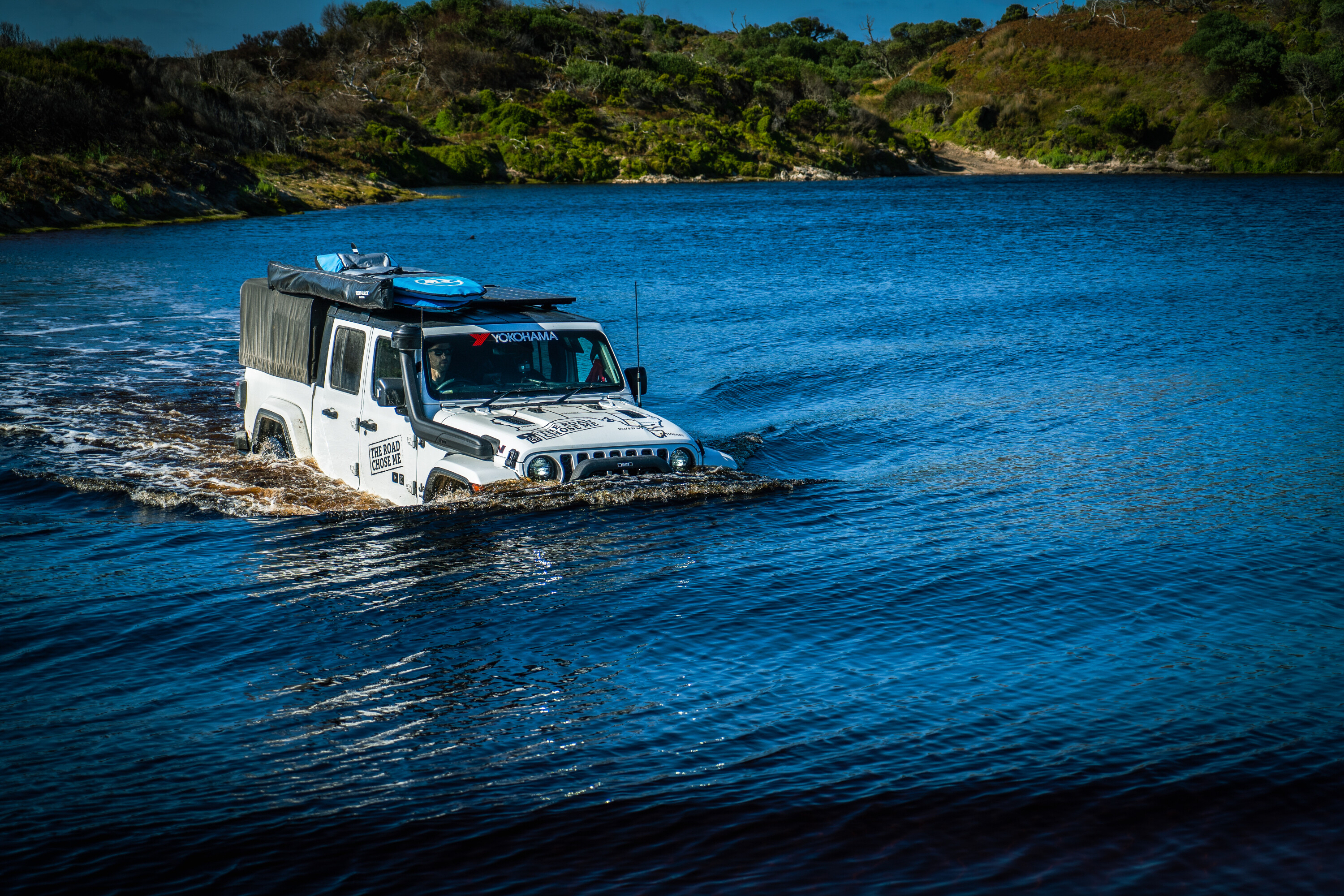
Part of the backseat was replaced with a lockable storage box fully wired up to keep all my camera gear and drone safe and continuously charged.
The Gladiator has taken me all over Australia to everywhere I dreamed of exploring, and I can easily say the most out there adventure was 1600km on the Canning Stock Route without once seeing another vehicle or person on the track. The scorching sun and a tropical thunderstorm tested both man and machine, and I’m happy to say we came through to the other side unscathed.
After 57,250km around Australia, and 18 months shooting for 4X4 Australia, the Gladiator has proved flawless and continues to put a smile on my face.
Want to stay updated on the Gladiator? You can follow along on YouTube and Instagram @TheRoadChoseMe [↗️].
I had just received a ScanGauge2 to fit to my new Troopy when my son, Trent, dropped another OBD2 gauge on my workbench and said, “These are better, dad!”
With that comment I opened the box to find the UltraGauge unit along with a mounting bracket designed to attach to the A-pillar of the vehicle. The unit itself doesn’t come with any mounting kit; although, there are three options available from the website, the cheapest being a small patch of Velcro.
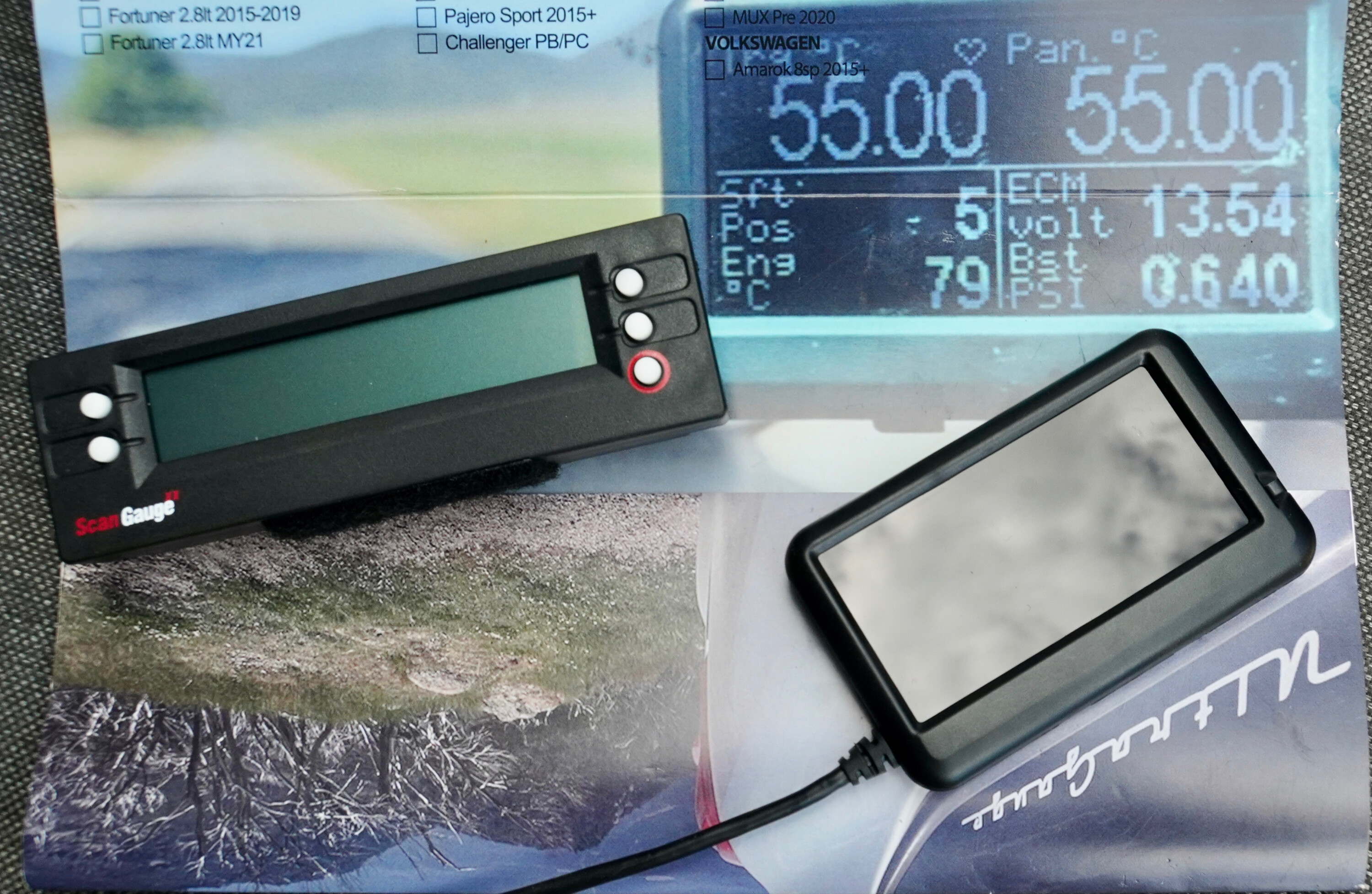
We fitted the gauge to the Troopy, plugged the cable into the OBD2 port located beneath the steering column, and attached the mounting bracket to the A-pillar using one of the grab-handle bolts as the mounting point. This setup so far holds the unit firmly in place, but we’ll see how it likes corrugations later on.
While the standard UltraGauge is designed to suit all makes and models, the Australian distributor pre-programmes some of the parameters to suit specific vehicles. In the unit fitted to my Troopy, this meant it immediately displayed engine temperature, engine speed (RPM), battery voltage, exhaust gas temperature (EGT), and engine load in percentage format. A small beating ‘heart’ at the top of the screen indicates that the gauge is monitoring everything correctly.
The number of engine and transmission functions the unit will display depends on what vehicle you have, the known codes it generates, and what you select to be shown. For example, on the 70 Series LandCruiser the UltraGauge shows RPM and vehicle speed (if selected), along with distance travelled since the trip was reset, average fuel economy in L/100km (or mpg), run-time in hours and minutes, and a whole lot more.
However, it doesn’t show turbo boost pressure, transmission oil temperature and other parameters, but if you drive a 200 or 300 Series, for example, you will be provided a more comprehensive number of gauges. Engine oil temperature and exhaust pressure, for example, are only supported by a few vehicle makes (less than one per cent).
The UltraGauge also displays any engine-trouble codes generated, and it proactively scans for potential or intermittent faults while you are driving and alerts you if trouble is found. If the vehicle’s annoying ‘check engine light’ comes on, the UltraGauge can turn it off easily and quickly.
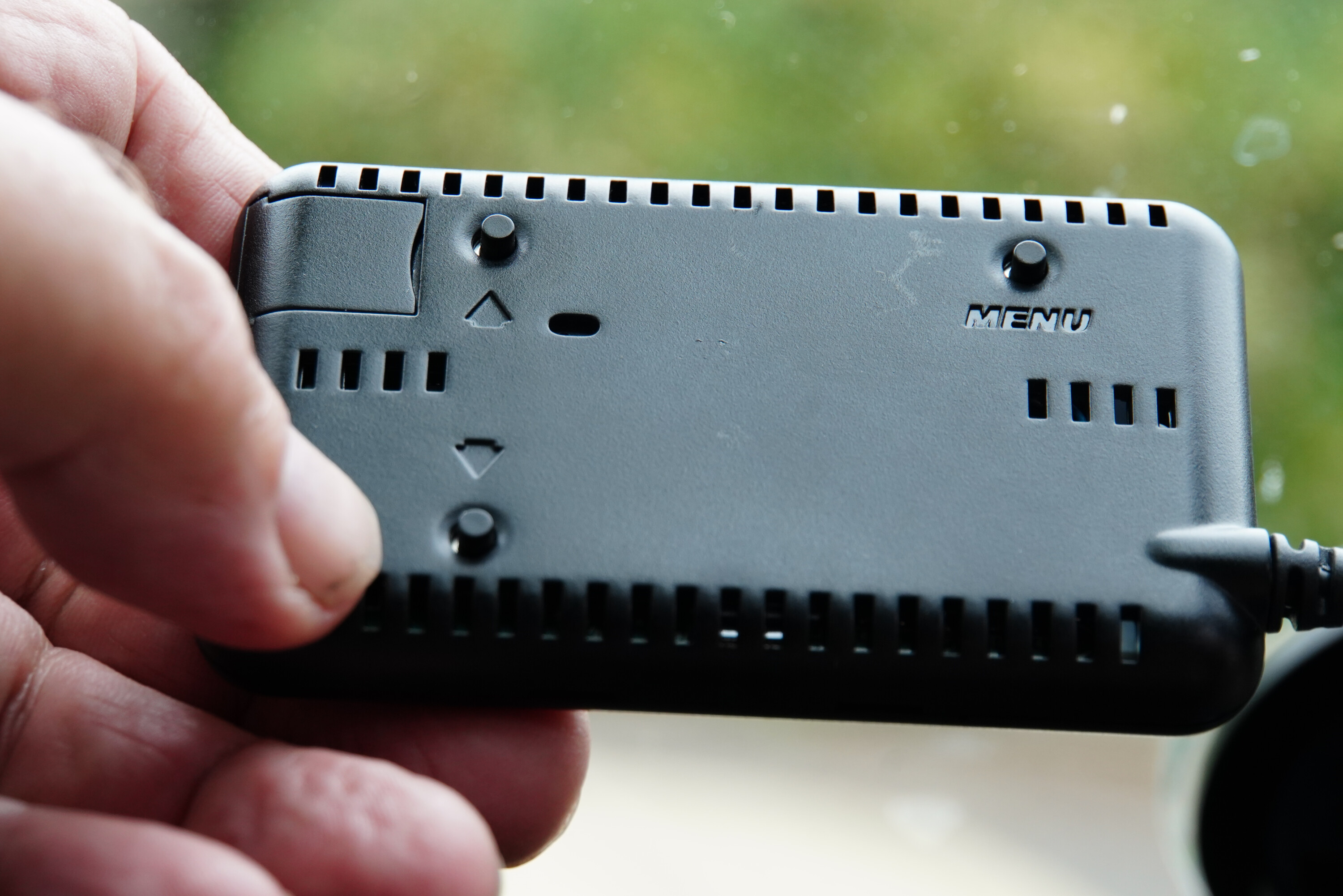
The UltraGauge can display seven separate pages of gauges, and each page can independently be configured to display four, six or eight gauges. I’ve only used two pages with eight gauges displayed on each page. You can set the unit to automatically scroll through the different pages, or like me just have the first page displayed and then manually select the second page if desired. You can also select alarms for low fuel and more.
There’s a menu button and up and down buttons on the back of the unit. Once you’ve used each of the buttons and selected a couple of different gauges you’ll find it’s pretty easy to navigate the UltraGauge and to select different pages and gauges, and the appearance and location of said gauges on different pages. Using the same buttons, you can select a number of alarms that will trigger when a set parameter is exceeded.
A comprehensive web-based start-up guide provides all the information you’ll need to operate the UltraGauge and to tailor it to suit your requirements.
So far I’m impressed with this unit and it’s now the gauge I refer to for engine monitoring. Anybody want a cheap ScanGauge2?
RRP: $259
At first glance, the ARB Altitude doesn’t offer much of an insight into what makes this top-of-the-range rooftop tent so special, but dig a little deeper and the hidden secrets will blow your mind.
The Altitude offers an innovative design and is packed full of features unique to the traditional rooftop tent market. With a simple one-touch set-up, the sturdiest ladder around, and modern internal storage, you will enjoy a sweet night’s sleep wherever you set up camp.
“The derivative of innovative design, smart engineering and quality in-house manufacturing, the ARB Altitude RTT provides a luxury solution to enable off-grid living with convenience, comfort and accessibility,” said Sandy Fiske, ARB’s product manager. “Succeeding various challenges associated with pioneering new technology, the team have done a fantastic job developing this welcomed addition to the ARB Touring product mix.”
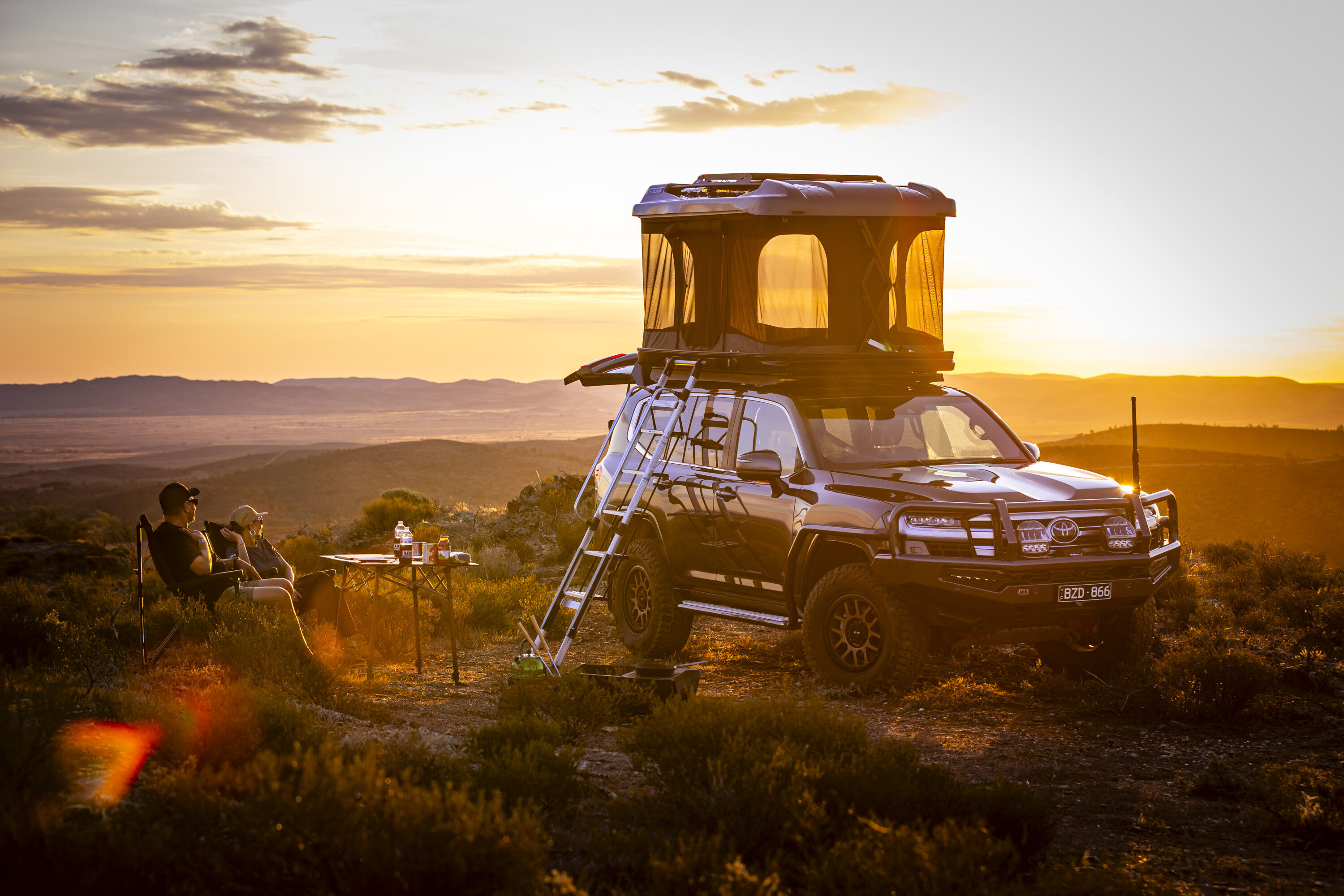
The tent is constructed from a durable fibreglass that’s protected by a two-tone grey gel coat. The integrated roof bars up the top utilise slotted channels for easy transport, and it’s where the optional 120W solar panel is designed to sit. The roof has a dynamic rating of 20kg and can be lifted with this amount of weight still attached.
Up front is an integrated wind deflector, and lockable handles are positioned on both sides. Offering double-sided entry, the ladder attachment rails include built-in dual-temperature lighting that illuminate the ladder at night. The height-adjustable full-sized ladder with steps and side rails is stored within the rear of the shell.
The Altitude utilises an automated electronic opening and closing sequence, removing any manual interaction with the tent to ensure a convenient and hands-free set-up. Using two linear actuators, the innovative ARB Smartfold internal hinges ensure the 380gsm canvas doesn’t get caught when opening and closing – a manual failsafe has also been included.
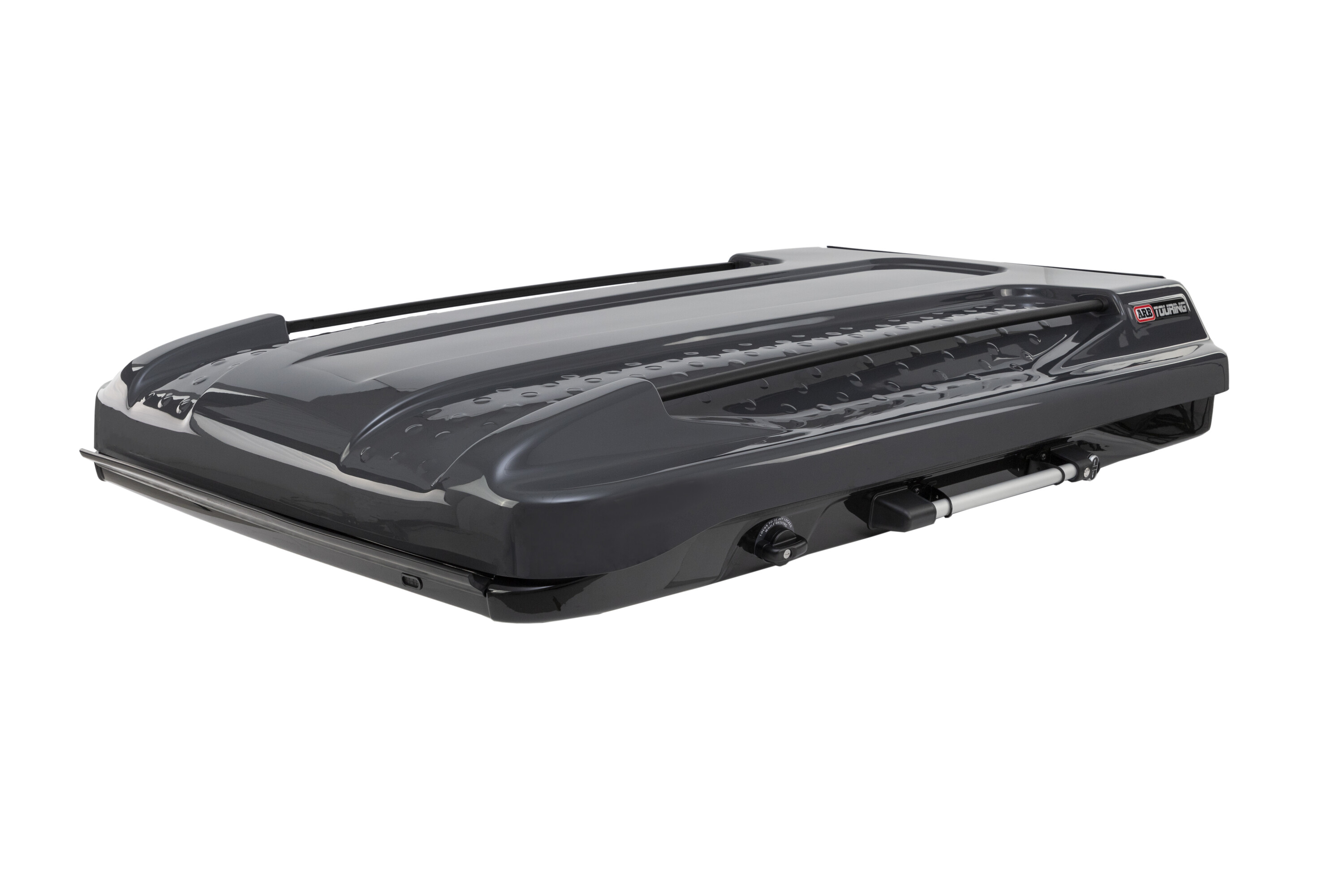
Large windows offer 360-degree panoramic views and feature fluorescent zippers, and the windows can be closed by zipping up the internal canvas walls. A 70mm double mattress provides a comfortable sleep, while internal dual temperature and dimmable LED strip lights illuminate the tent. For added strength, the floor is constructed using a 20mm honeycomb core.
Recessed into the lined roof are two storage nets, providing the perfect place for your pillows. There is also a comprehensive 12V system that is powered by an Anderson plug connection and includes USB and USB-C charging outlets, a 12V accessory plug, a 12V power isolator and controls for the roof-mounted two-way fan that has extraction and blower settings depending on the climate.
There are plenty of storage pockets internally for drink bottles and mobile devices, and there is even a provision in the roof to mount a tablet or phone to watch a movie while lying in bed.
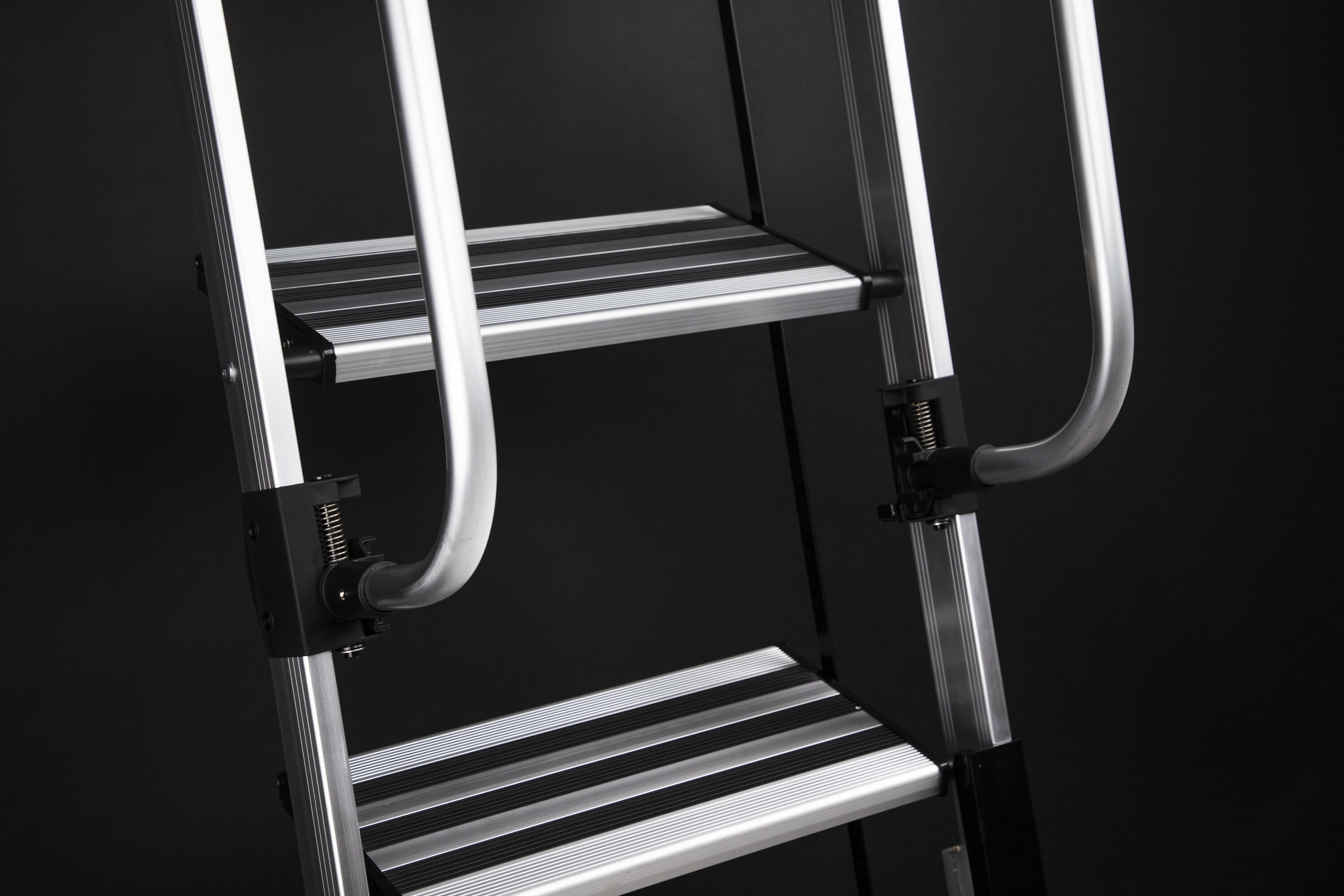
With a mounted weight (including the ladder and mattress) of 106kg, the Altitude is suitable for a variety of vehicles, but you will need to check with your vehicle manufacturer for roof-load capacity. When closed the rooftop tent is 2253L x 1612W x 372H (mm), and it has a height of 1339mm when open. The Altitude has a price of $7249 including GST (east coast metro).
Optional accessories include a ladder extension, 120W solar panel kit, side awning kit, hitch step for easy access to the ladder, roof cross bars, and a range of mounting options to suit a variety of vehicles.
myCOOLMAN recently launched its Recreational Series in Australia.
This new series of portable fridges is packed with technological features guaranteed to ensure Australians can enjoy the great outdoors all day long, whether at work or play.
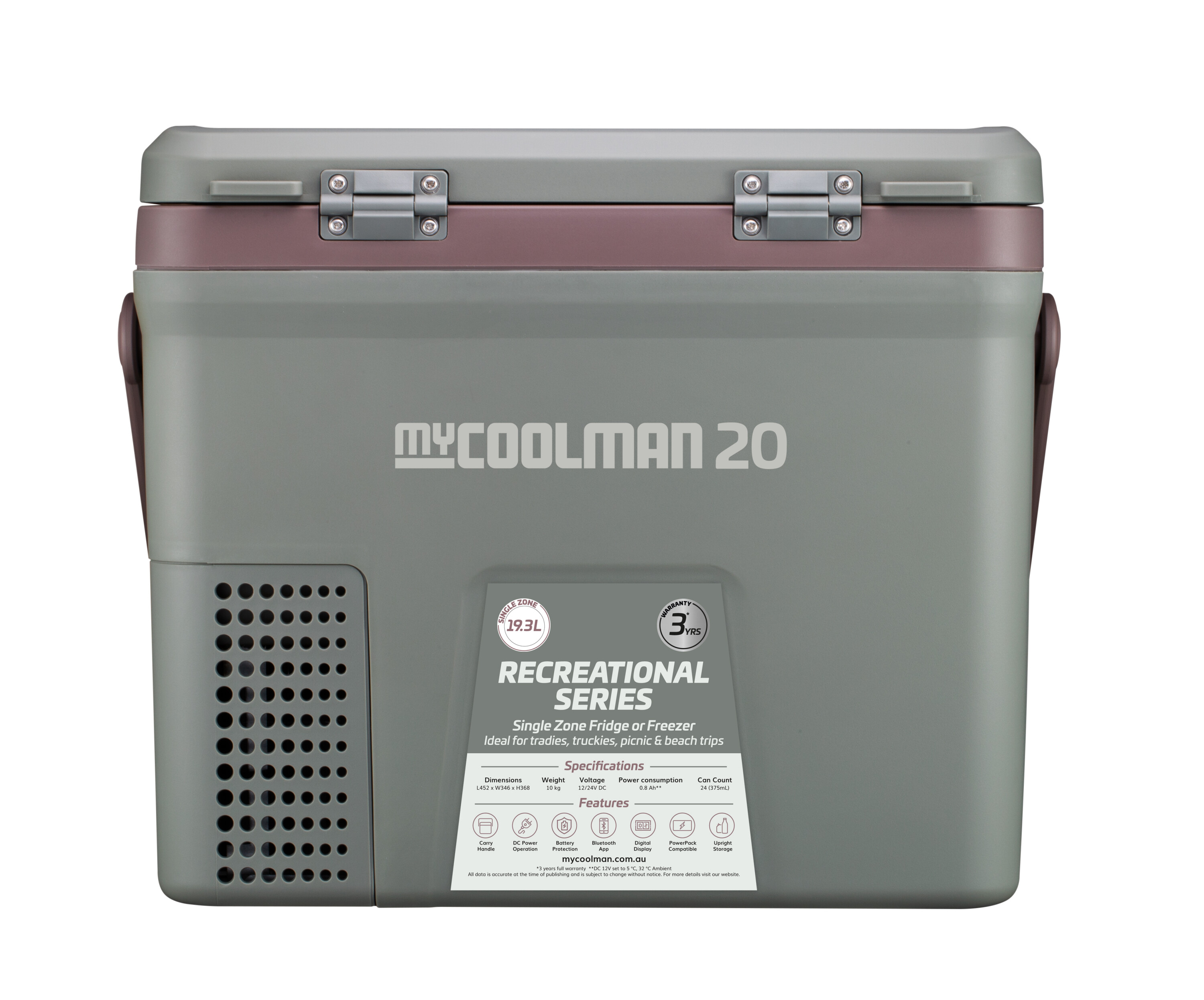
The 15- and 20-litre single-zone fridge/freezers feature a digital display, DC power operation with battery protection, a carry handle, and upright bottle storage. Both fridges can be controlled via the myCOOLMAN Recreational Bluetooth app, are compatible with the myCOOLMAN PowerPack, and come with a three-year warranty. An optional AC power cable is also available, so you can pre-chill the fridges on 240V power.
The 15-litre unit is lightweight, weighing only 9kg, and holds 18 (375ml) cans. The 20 (19.3-litre) fridge can hold 24 (375ml) cans. Depending on your requirements, both can be used as either a fridge or a freezer, as the temperature can go as low as -18 degrees celsius.
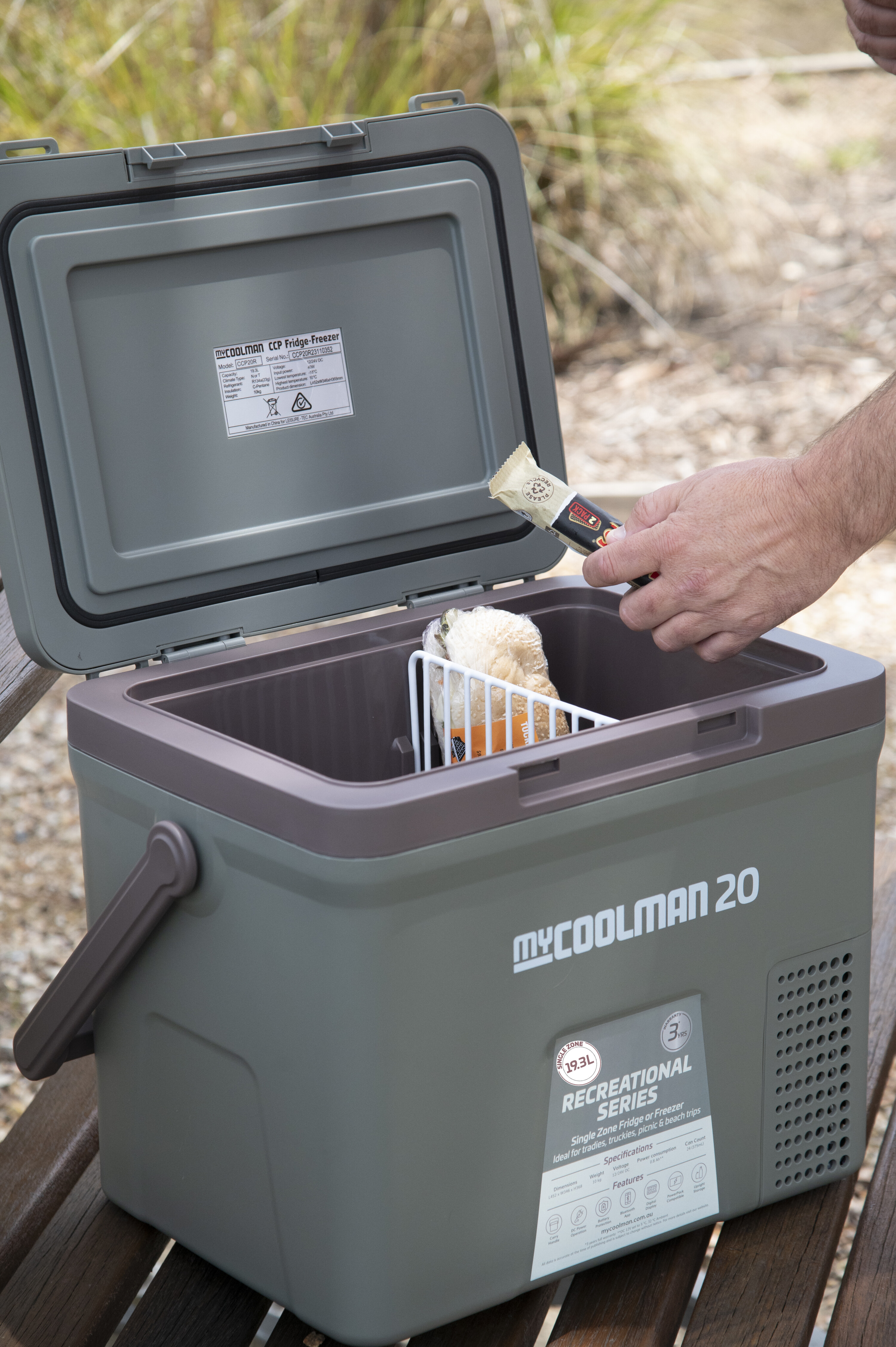
“As an Australian-based business growing internationally, we are extremely proud to have produced a new generation of fridges in our extensive range,” said Paul Widdis, Leisure-Tec Australia’s CEO. “The myCOOLMAN Recreational Series fridges/freezers are an easily portable lightweight fridge/freezer that can go anywhere.”
The myCOOLMAN Recreational Series 15 and 20 models are available online at www.mycoolman.com.au and leading recreational, 4WD and camping stores.
RRP
myCOOLMAN 15: $399 myCOOLMAN 20: $449
The 2024 Mitsubishi Pajero Sport is one of Australia’s go-to large SUV wagons, but how much can it tow and is it any good at it?
JUMP AHEAD
- What you need to know about the Mitsubishi Pajero Sport
- How much can the Mitsubishi Pajero Sport tow?
- How does it compare with its rivals?
Everything you need to know about 2024 Mitsubishi Pajero Sport
As a popular model for school runs, family holidays and the workday commute, the Pajero Sport is also a solid prospect for towing a boat or caravan.
The Mitsubishi Pajero Sport has soldiered on since arrival in 2015 as a SUV based on the Triton ute platform. It has been refreshed most recently in 2020, and has one further minor upgrade imminent before heading off into retirement in 2025.
While offered in 2WD, it’s the (slightly) more towing-capable 4×4 models we are considering here (3000kg for 2WD versus 3100kg for 4×4).
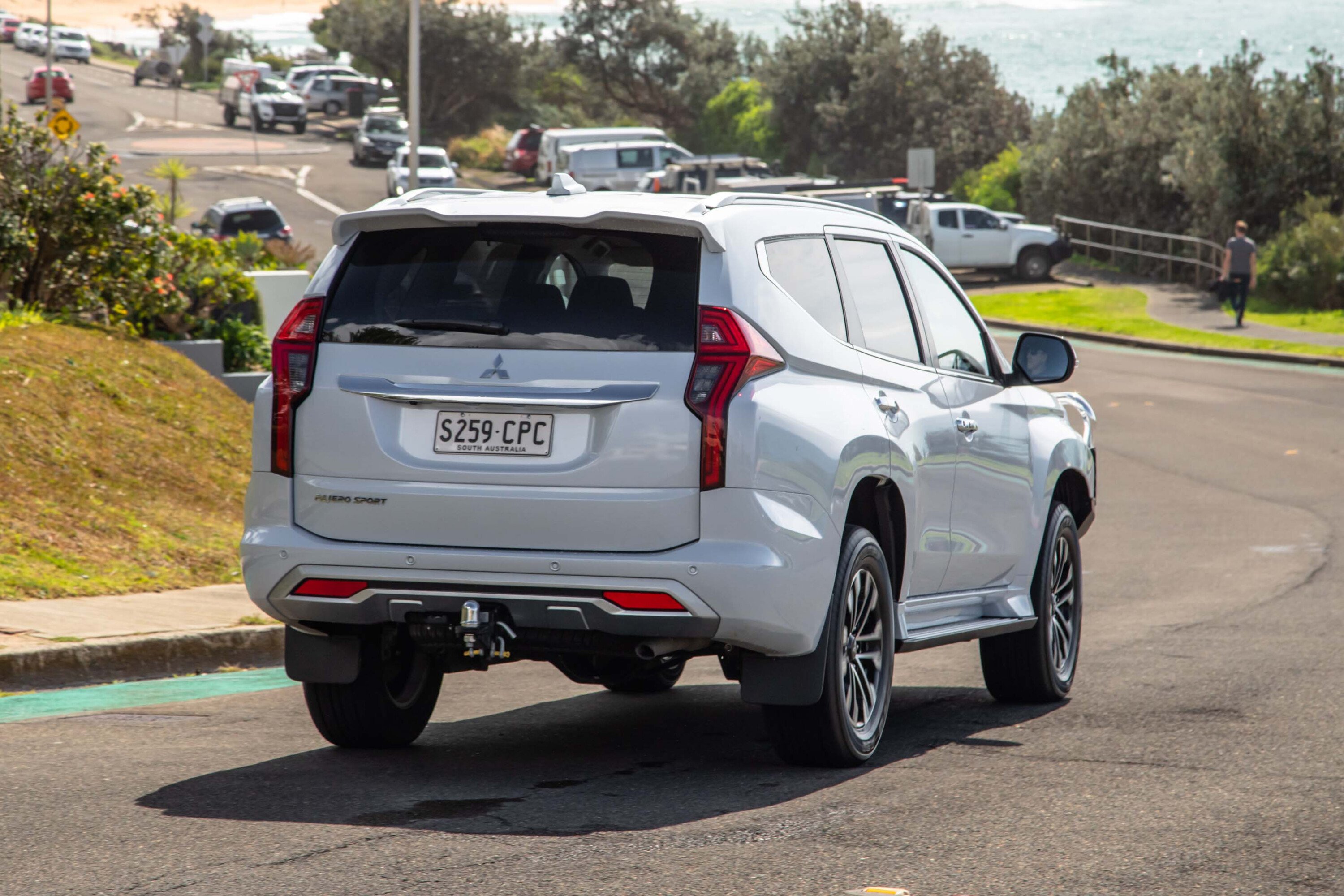
The standard safety equipment list for Pajero Sport is mostly up to date, which is more than can be said of its ANCAP safety rating.
The ANCAP five star result achieved in 2015 is now considered as not current by the safety body, as the way it measures the star ratings has changed since.
But on the positive side, the GLS spec and up include forward auto emergency braking (AEB) with pedestrian detection, adaptive cruise control, front and rear parking sensors, a low-resolution 360-degree monitor and a reversing camera.
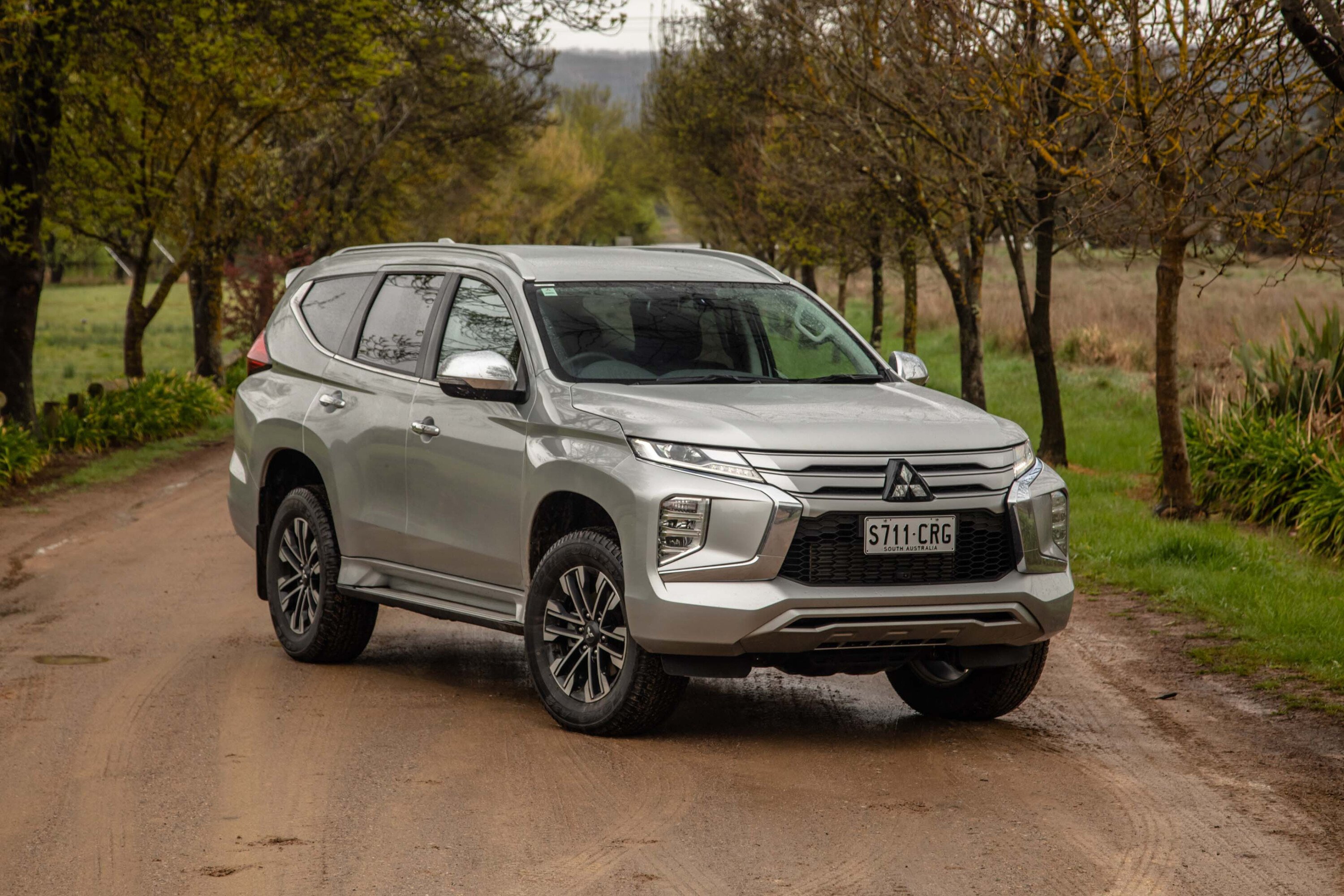
You’ll need to buy the Exceed or GSR to get the benefit of standard front parking sensors, blind-spot monitoring, lane-change assist and rear cross-traffic alert.
The Mitsubishi from GLX 4WD grade up offers the unique full-time/part-time Super Select II transfer case as standard, as well as features such as dusk-sensing bi-LED headlights, power-folding side mirrors, roof rails, rain-sensing wipers, keyless entry and push-button start, three 12-volt accessory ports, built-in sat-nav, side steps, rear-view camera, rear parking sensors, lane-change assist, autonomous emergency braking and a rear differential lock.
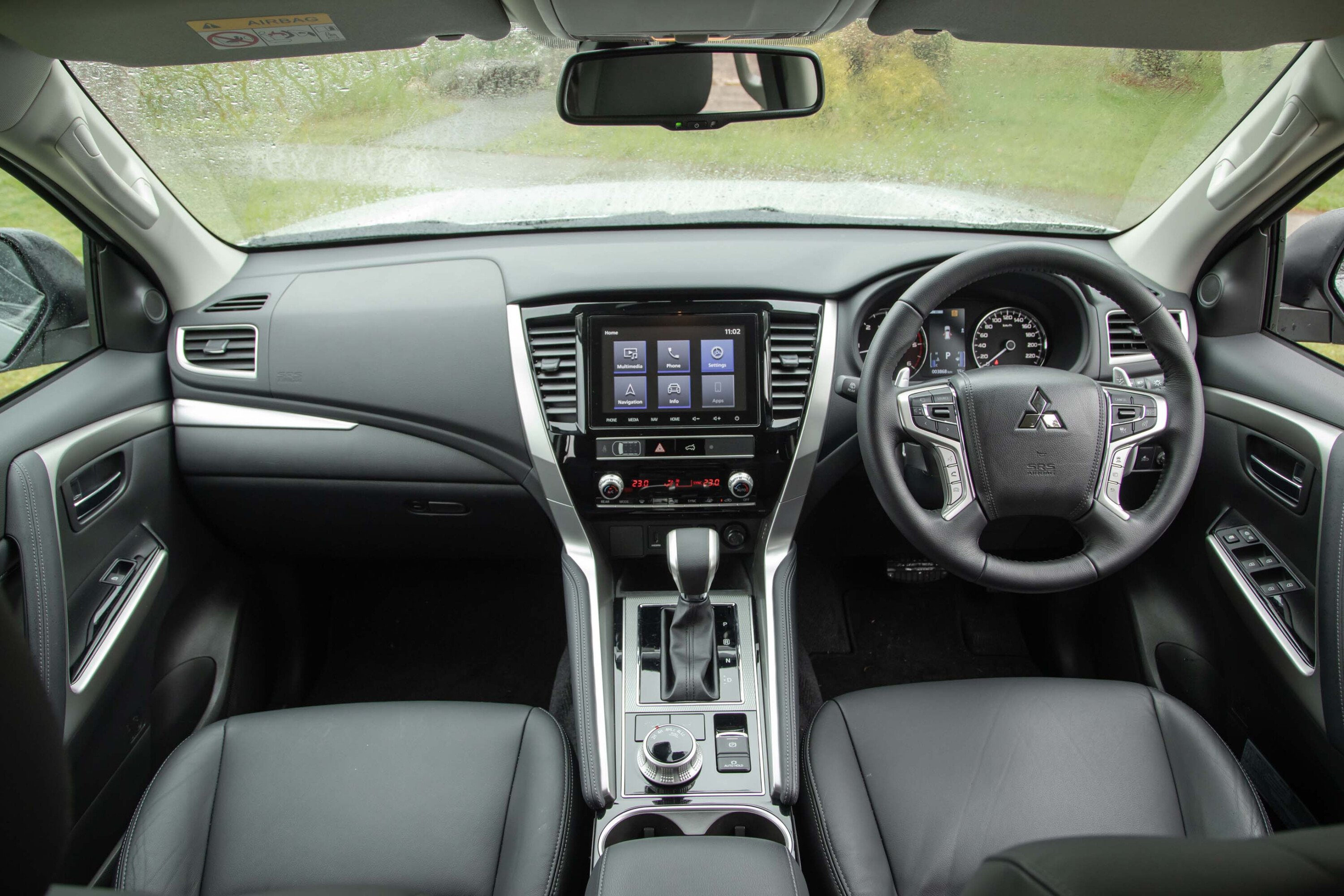
Get up to speed on the Pajero Sport
The stories below will give you a guide on everything to do with the 2024 Mitsubishi Pajero Sport. All fresh stories will be found on our Mitsubishi Pajero Sport page.
2024 Mitsubishi Pajero Sport coverage
How much can the 2024 Mitsubishi Pajero Sport tow?
In the early 1970s, we had a performance war as manufacturers tried to out-do each other with increasingly fast and powerful sedans; in the 2000s, we have had a towing capacity war.
The apparent target has been to reach a maximum 3500kg legal towing performance, and now most larger SUVs and mid-size utes can accomplish this. Of course the compromise, in some instances, is a drastically reduced legal payload maximum when towing a heavy trailer.
Some vehicles really seem to have to work hard up near 3500kg, and don’t feel all that stable when doing it. However, the Pajero Sport 4×4 has a 3100kg maximum braked towing capacity (with a 310kg maximum on the ball) or 750kg unbraked.
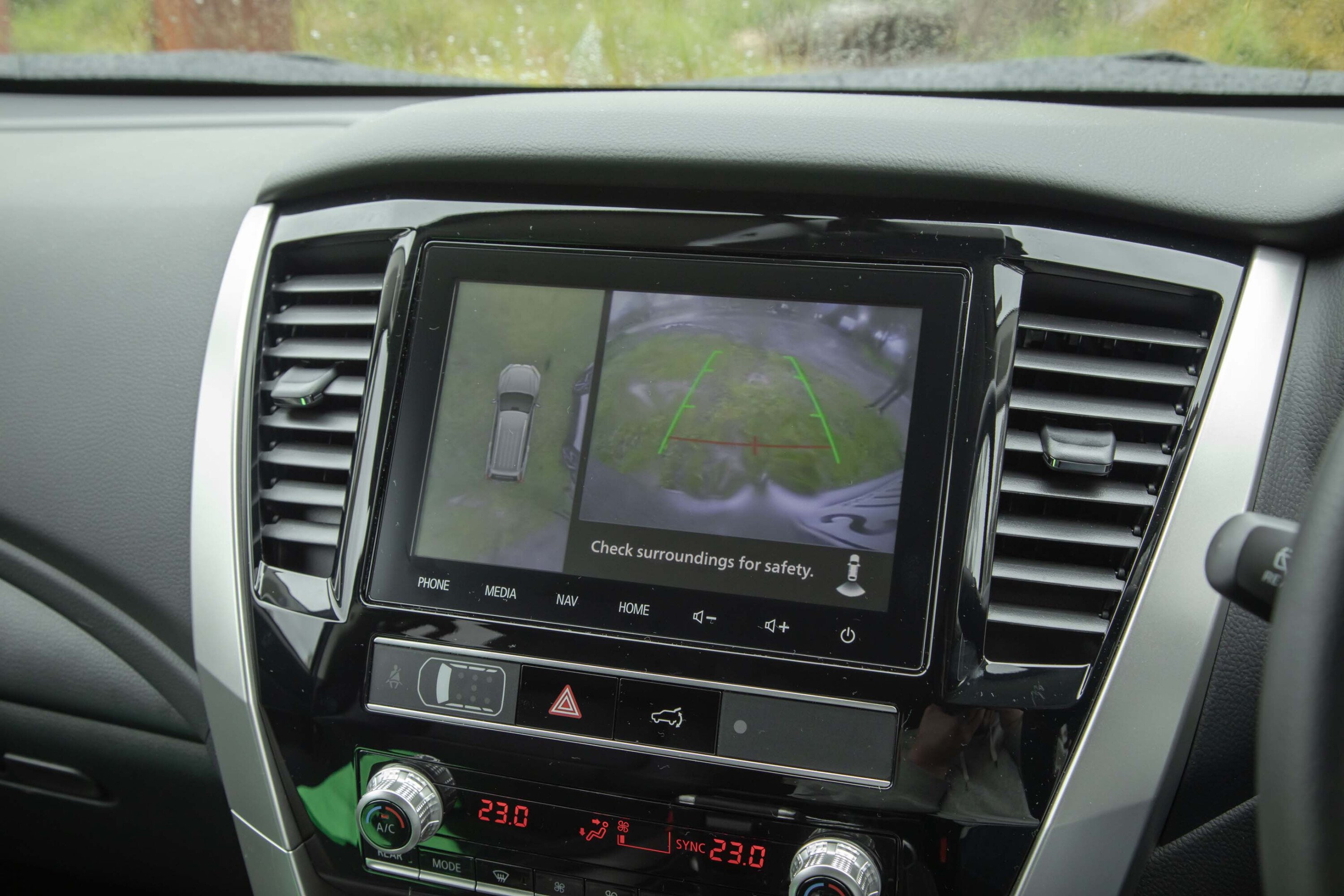
While this is 400kg less than some competitors, the bonus is that this is one of few vehicles that can carry a substantial payload as well as towing a heavy trailer at the same time.
It also suggests the company’s engineering department saw 3100kg as a realistic maximum and put their foot down. No doubt Mitsubishi marketing would have really preferred a 3500kg capacity.
On the heaviest, premium Exceed and GSR models, the Pajero Sport has a maximum 566kg payload, 2775kg GVM, and 5565kg GCM details. This means, if you had 310kg maximum towball download (which is then part of payload calculations), you have 256kg payload remaining.
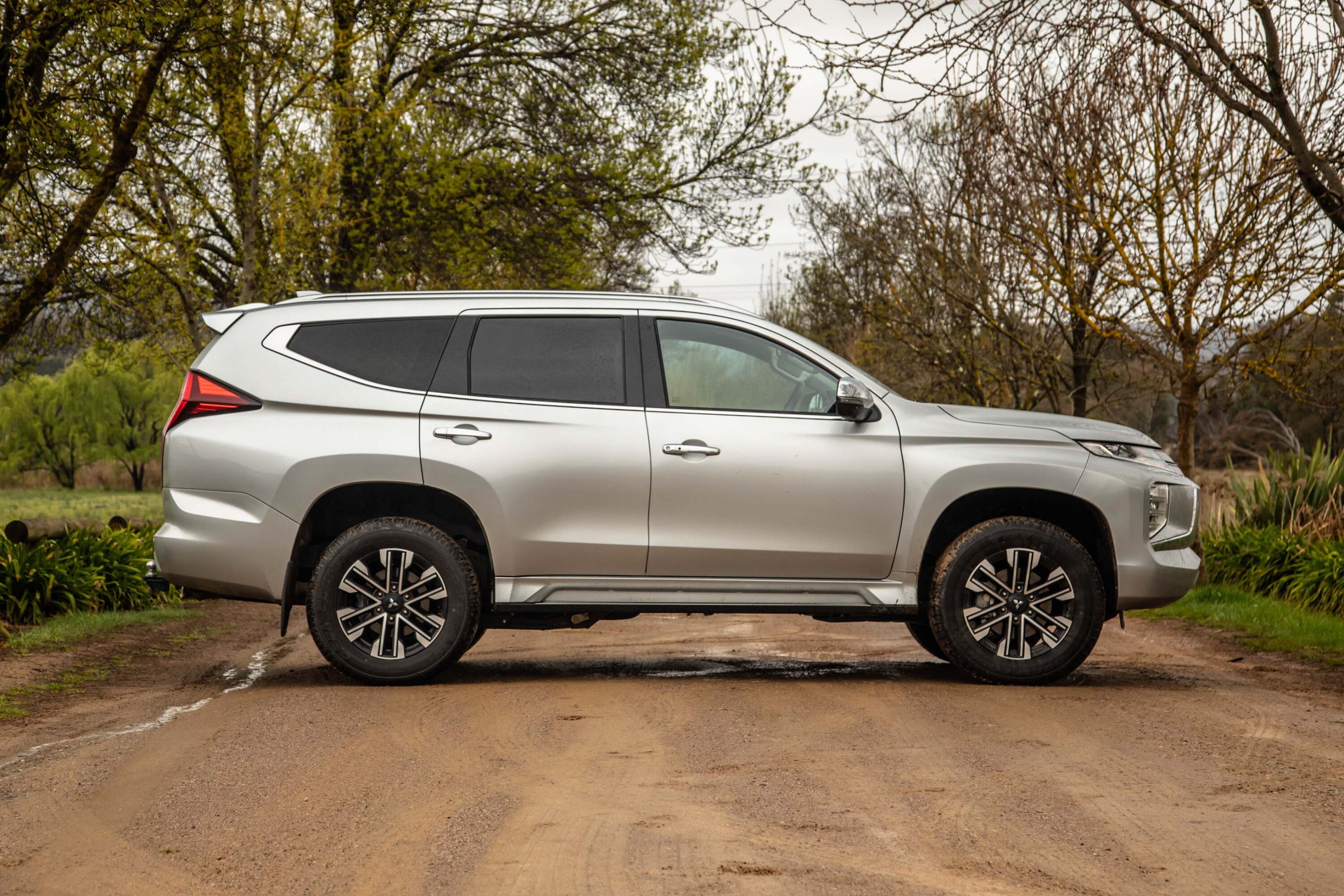
To not cross the 5565kg GCM threshold, you can tow up to 3100kg maximum – assuming that 310kg of the trailer mass is towball download.
With tow-capable SUVs and utes increasingly offering factory-fitted towing equipment as standard, it’s worth noting that the Pajero Sport is quite sparse on that front. Unlike some of the competition, a towbar is not standard on any Pajero Sport.
You must tick the $1495 (including fitting) towbar kit option if you want the Mitsubishi-approved gear to tow with, and $41 for the 50mm towball. Likewise, you need to delve into the accessories list to have a Redarc electric brake controller fitted by Mitsubishi ($689, including fitment).
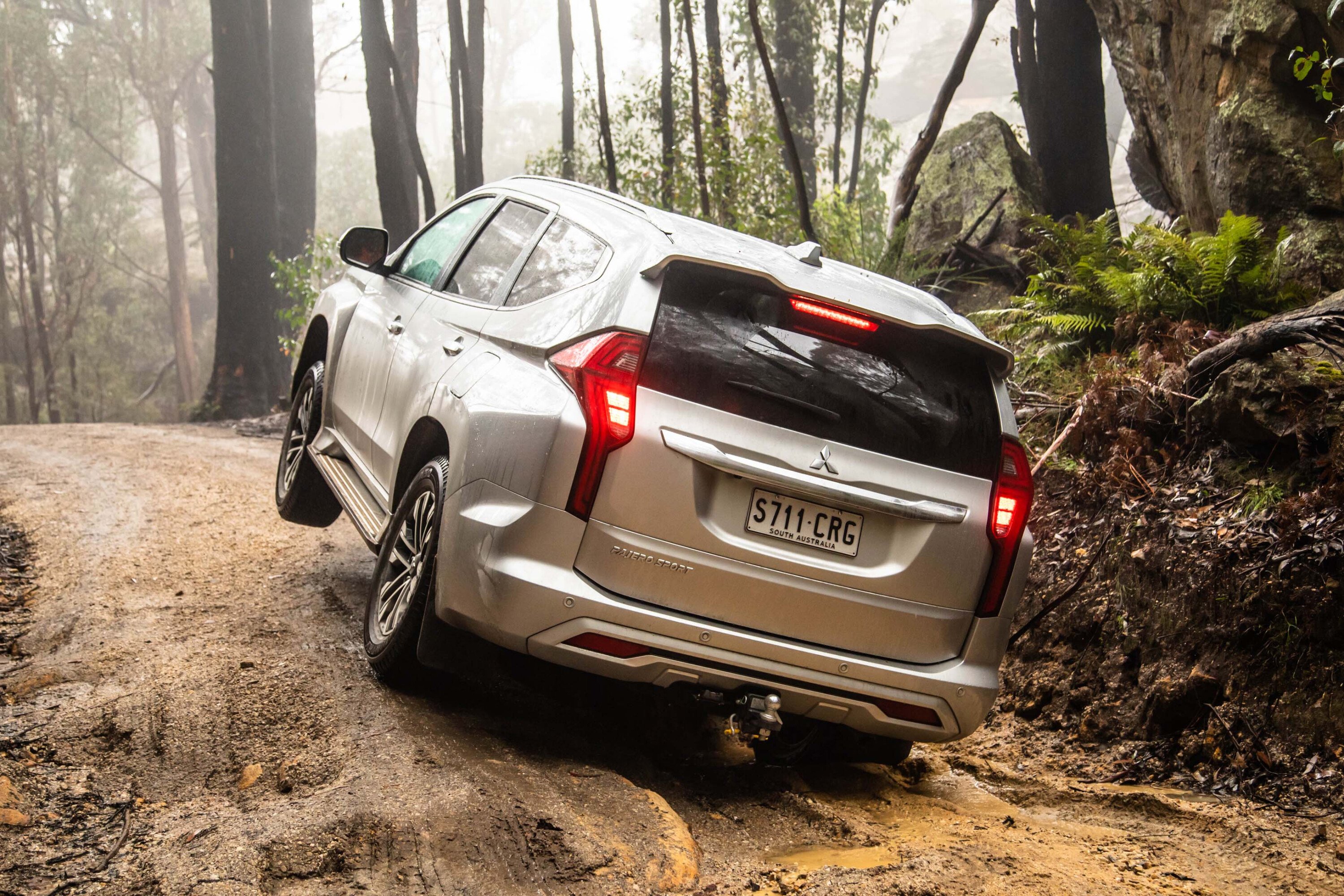
While Trailer Stability Assist (which senses trailer sway and controls individual wheel slip) is bundled into every Pajero Sport’s safety suite, there is little else in terms of dedicated towing assist features off the shelf.
With a heavy trailer approaching the 3100kg maximum behind it, the Pajero Sport’s 2.4-litre diesel has to work hard to maintain speed when climbing in hilly terrain. The engine’s peak torque not kicking in until a relatively high 2500rpm doesn’t help.
While not the quietest diesel, the transmission is smooth and there’s enough torque that the auto doesn’t have to get the engine into the powerband all the time when towing. With a balanced trailer behind, the Pajero Sport is not susceptible to yawing or pitching, and offer a comfortable towing ride.
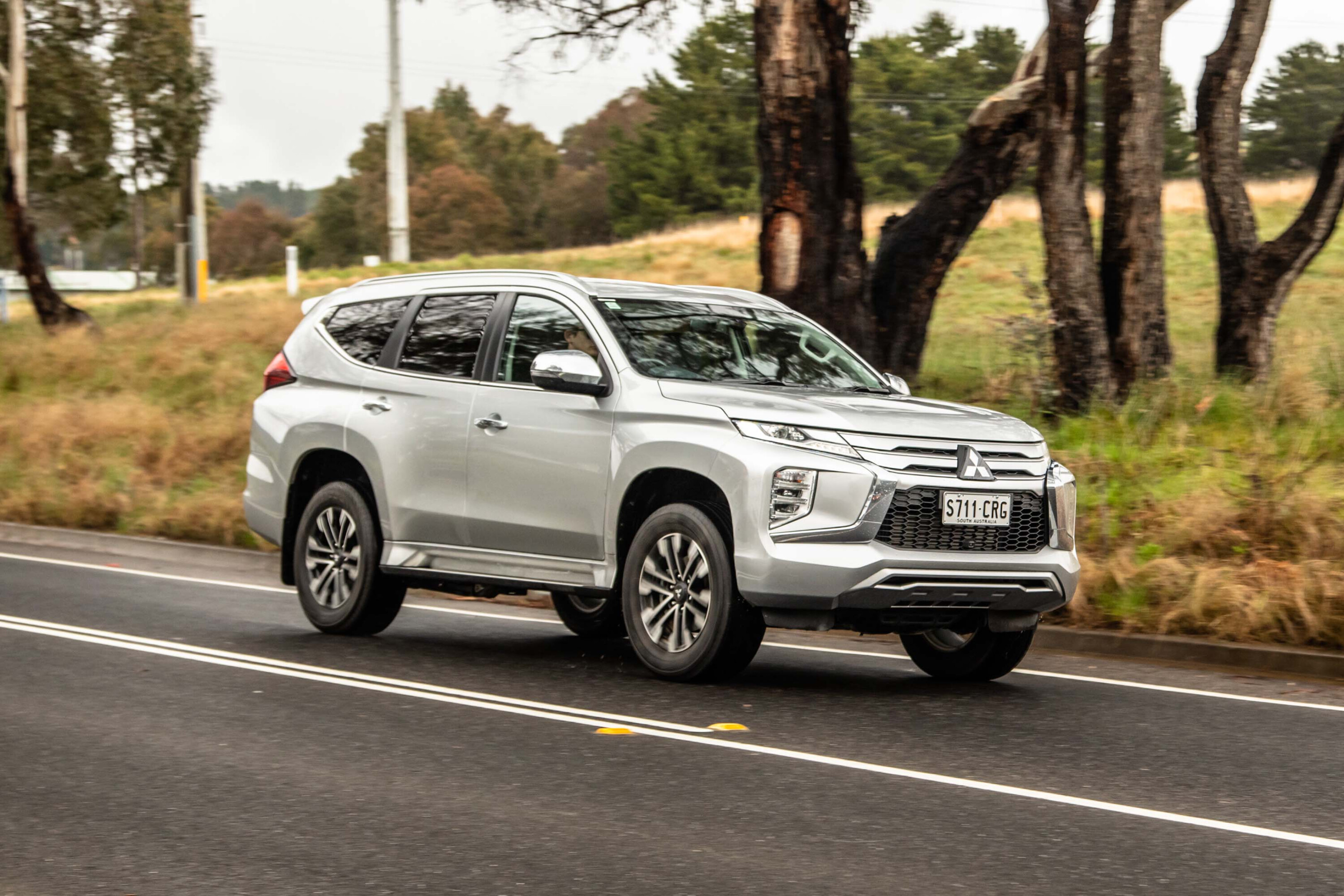
How does this match up with competitors?
There are a few large SUVs in the market with healthy towing capacity and buyers expect them to offer high levels of towing features and ability. The Pajero Sport needs to be on top of its towing game.
The Ford Everest, Isuzu MU-X, SsangYong Rexton and Toyota Fortuner are all key large SUV towing competitors. While all offer a four-cylinder turbo-diesel, the Ford also has a more powerful and torquey V6 diesel option.
The Everest is the best of the bunch here, in either four-cylinder or V6, while the Isuzu is a close runner-up as a tow vehicle. The Rexton is a capable tow vehicle, but is slightly lacking in terms of towing refinement and ride.
| Pajero Sport | Everest | MU-X | Rexton | Fortuner | |
|---|---|---|---|---|---|
| Engine | 2.4L TD4 | 2.0L TTD4 | 3.0L TD4 | 2.2L TD4 | 2.8L TD4 |
| Power | 133kW | 154kW | 140kW | 148kW | 150kW |
| Torque | 400Nm | 500Nm | 450Nm | 441Nm | 500Nm |
| Towing capacity | 3100kg | 3500kg | 3500kg | 3500kg | 3100kg |
| Towball download | 310kg | 350kg | 350kg | 350kg | 280kg |
| Kerb weight | 2209kg | 2396kg | 2155kg | 2130kg | 2185kg |
| GVM | 2775kg | 3100kg | 2800kg | 2960kg | 2800kg |
| GCM | 5565kg | 6250kg | 5900kg | 6460kg | 5550kg |
One of the good things about starting off with a base model vehicle is that you can improve the look of it tenfold simply by replacing the OE wheels and tyres. And so it was with our Ford Everest build.
Even though the Everest Ambiente comes with factory alloy wheels, they are pretty daggy and the original highway tyres were never going to cut it out on the tracks. Enter two of our favourite suppliers: Maxxis Tyres and Wheel Pros.
We chose to go with an all-terrain in the Maxxis RAZR range, with a set of RAZR AT811s in the LT275/70R17 size. Just a plus-one upsize from the factory 255/70 17s that came from Ford, and tyres that would easily fit within the fenders without resorting to flares or modifications of the inner guards.
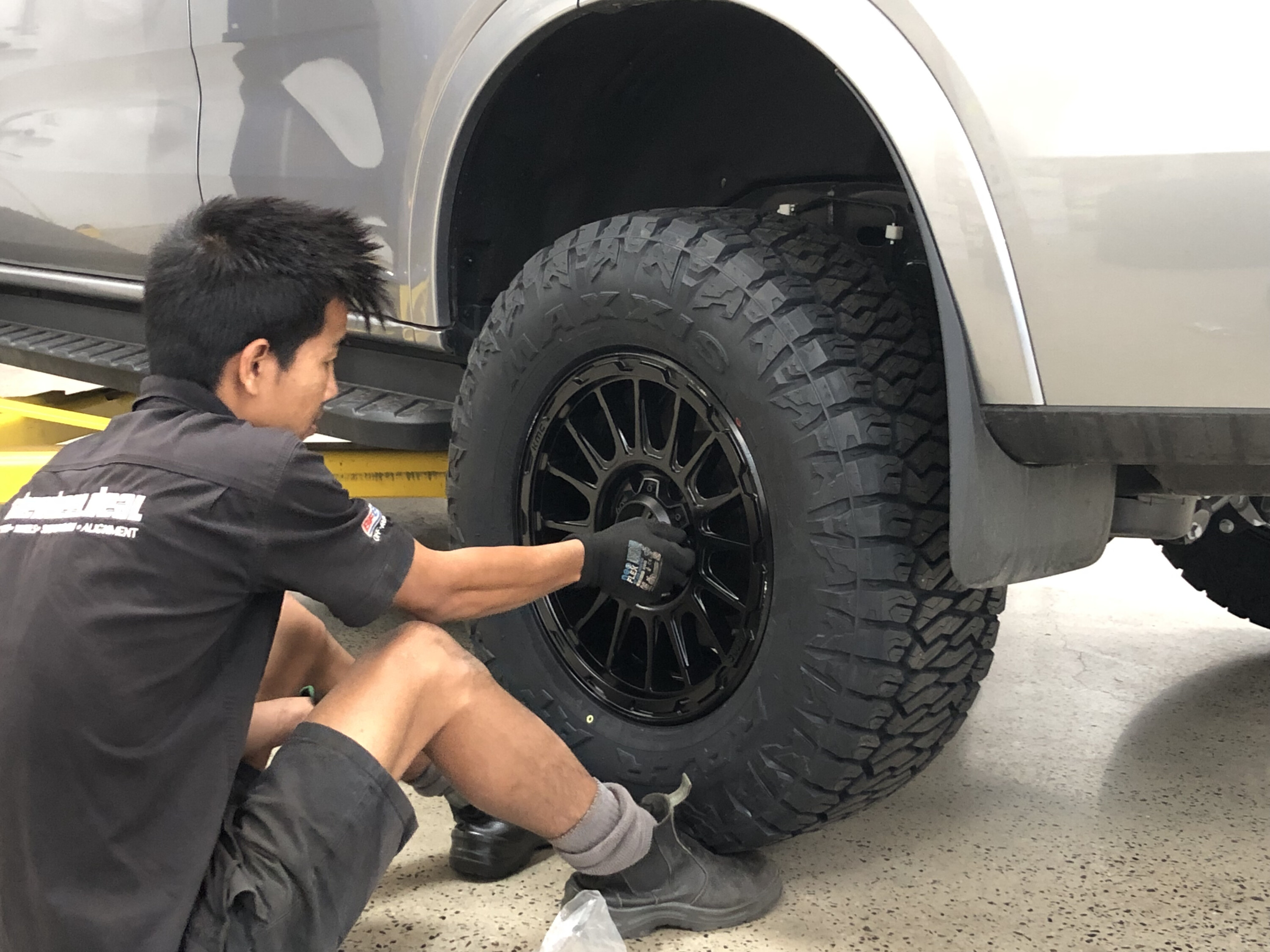
They are only around 25mm wider than the OE tyres and a bit taller to give more ground clearance, but, most importantly, being of LT construction and with Maxxis’ great rubber compound that we’ve grown to love, we know they’ll be durable.
Diving into the Wheel Pros website is a bit like being a kid in a candy store, as there are literally thousands of wheel options to choose from. We always look for wheels that are not overly detailed, with simple designs that will be easy to maintain while still looking great on the car. As our Everest is aluminium in colour, we wanted anthracite or matte black wheels and not a style we have used before.
The positive offset of the OE wheels makes it hard to keep them in the guards and limits options, but we ended up selecting a set of KMC ‘Impact’ wheels in 17X8 6X5.5 with a 35mm backspace and satin black in colour. We reckon anthracite or light grey would have looked better with the silver car, but the black ones look pretty good. The KMC wheels are cast alloy and weigh in at around 12kg a pop, so they go a small way to offset the extra weight of the LT tyres.
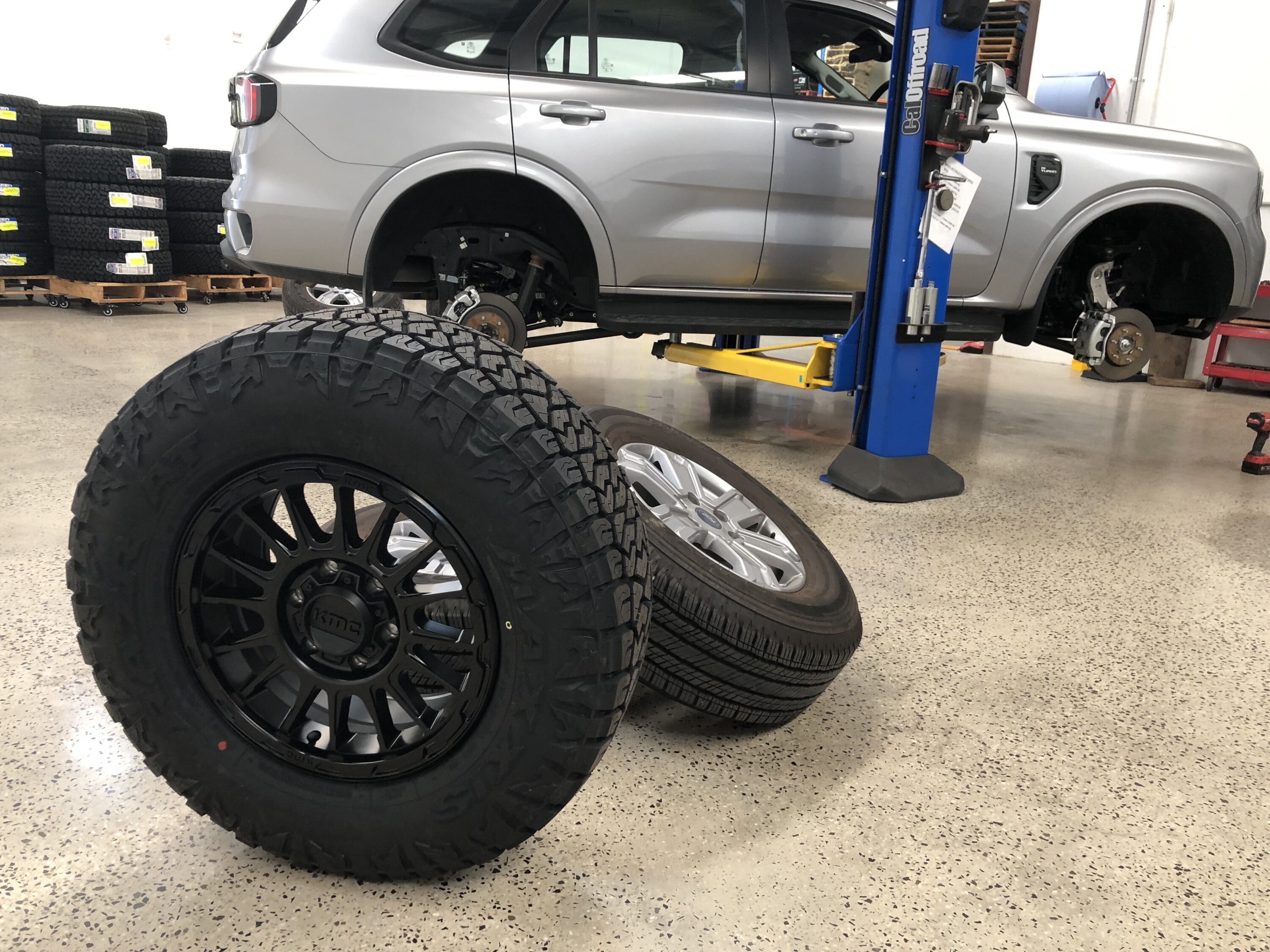
Fitting was done at The Wheel Deal in Melbourne’s eastern suburbs, and when we walked in and saw so many mud-terrain, 35- and 37-inch tyres, and bead-locked wheels in the workshop, we knew we were in the right place. These guys are 4×4 and off-road specialists and knew just what we were after.
The guys took care of fitting and balancing the new wheel and tyres, and it was nice to see a torque wrench come out when it came time to finalise the fitment. A thoroughly professional wheel and tyre shop for all of your 4×4 needs.
RRP
Wheels: $279 each (Wheel Pros AU) Tyres: $390 each (The Wheel Deal)
A Chinese ute from a relatively unknown brand has been spied at Ford Australia’s engineering headquarters in Melbourne – the same facility where the Falcon, Territory, Ranger and Everest were developed.
The JMC Dadao ute – also known as the JMC Grand Avenue – was unveiled in March 2023 based on an all-new frame platform with petrol or diesel engines and an electric version set to follow.
“As part of our work as Ford’s engineering, development, and design hub for the region, we regularly evaluate products from other manufacturers, including those not sold in Australia,” said a Ford Australia spokesperson.
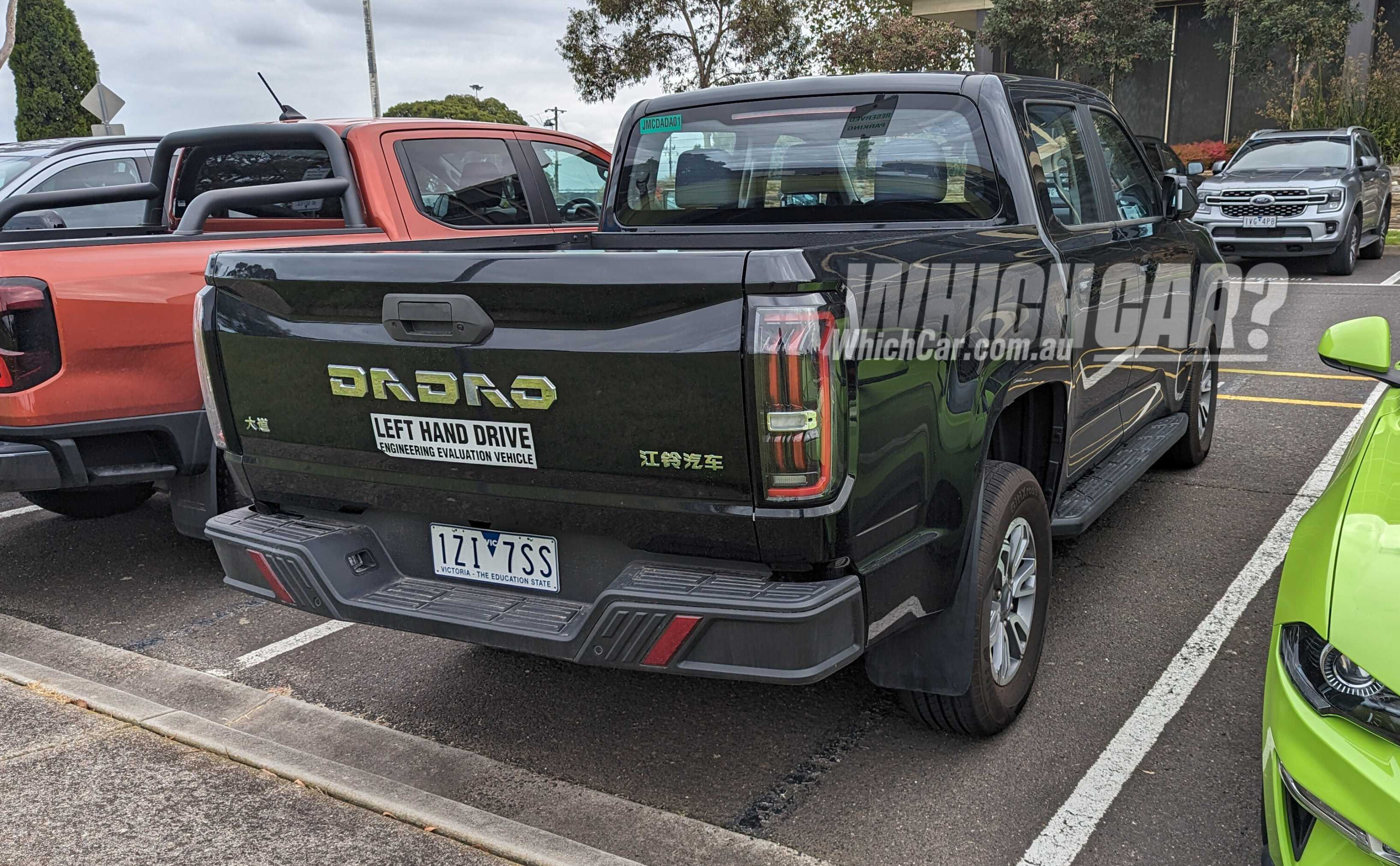
Like previous Chinese-market Fords spotted in Australia, the Dadao is here as the brand’s Melbourne engineering base – known as the Asia Pacific Product Development Centre – is also responsible for evaluating foreign products, not just those bound for local showrooms.
Under the bonnet, the petrol Dadao features a version of Ford’s 2.3-litre turbocharged EcoBoost four-cylinder, which is also fitted to the Ranger, Everest, Mustang, Focus ST and Volkswagen Amarok.
This is due to Ford’s joint venture with JMC – short for Jiangling Motors Corporation – in China, which has led to several co-developed vehicles since the mid-1990s, including the Ford Territory small SUV that bears no connection to the Australian model, apart from borrowing its name.
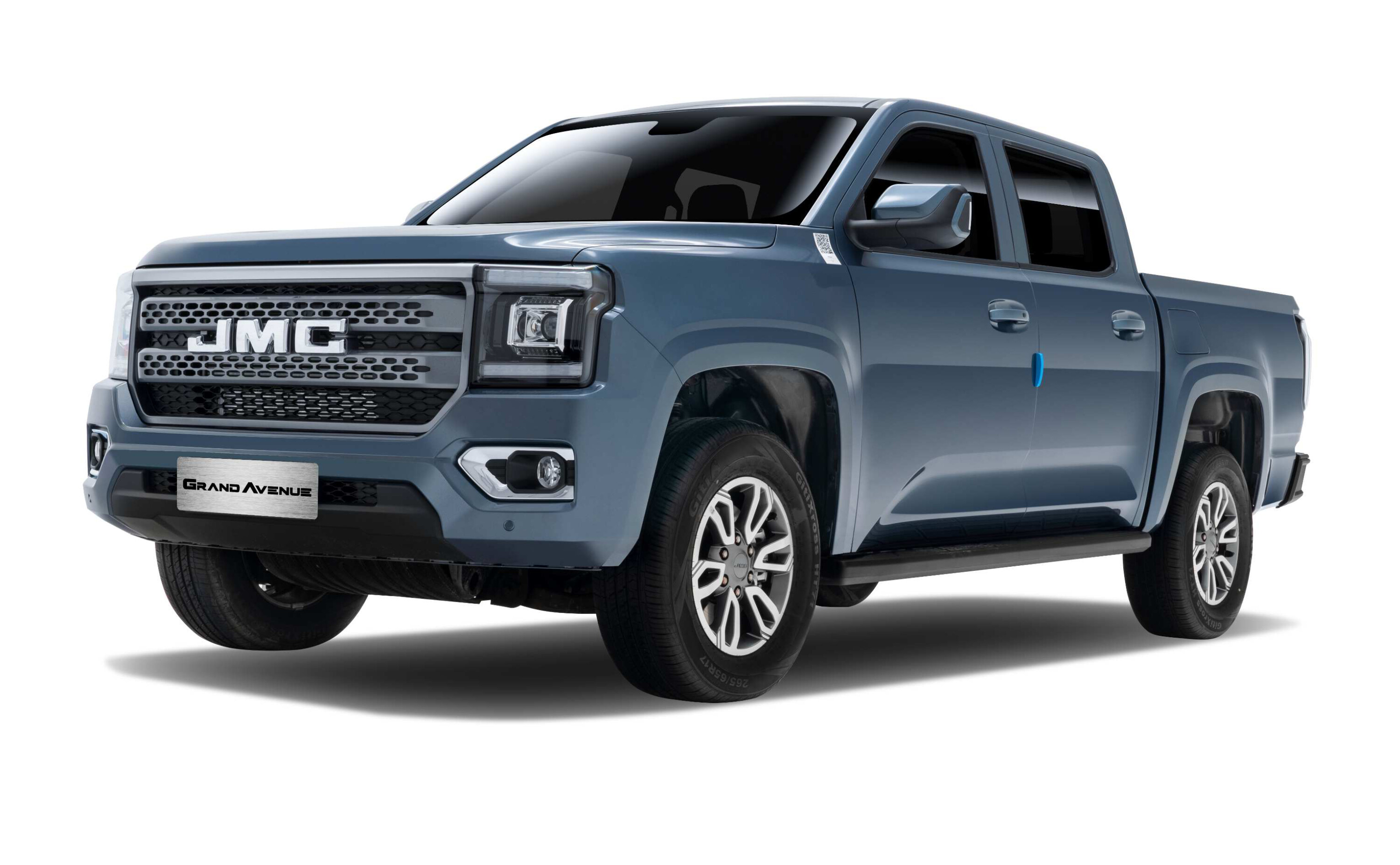
It is not to be confused with JAC, an unrelated Chinese brand that has re-launched in Australia with its new T9 diesel ute.
The 2.3-litre turbo-petrol in the JMC Dadao produces 180Nm and 400Nm – compared to 222kW and 452Nm in the Volkswagen Amarok in Australia. It is matched to a six-speed Getrag MT82 manual – also found in some Ford products – or an eight-speed ZF torque-converter automatic.
A diesel version of the JMC Dadao is also available, featuring a 130kW/450Nm 2.3-litre four-cylinder matched to the same six-speed manual or eight-speed auto as the turbo-petrol model.
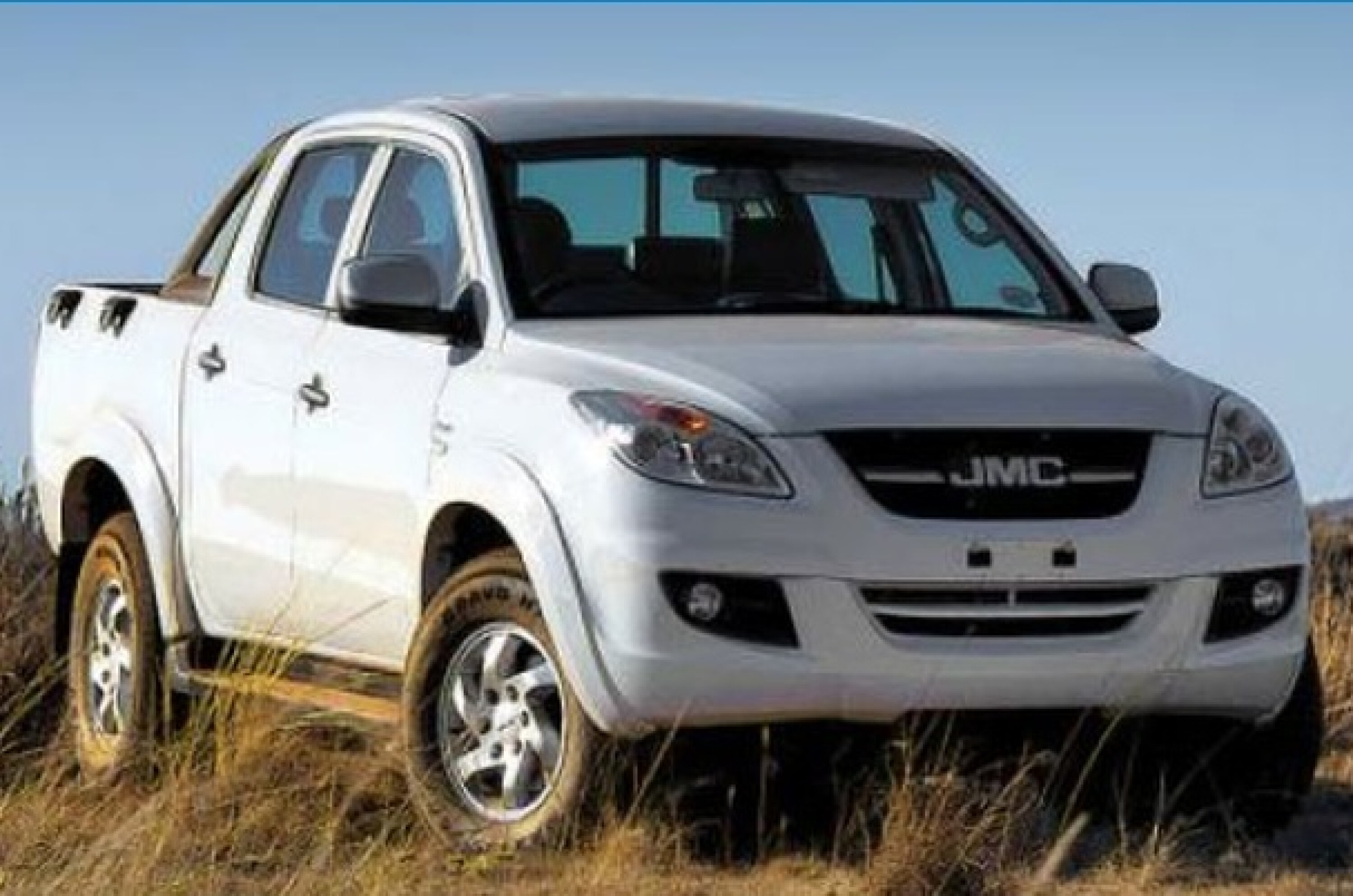
The JMC Vigus dual-cab ute was sold in Australia between 2014 and 2017 before its factory-backed distributor, JMIE Australia, entered voluntary administration in mid-2018.
Like the modern Dadao, the JMC Vigus also featured a version of Ford’s EcoBoost turbo-petrol motor.
JMC has not announced any plans to return to the Australian new-car market.
Running wiring from your roof rack into your 4×4 can be a pain in the butt, particularly with modern vehicles and all the complexities they bring.
You might need to run wiring from the roof for all manner of items you may have up there; not just light bars but reversing and camp lights, and any solar connections that you have running to panels on the rack. You could end up with a thick wad of cables needing to run down to power and switches.
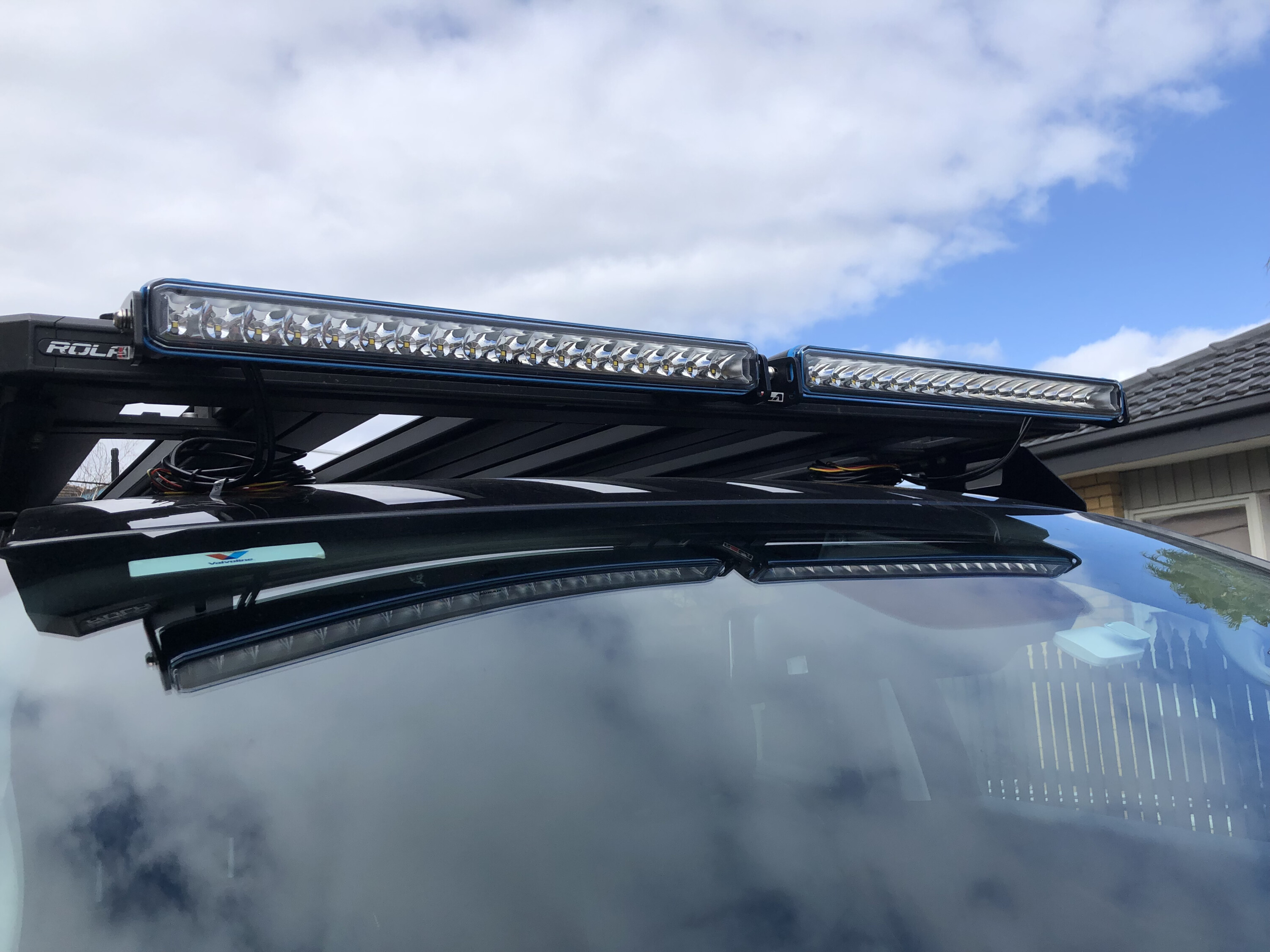
There are all manner of ways of doing this from drilling holes in your roof (not recommended) to running them down through the tailgate on a wagon, tapping into your intake snorkel and running them to the engine bay that way, or just running them down the inside external edge of your snorkel.
When we fitted the Narva EX2 light bars to the Rola Titan Tray on our Ranger, we used this clever wiring concealer from Stedi. It is simply a 1200mm strip of rubber moulding just like you’d find on OE door seals, which you cut to the desired length and stick to the edge of your windscreen with the supplied adhesive tape.
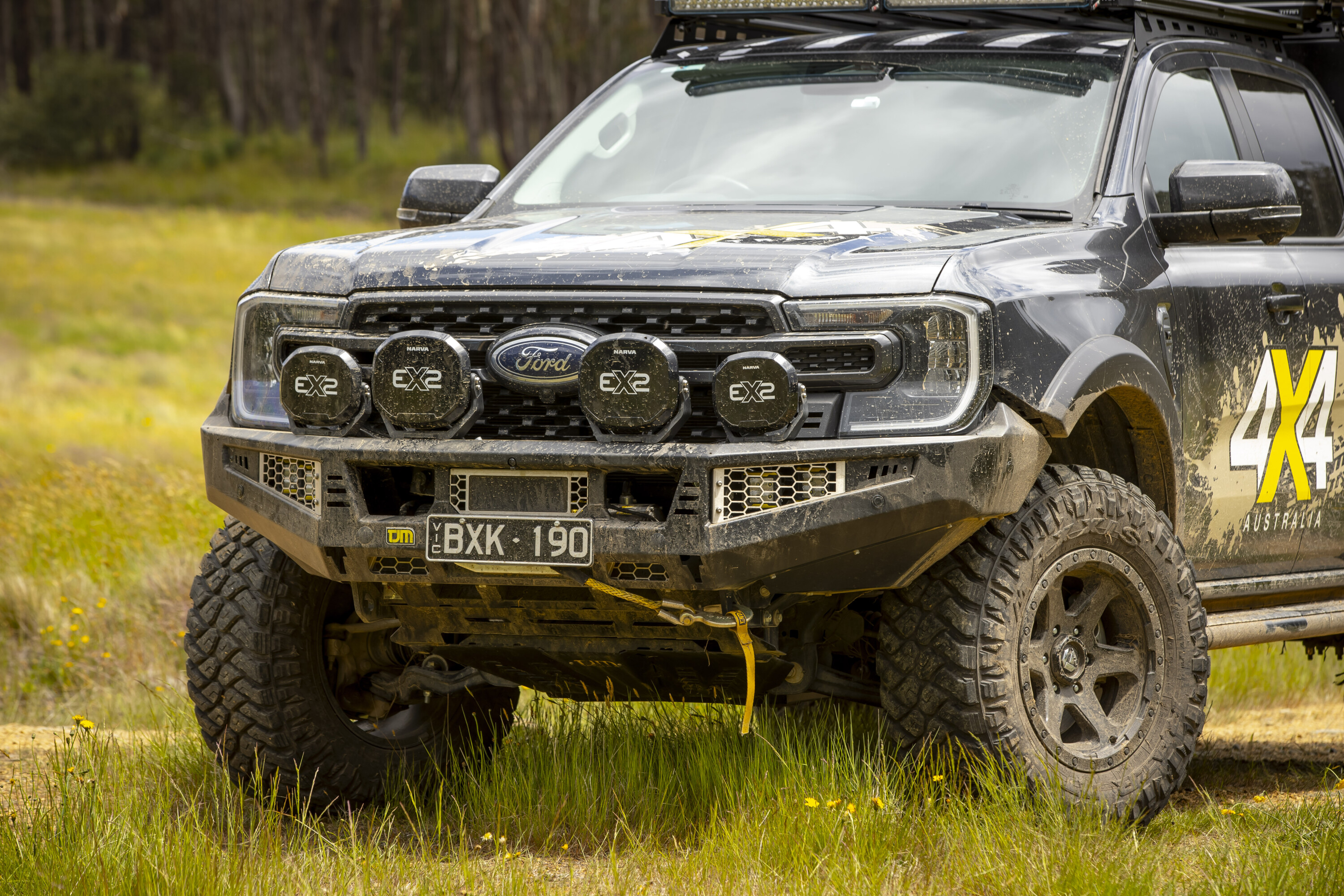
You run your wires down through it and into your engine bay where you can pick up a power source. The channel has around 10mm of inside diameter so you can get a few wires though there, and it locks closed once you tuck it in. It really couldn’t be any easier and the black rubber strip is barely noticeable where it runs down the side of the screen.
